

JEAN-LOUIS-ERNEST MEISSONIER LA BARRICADE , 1848 (THE BARRICADE)








GUSTAVE LE GRAY (ATTRIBUTED)
TAS DE PAVÉS , FROM ALBUM REGNAULT , CA. 1849–1855 (PILE OF COBBLESTONES)





1
CHARLES FRANÇOIS THIBAULT






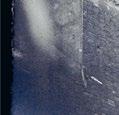












LA BARRICADE DE LA RUE SAINT-MAUR-POPINCOURT AVANT L’ATTAQUE PAR LES TROUPES DU GÉNÉRAL LAMORICIÈRE, LE DIMANCHE 25 JUIN 1848 , 1848 (THE BARRICADE OF THE RUE SAINT-MAURPOPINCOURT BEFORE THE ATTACK BY GENERAL LAMORICIÈRE’S TROOPS, SUNDAY, JUNE 25, 1848)






2
CHARLES FRANÇOIS THIBAULT LA BARRICADE DE LA RUE SAINT-MAUR-POPINCOURT APRÈS L’ATTAQUE PAR LES TROUPES DU GÉNÉRAL LAMORICIÈRE, LE LUNDI 26 JUIN 1848 , 1848 (THE BARRICADE OF THE RUE SAINT-MAURPOPINCOURT AFTER THE ATTACK BY GENERAL LAMORICIÈRE’S TROOPS, MONDAY, JUNE 26, 1848)


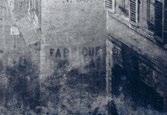





















3
HIPPOLYTE BAYARD













RUE ROYALE ET RESTES DES BARRICADES DE 1848 , 1848 (RUE ROYALE AND THE REMAINS OF THE BARRICADES OF 1848)



























4




 WILLIAM EDWARD KILBURN
WILLIAM EDWARD KILBURN
5
THE CHARTIST MEETING ON KENNINGTON COMMON, 10 APRIL 1848 , 1848
UNKNOWN
PHOTOENGRAVING BASED ON A DAGUERREOTYPE OF CHARLES FRANÇOIS
THIBAULT, FROM THE MAGAZINE
L’ILLUSTRATION , NO. 279–280, 1848



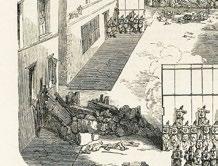


UNKNOWN L’ATTAQUE À L’ABRI DES

BOUCLIERS , FROM THE MAGAZINE L’ILLUSTRATION , NO. 285, 1848 (THE ATTACK UNDER COVER OF SHIELDS)


6
UNKNOWN






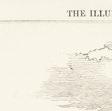

PHOTOENGRAVING BASED ON A DAGUERREOTYPE OF WILLIAM EDWARD KILBURN, FROM THE MAGAZINE THE ILLUSTRATED LONDON NEWS , APRIL 15, 1848






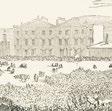

7




































THOMAS THURLOW STREET SCENE, BOY IN A DONKEY CART , CA. 1847 9









10
ROBERT P. NAPPER GROUP OF GYPSIES: ANDALUSIA , FROM THE ALBUM VISTAS DE ANDALUCÍA , CA. 1860
JOSEPH KORDYSCH
















11
MENDIANT, PODOLIE , BEF. 1886 (OLD BEGGAR FROM PODOLIA)
GUSTAVE DE BEAUCORPS










GRENADE, GITAN ASSIS JOUANT DE LA GUITARE , CA. 1858




(GRANADA: SITTING GYPSY PLAYING GUITAR)






12
CHARLES CLIFFORD







VISTA DE LA PLAZUELA Y PUERTA PRINCIPAL DE ENTRADA AL CAPRICHO CON GRUPO DE DEPENDIENTES , FROM THE ALBUM VISTAS FOTOGRAFIADAS DE LA ALAMEDA, DEL PALACIO DE MADRID, DEL DE GUADALAJARA Y DE LA CASA DE LOS MENDOZAS EN TOLEDO (HOY INCLUSA) PERTENECIENTES AL EXMO. SR. DUQUE DE OSUNA Y DEL INFANTADO , CA. 1856 (VIEW OF THE LITTLE PLAZA AND MAIN ENTRANCE TO CAPRICHO)

13
CHARLES NÈGRE
























LES RAMONEURS EN MARCHE , 1851–1852 (CHIMNEY SWEEPS ON THE MARCH)

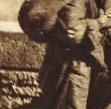

14








15
JOHN THOMSON BEGGARS , FROM THE ALBUM FOOCHOW AND THE RIVER MIN , CA. 1871
CHARLES MARVILLE PERCEMENT DE L’AVENUE DE L’OPÉRA: BUTTE DES MOULINS (DE LA RUE SAINT-ROCH) , 1876–1877 (BUILDING THE AVENUE DE L’OPÉRA: THE BUTTE DES MOULINS FROM RUE SAINT-ROCH)












17









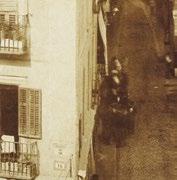





18



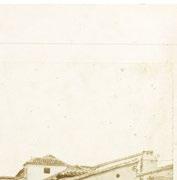





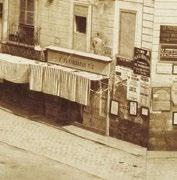





 CHARLES CLIFFORD
CHARLES CLIFFORD
19
PUERTA DEL SOL, 2ª VISTA , 1857 (PUERTA DEL SOL, 2ND VIEW)
THOMAS ANNAN



CLOSE, NO. 37 HIGH STREET , 1868–1871
FERDINAND VON STAUDENHEIM
STADTBEFESTIGUNG: LINIENWALL—SPIELENDE KINDER , FROM THE SERIES LEBEN UND TREIBEN AUF DEN LINIENWÄLLEN , CA. 1890 (CITY FORTIFICATION: LINIENWALL— CHILDREN PLAYING)

AUGUST STAUDA

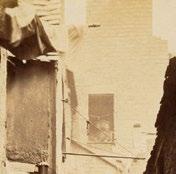
NUSSGASSE 1—BLICK GEGEN VEREINSSTIEGE , 1906 (1 NUSSGASSE—VIEW WITH THE STAIRS OF THE CLUB)






20











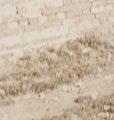















21
FREDERIC BALLELL LA RAMBLA: ENLLUSTRADOR DE SABATES , 1907–1908 (LA RAMBLA: BOOTBLACK)









EUGÈNE ATGET SUR LES QUAIS—LA SIESTE , 1904 (ON THE BANKS—THE NAP)



22
UNKNOWN
WIEN, SCHLAFENDE , FROM THE POSTCARD SERIES WIENER STRASSENLEBEN , 1906–1907 (VIENNA: SLEEPING)



UNKNOWN


SCHUHPUTZER , 1906–1907 (BOOTBLACK)













23






















UNKNOWN

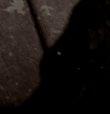



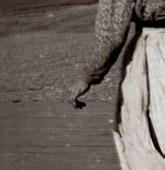
WRANGELSTRASSE 11, 4 TREPPEN , FROM THE PUBLICATION UNSERE WOHNUNGS-ENQUETE IM JAHRE 1906/7 , EDITED BY ALBERT KOHN, 1907–1908 (11 WRANGELSTRASSE, STAIR 4)
HEINRICH ZILLE
FRAU MIT KORB VOR DER SILHOUETTE DER WESTEND-KOLONIE , 1899 (WOMAN WITH BASKET BEFORE A SILHOUETTE OF THE WESTEND-KOLONIE)




25
UNKNOWN
PRESOS TRABAJANDO EN LA CARRETERA DE MADRID A VALENCIA POR LAS CABRILLAS , CA. 1850–1851 (PRISONERS WORKING IN THE CABRILLAS ROAD FROM MADRID TO VALENCIA)
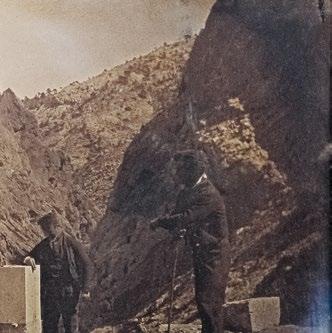

PAGES 28–29: CHARLES CLIFFORD PRESA DEL PONTÓN DE LA OLIVA , 1855 (PONTÓN DE LA OLIVA DAM)

27












NADAR

CATACOMBES DE PARIS: MANNEQUIN Nº 1 , CA. 1861 (PARIS CATACOMBS: MANNEQUIN NO. 1)










30





TIMOTHY O’SULLIVAN AT WORK: GOULD & CURRY MINE , 1868 31
UNKNOWN

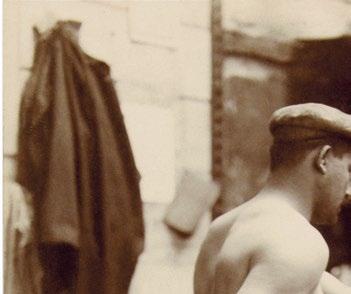
WHEEL TIRE TRANSPORT, FROM THE SERIES WORK SCENES FROM THE KRUPP WORKS AT ESSEN , 1899
LOUIS-ÉMILE DURANDELLE


ORNAMENTAL SCULPTURE, FROM THE PUBLICATION LE NOUVEL OPÉRA DE PARIS: STATUES DÉCORATIVES, GROUPES ET BAS-RELIEFS , 1875–1876

32


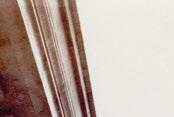
















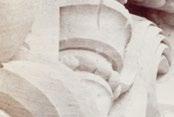

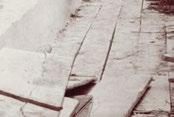






33










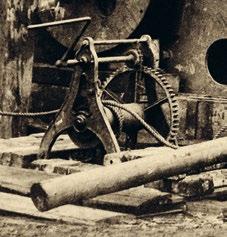


34








 ROBERT HOWLETT
ROBERT HOWLETT
35
THE GREAT EASTERN: WHEEL AND CHAIN DRUM , 1857
FREDERIC BALLELL LA MAQUINISTA TERRESTRE Y MARÍTIMA (FACTORY), CA. 1910




UNKNOWN


FACTORY WORKER, FROM THE SERIES WORK SCENES FROM THE KRUPP WORKS AT ESSEN , 1899










36
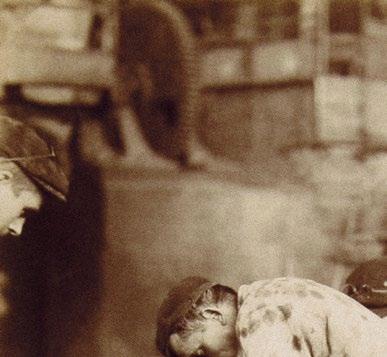




37
CHARLES NÈGRE ASILE IMPÉRIAL DE VINCENNES, L’INFIRMERIE , 1857–1860 (IMPERIAL ASYLUM AT VINCENNES, THE INFIRMARY)






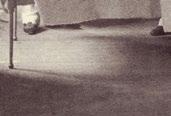

















39
UNKNOWN
J.M. CHARCOT ET UNE PATIENTE ATAXIQUE , 1875 (J.M. CHARCOT AND AN ATAXIC PATIENT)
NADAR HERMAPHRODITE DEBOUT , 1860 (STANDING HERMAPHRODITE)

40



















41
































42
LEWIS ALBERT SAYRE SPINAL DISEASE AND SPINAL CURVATURE: THEIR TREATMENT BY SUSPENSION AND THE USE OF THE PLASTER OF PARIS BANDAGE , 1877











































43
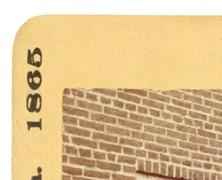










44











45
JAMES GARDNER HOSPITAL AT FREDERICKSBURG, VIRGINIA , MAY 1864




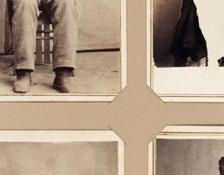











46


 MCPHERSON & OLIVER, WILLIAM D. MCPHERSON THE SCOURGED BACK , 1863
MCPHERSON & OLIVER, WILLIAM D. MCPHERSON THE SCOURGED BACK , 1863
47
REED BROCKWAY BONTECOU ALBUM PAGES WITH “CARTES DE VISITE,” 1864–1865







48









UNKNOWN INSIDE PAGES OF THE CRIMINAL , BY HAVELOCK ELLIS, 1890 49











50
UNKNOWN TYPE OF THE LIFE SENTENCE CONVICT , 1894–1905




UNKNOWN SCHEDA SEGNALETICA CON DUE FOTOGRAFIE DI CRIMINALE, SECONDO METODO DI BERTILLON , 1894–1900
(IDENTIFICATION SHEET WITH TWO PHOTOGRAPHS OF CRIMINALS, BERTILLON’S METHOD)
51
FRANK GILBRETH AND LILLIAN GILBRETH MOTION EFFICIENCY STUDY , CA. 1914


ALPHONSE BERTILLON TABLEAU SYNOPTIC DES TRAITS PHYSIONOMIQUES , CA. 1909 (SYNOPTIC TABLE OF PHYSIOGNOMIC TRAITS)

52













53
UNKNOWN OSTKÜSTE VON AFRIKA , FROM THE ALBUM ANTHROPOLOGISCHETHNOLOGISCHES












ALBUM IN PHOTOGRAPHIEN , EDITED BY CARL DAMMANN, 1875 (EAST COAST OF AFRICA)










54










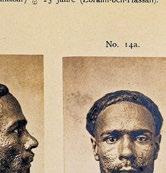











55
ABY WARBURG











HOUSES IN WALPI WITH HOPI WOMAN, 1896 , SLIDE NO. 27 FROM THE LECTURE “THE SERPENT RITUAL,” 1923









56







































 JOHN K. HILLERS
JOHN K. HILLERS
57
PLATE 3: TERRACED HOUSES IN WOL-PI , FROM THE ALBUM MAJOR J. W. POWELL’S EXPLORATIONS, VIEWS IN THE PROVINCE OF TUSAYAN, NORTHERN ARIZONA , 1871–1879



58
BRONISŁAW MALINOWSKI

THE TASASORIA ON THE BEACH OF KAULUKUBA: STEPPING THE MASTS AND GETTING THE SAILS READY FOR THE RUN , FROM THE BOOK ARGONAUTS OF THE WESTERN PACIFIC , 1915–1916


59
BRUNO BRAQUEHAIS STATUE OF NAPOLEON FROM VENDÔME COLUMN , FROM THE ALBUM VIEWS OF THE PARIS COMMUNE , 1871






61
JEAN ANDRIEU
LA COLONNE VENDÔME APRÈS SA DÉMOLITION PAR LES COMMUNARDS LE 16 MAI 1871 , FROM THE SERIES DÉSASTRES DE LA GUERRE , 1871
(THE VENDÔME COLUMN AFTER ITS DEMOLITION BY THE COMMUNARDS ON MAY 16, 1871)






62
UNKNOWN



BARRICADE DE LA RUE DE LA ROQUETTE, PLACE DE LA BASTILLE , FROM ALBUM DE PHOTOGRAPHIES ET D’ARTICLES DE JOURNAUX SUR LA GUERRE FRANCO-PRUSSIENNE ET LA COMMUNE DE PARIS 1870–1871 , MARCH 18, 1871 (BARRICADE AT RUE DE LA ROQUETTE, PLACE DE LA BASTILLE)









63








UNKNOWN FRONT COVER OF THE ILLUSTRATED LONDON NEWS , JUNE 24, 1871 64
ALPHONSE LIÉBERT

LE THÉÂTRE LYRIQUE INCENDIE:
VUE INTÉRIEURE DE LA SALLE , FROM THE ALBUM LES RUINES DE PARIS ET SES ENVIRONS , CA. 1871 (THE THÉÂTRE LYRIQUE BURNED: INTERIOR VIEW OF THE HOUSE)



PAGES 66–67: ADOLPHE BRAUN





INTÉRIEUR S DU FORT D’ISSY ET FORT DE VANVES , FROM THE ALBUM THÉÂTRE DE LA GUERRE , 1871 (INTERIORS OF FORT D’ISSY AND FORT DE VANVES)

65








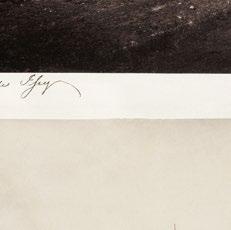

























IAKOV SHTEINBERG

POSTCARD OF ARMED CAR ON GUARD, 1917





UNKNOWN

POSTCARD OF THE BARRICADE ON DOLGORUKOV STREET DURING THE DECEMBER UPRISING IN MOSCOW (1), 1905



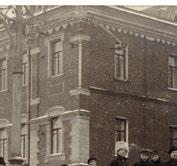



68
UNKNOWN
POSTCARD OF THE BARRICADE ON DOLGORUKOV STREET DURING THE DECEMBER UPRISING IN MOSCOW (2), 1905





UNKNOWN



POSTCARD OF A PEACEFUL DEMONSTRATION ON DECEMBER 17, IN PETROGRAD, 1917


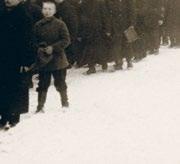




69






71
PAGES 70–71: VIKTOR BULLA SHOOTING AT A DEMONSTRATION ON NEVSKY PROSPEKT, PETROGRAD, JULY 4, 1917 , 1917










FREDERIC BALLELL PRIMER DE MAIG DE 1890 , 1890 (FIRST OF MAY, 1890)











72
CORNELIS LEENHEER GROUP PORTRAIT J.B. ASKEN, ERNEST BELFORT BAX, AUGUST BEBEL, ETCETERA , SIXTH CONGRESS OF THE SECOND INTERNATIONAL, AMSTERDAM, 1904



















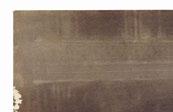
73
JOHN THOMSON


THE INDEPENDENT SHOE-BLACK , FROM THE SERIES STREET LIFE IN LONDON , 1877–1878

75




LEWIS HINE A HOT DAY ON THE EAST SIDE, NEW YORK , 1910 76


















NEW YORK
1906 77
LEWIS HINE GREEK BOOTBLACKS,
, CA.
LEWIS HINE
PHOTOGRAPH OF NATIONAL CHILD LABOR COMMITTEE EXHIBIT AT THE PANAMA–PACIFIC INTERNATIONAL EXPOSITION, SAN FRANCISCO, CALIFORNIA, 1915







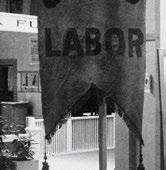




78









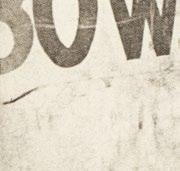





PHOTOGRAPH—NEW YORK / SANDWICH MAN
FROM THE MAGAZINE CAMERA WORK , NO. 49/50, 1917 79
PAUL STRAND
,









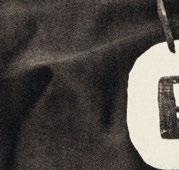




 PAUL STRAND
PAUL STRAND
80
PHOTOGRAPH—NEW YORK / BLIND WOMAN , FROM THE MAGAZINE CAMERA WORK , NO. 49/50, 1917
documentary genealogies photography 1848 –1917
“If your pictures aren’t good enough, you’re not close enough,” said Robert Capa, one of the most important photojournalists of the twentieth century. His maxim already resonated in the mid-nineteenth century when photography began to acquire its documentary dimension. e Documentary Genealogies: Photography 1848–1917 exhibition at the Museo Nacional Centro de Arte Reina Sofía invites us to reconsider the early age of photography from a new perspective, paying closer attention to that very documentary dimension. is reappraisal is aided by the essays in this book, a carefully selected collection of critical studies that helps us delve deeper into the various issues raised by the show.
e exhibition probes the moments that preceded the birth of documentary as an artistic genre, stressing the disruptive power of the rst representations of common people and subaltern gures. Bourgeois, industrial, and colonial culture had made photography a tool for the legitimization and dispersion of its own set of values and interests.
Jorge Ribalta—researcher, writer, photographer, and curator of the exhibition—sets out the premise that, although the appearance of common people and subaltern gures in photographs from this period was always accidental or incidental, their presence nevertheless shows that photography’s documentary capacity was there from the start. is is re ected in the subordinate, or “plebeian,” status photographic works initially held within modern art. e French poet Charles Baudelaire even went so far as to describe photography as a “servant of the arts,” due to it being an industrial practice that lacked the ability, according to him, to o er anything other than an exact reproduction of nature.
is exhibition gives us the opportunity to contemplate scenes from the nineteenth and early twentieth century that are as characteristic as they are varied: the great works of infrastructure and urban reform, medical experimentation, anthropological studies, criminology research, and the numerous national, historical, and cultural heritage campaigns that were key components in promoting nationalist discourses throughout Europe.
Finally, I highlight the collaboration between the Museo Reina Sofía and the Biblioteca Nacional de España. is project is the fruit of that collaboration, enabling us to better understand modern and contemporary photography’s gestation.
MIQUEL ICETA I LLORENS MINISTER OF CULTURE AND SPORT
Documentary Genealogies: Photography 1848–1917 brings to a close a cycle of exhibitions that the Museo Reina Sofía, in conjunction with the photographer and researcher Jorge Ribalta, began over a decade ago. e aim was to o er an alternative account of how the discourse of documentary emerged within the broader history of photography.
e earlier shows in the cycle—A Hard, Merciless Light: e Worker Photography Movement, 1926–1939 (2011) and Not Yet: On the Reinvention of Documentary and the Critique of Modernism (2015)— examined documentary photography’s gestation, development, and latitude in terms of the establishment of a subaltern perspective, linked in the rst case to portrayals of the industrial worker and in the second to the emergence of new political subjectivities in the 1960s and 1970s. is new exhibition, breaking with the previous chronological order, shines a spotlight on moments that anticipated these developments: documentary photography’s protohistory.
e premise for the show is that, although the birth of documentary lm or photography as a genre—as a speci c form of photographic and cinematographic poetry—occurred in the 1920s with the outbreak of working class–led amateur photography and the creation of a critical de nition for the documentary genre, photography’s documentary role is as old as photography itself. In this respect it is worth recalling Walter Benjamin’s in uential essay “ e Work of Art in the Age of Mechanical Reproduction,” in which he points out that photography and socialism emerged at the same time. is was hardly a coincidence: looked at retrospectively, much of the iconography used by documentary photographers to depict the working classes in the interwar period was already present, if latent, in the visual culture of the 1840s.
e oldest images in the exhibition stem from this period. Here we have the rst appearance of subaltern gures—servants, beggars, laborers; the enslaved, imprisoned, and in rm—and can see the evolution of their early representation, which must be considered within the context of photography’s emergence as the driving force in a new visual regime that served the interests of the dominant class and bourgeoise and colonial culture generally. According to the symbolic logic of this new visual order, what historian André Rouillé terms the “empire of photography,” portrayals of common people and subaltern gures were essentially “accidental, gures popping up incidentally in the corner of frames focused elsewhere.” But they were also the early manifestations of “an episteme of documentary” that would, in Ribalta’s words, a ord photography a “speci c and contradictory status” within modern art.” e “documentary idea” has remained something of a counterargument
within modernity because, as an instrument-based practice, it challenges the pure autonomy aspired to by vanguard art.
e narrative arc in our exploration of documentary’s crystallization as a photographic form spans eight decades. e revolutionary cycles of 1848 and 1917 mark the beginning and the end of our tour, and not without good reason. ese two historic milestones bookend a turbulent period of revolts and reforms, seminal moments in which photography, as an emerging technology, moved away from its earlier pictorialism and aesthetic priorities to explore a more testimonial vocation. Few photographic records remain of the revolutionary episodes of 1848, considered by contemporary historians to be the moment the proletariat acquired class consciousness, but the images we do have—of barricades on the Parisian streets, for example— provide a foretaste of the apocalyptic iconography that bourgeoise culture would come to associate with popular uprisings.
e same apocalyptic iconography is much in evidence in photographic portrayals of the 1871 Paris Commune, for which a far wider repertoire of work survives. Here the emphasis is on the vandalism involved in the uprising, as would later be the case with depictions of the 1909 Tragic Week in Barcelona and the Russian revolutions of 1905 and 1917, events that also provided the rst images of the mobilized masses. at these kinds of images were so widely circulated goes to show how afraid the dominant classes were of the ascendent workers’ movement. e powers that be deliberately and systematically used the illustrated press to try to stigmatize and hold back working-class advances. Somewhat paradoxically, another form of photography that gave visual expression to what bourgeoise culture deemed the “other” came through projects designed to promote and strengthen nation-state ideologies. Photography albums of a nation’s historic landmarks and artistic heritage, for example, proliferated in this period and showed subaltern gures—maids, beggars, artisans—amid the monuments and civic buildings. Something similar happened with photographic reports of urban redevelopment schemes and the era’s great feats of engineering and infrastructure: images of construction workers and factory hands helped to create, intentionally or otherwise, from a perspective that inclined toward paternalism and criminalization, the rst iconography of the urban proletariat. As Ribalta observes, these images bear eloquent witness to “how much industrial capitalism prospered by radically exploiting the disempowered.”
e will to document is especially present in the vast body of photographic work that was produced with explicitly demonstrative ends. Taken to support studies in the incipient elds of anthropology and criminology, as well as for medical and forensic research, these images, apparently scienti c and neutral, were crucial in legitimizing technology-based forms of social control and discipline.
In the nal period that the exhibition deals with, the rst photographs emerge that combine the will to document with more social and emancipatory aims. is was a time when, following successive revolutionary surges and a consolidated workers’ movement, public policy initiatives nally sought to improve living conditions and social integration for the working classes. A key gure in this context is Lewis Hine, a US photographer who made exposing societal ills the focal point of his practice. His work had a clear pedagogical component, and he actively collaborated with numerous civil rights organizations, including the National Child Labor Committee, for whom he produced a celebrated series of pictures condemning child labor, engendering the documentary photography genre in the process. Hine had a huge in uence on Paul Strand, who was one of the founding fathers of modernism in photography. Strand straddled the end of one era and the start of the next, making him the logical last stop on our tour of documentary photography’s protohistory.
e exhibition’s wide range of case studies shows how, during the second half of the nineteenth century and the rst decades of the twentieth, a vast array of photographic images was produced that sought to and/or happened to provide some sort of factual record. e exhibition re ects on how this happened and invites us to delve deeper into the genealogy of the discourse of documentary photography. It brings to light how those early images foreshadowed and anticipated later historic accounts of class relations and con ict—a guiding principle in the discourse of documentary—and paved the way for bourgeoise visual culture to be penetrated by what Molly Nesbit terms “the aesthetic Other.” is book interrogates these ideas from a range of perspectives in the next essays, some of them historical texts (by Jacob Riis, Allan Sekula, and the aforementioned Hine), others written speci cally for this project.
MANUEL BORJA-VILLEL DIRECTOR OF THE MUSEO NACIONAL CENTRO DE ARTE REINA SOFÍA






LOUIS DAGUERRE BOULEVARD DU TEMPLE , 1838






THE AESTHETIC OTHER: NOTES FOR A PROTOHISTORY OF THE DOCUMENTARY IDEA
Jorge Ribalta 91 THE STREETS AND THE BARRICADES: DEMOS AND DOCUMENT IN NINETEENTHCENTURY PHOTOGRAPHY
Steve Edwards 101 1848: PICTURING PROTEST
Anne de Mondenard
119
EXCEPTIONALLY TYPICAL: SUBLIMINAL REVOLUTIONS IN THE REALM OF PORTRAIT PHOTOGRAPHY AROUND 1848 IN CENTRAL EUROPE
Petra Trnková
127
IMAGINING THE COMMONWEALTH: ADAMSON AND HILL’S NEWHAVEN PHOTOGRAPHS
Duncan Forbes
137 RIIS’S OTHER HALF Maren Stange
147
THE OTHER HALF AND HOW THEY LIVE: STORY IN PICTURES
Jacob Riis
153
EXPOSING SOCIAL QUESTIONS: PHOTOGRAPHIC PROJECTS IN THE VIENNA OF THE LONG NINETEENTH CENTURY
Michael Ponstingl
167
THE EMERGING PICTURELANGUAGE OF INDUSTRIAL CAPITALISM
Allan Sekula
179 WARBURG, PREMODERN MAGIC, PHOTOGRAPHY
Josh Ellenbogen
193
APPROACHES TO A PHOTOGRAPHY OF PAIN
Inés Plasencia
201
THE DILEMMA OF PHOTOGRAPHY: PHOTOJOURNALISM, HISTORY, AND THE PARIS COMMUNE
Paul Mellenthin
209
PHOTOGRAPHIC RECORDS OF THE RUSSIAN REVOLUTIONS: MYTHS AND DOCUMENTS
Erika Wolf
219
PHOTOGRAPHY OF REVOLUTIONS IN SPAIN (1854–1909)
Bernardo Riego
229
SOCIAL PHOTOGRAPHY: HOW THE CAMERA MAY HELP IN THE SOCIAL UPLIFT
Lewis Hine
237
ON SOCIAL PHOTOGRAPHY
Stephanie Schwartz
243 CONTRIBUTORS
250
LIST OF IMAGES
253






THE AESTHETIC OTHER: NOTES FOR A PROTOHISTORY OF THE DOCUMENTARY IDEA
JORGE RIBALTA
For the document functioned in a part of visual culture that had few aspirations to greatness or avant-garde revolution; it issued from the depths of bourgeois culture; it was the aesthetic Other.
—Molly Nesbit, Atget’s
Albums, 1992
With this research, the Museo Reina Sofía closes an extended study of documentary as an idea and a cultural form. It began in 2010 with A Hard, Merciless Light: e Worker Photography Movement, 1926–1939, an exhibition, seminar, and book project surveying the largely ignored worker photography experiments of the interwar period. It continued in 2015 with Not Yet: On the Reinvention of Documentary and the Critique of Modernism, an exhibition and an anthology of essays attending to the rise of critical documentary practices in the “long seventies” (1972–1991). Next, in 2018, came a retrospective of the work of Marc Pataut: Marc Pataut: First Attempts. A coda to the previous studies, the retrospective considered the work Pataut had produced in the metropolitan area of Paris in the 1990s, at the time of the emergence of what has become known as the anti-globalization movement. Taking key decades in the history of twentieth-century photography as case studies, the series of exhibitions sought to o er an alternative political narrative for the rise and evolution of documentary practice.
91/
Seven
GUSTAVE LE GRAY (ATTRIBUTED) TAS DE PAVÉS (DETAIL), FROM ALBUM REGNAULT , CA. 1849–1855 (PILE OF COBBLESTONES)
Together, the three exhibitions provide a historical overview of the transformation of the idea of documentary. ey o er a history of the evolution of the subaltern voice implicit in documentary, from the mobilized industrial worker of the 1920s and 1930s to the urban, micropolitical struggles of the post -1968 period, ending with the emergence of the precariat in the 1990 s. Documentary Genealogies provides a di erent, albeit complementary, perspective. Imagining a protohistory of documentary in photography’s earliest period, it breaks with the chronological sequence of the previous exhibitions.
John Grierson’s “documentary idea” is reconsidered here. e ocial intellectual founder of documentary, Grierson placed documentary at the intersection of art, education, information, and persuasion. For the British lmmaker, cinema and photography’s hybrid, multiple, and minor artistic condition provided a ground for an art/nonart practice that displaced artistic autonomy into social life.1 us, in the 1920s, documentary constituted a counterdiscourse inside modernism. It emerged as much from a tension with and a resistance to modernist desires for autonomy as from the abstraction, with cubism onward, of everyday-life from the con icts of the social world. e functionalist and unstable nature of documentary implied an imperative of realism. Its historic mission was to represent the new political protagonist, the working class, in the era of mass democracy. Since then, documentary’s episteme has become constitutive of the speci c and contradictory status of photography inside of modernism.
In retrospect, it might be argued that photography’s documentary role is as old as photography itself, even though the rise of documentary as an artistic genre was a product of the 1920s. is, arguably, was what Walter Benjamin was suggesting in his 1935 essay “ e Work of Art in the Age of Mechanical Reproduction” when he re ected on the parallel emergence of photography and socialism. is project departs from Benjamin’s re ection by acknowledging that the iconographies of photography used in the 1920s to represent working-class life were latent in the visual culture of the 1840 s. e seminal, if accidental, gure of the bootblack in Boulevard du Temple (1838), one of Louis Daguerre’s rst plates, is a case in point. e daguerreotype can be seen not only as the rst photographic representation of labor but as a trigger for all subsequent historical accounts of class relations and con icts, or the crux of documentary practices that would emerge in the twentieth century.
This book maps a range of photographic practices inside what historian André Rouillé calls the “empire of photography.” This phrase designates photography’s rise as a new visual form in the midnineteenth century or the period coinciding with the Second Empire in France, as well as its status as a tool of empire, of the hegemonic
92/
1 Forsyth Hardy, ed., Grierson on Documentary (London: Collins, 1946).
bourgeois, industrial, and colonial cultural system. 2 Considering practices that developed inside and against the grain of “empire,” this history takes as its starting point the earliest depictions of subaltern subjects—servants, beggars, laborers; the unemployed, enslaved, imprisoned, sick, and so forth. It considers how they might stand as metaphors for Charles Baudelaire’s renowned and early condemnation—in his “Salon of 1859”—of photography as the “handmaiden” to the arts. Documentary is, thus, a minor art twice over. On the one hand, photography’s mechanical and instrumental nature makes it read as an impure art; on the other hand, its historical mission of representing the working class connotes an added degree of subalternity. Photography’s democratic promise went unful lled for more than a century, remaining the preserve of bourgeois culture. Portrayals of the lower class, subalterns, or proletarians remained marginal or accidental, gures appearing only incidentally in the periphery of frames focused elsewhere. Such images were made “from above,” rooted in the pious and paternalistic traditions of naturalism. is historic tour of the protohistory of the documentary idea starts with the oldest photographic images of revolution. ese date to the 1848 revolutions in Europe, the so-called Spring of the Peoples. Considered by contemporary historiography to be the moment the proletariat acquired class consciousness and workers’ political struggles began, this moment was not without its contradictions. Karl Marx and Friedrich Engels published e Communist Manifesto in January 1848, declaring that the specter of communism was haunting Europe. eir claim gained substance a month later when protests in Paris sparked an uprising. But Marx himself viewed the events of 1848 in a critical light. In his 1852 e Eighteenth Brumaire of Louis Bonaparte, he dismissed them as a parody of the 1789 French Revolution by remarking that the great events of history happen twice: rst as tragedy, then as farce.
Photographic records from the period of the 1848 revolutions are scarce; they amount to no more than a few daguerreotypes and calotypes depicting the Paris barricades and other scenes of political signi cance in London, Vienna, and Rome. But the photographs of Paris are most signi cant. ey are the rst examples of the kind of apocalyptic iconography that would become associated with popular uprisings. eir focus on urban chaos and the destruction wreaked by proletarian fury is a clear expression of bourgeoise fears of revolution.
A er this seminal moment, the historical narrative o ered in this interpretation takes an alternative approach to the “empire of photography.” It focuses on the production of photographic representations of what was deemed other to bourgeois culture inside some of its most iconic photographic enterprises.
93/
2
André Rouillé, L’empire de la photographie (Paris: Le Sycomore, 1982).
Molly Nesbit, Atget’s Seven Albums (New Haven: Yale University Press, 1992), 9.
Two emblematic, dialectic impulses for such an “empire of photography” in Europe from the 1850s onward were the campaigns to record historical monuments, such as the Heliographic Mission in France, and those of urban center redevelopments, like that of Paris led by Georges-Eugène Haussmann. As new boulevards destroyed medieval cities, the rise of discourses on cultural heritage and antiquity became instrumental to the rise of nationalism. e decision to place photography in the service of preserving what was disappearing and publicizing what was emerging coincided with the medium’s rst great technological revolution: the combination of collodion negatives and albumen prints, which allowed for the photograph’s multiplicity. e organization of photographic archives and albums followed, and photography erupted into the public sphere. e Heliographic Mission of 1851 is a prime example of how the discourse of national historical monuments facilitated the narrative of the nation - state and fostered nationalist ideologies. is was not only a French trend; equivalent photographic campaigns took place in several countries. In Spain, Charles Cli ord was the pioneer. His photographic albums of Queen Isabella II’s travels around Spain constitute the rst photographic articulation of the nation based on the records of historical sites and monuments. But the bourgeois idea of nation, which is the impetus for such campaigns and albums, nds a dialectical counterpoint in the appearance of gures of alterity in the peripheries of the monuments: servants in palaces, gypsies at the Alhambra, small tradespeople, street beggars, and driers loitering in the street or in the architecture. ese gures represent the subaltern condition and constitute embodiments of what Antonio Gramsci referred to as the “national-popular.” Viewed, as Gramsci did, from below, the lower class and dispossessed were not, as bourgeois ideology would have it, survivors of “primitive” or premodern ways of life but the representatives of an alternative modernity. eir very presence resisted the “othering” discourse of liberal bourgeoise models of modernity, foreshadowing or re ecting the emergence of the proletariat as a political force and anticipating the class struggles that would de ne the ethos of documentary in the 1920s. As Molly Nesbit summarizes in her study of the albums of Eugène Atget, documentary issued from the depths of bourgeoise culture to represent its aesthetic Other.3
e second major trend driving the “empire of photography” was the spatial reorganization of urban centers according to the demands and logic of industrialization. The inner - city redevelopment campaigns of Paris, Vienna, Barcelona, and Madrid prompted photographic projects that both memorialized the old streets before they disappeared and celebrated the new avenues and urban infrastructure. Charles Marville’s record of Haussmann’s overhaul of Paris is perhaps
94/ 3
the quintessential example. Intentional or accidental, the rst iconography of the urban proletariat began to emerge around the same time. e earliest body of photographic work to take the working class as its subject is probably David Octavius Hill and Robert Adamson’s study of a community of sherfolk in Newhaven, Scotland, a remarkable collection of calotypes produced around 1845 . In the 1850 s, Charles Négre in Paris and Giacomo Caneva in Rome photographed the urban and rural proletariat respectively. John omson photographed people on the streets of London in the 1870s and published his seminal book illustrated with woodburytypes, Street Life in London (1877 ). In the 1880 s, in New York, the sensationalist journalist Jacob Riis photographed working-class slums on the Lower East Side. He presented his photographs as lantern slides in public talks and later published them in the book How the Other Half Lives (1890). In 1904 , Hermann Drawe pursued a similar agenda in Vienna. He, too, presented photographs of the city’s underbelly, neighborhoods inhabited by the poor and vagrant, in public lantern- slide lectures, and he collaborated with the journalist Emil Kläger, whose work was also published in book form. e urban outskirts created by the tearing down of city walls at the turn of the century and the poor and subproletariat occupants of these terrains vagues were photographed by Atget in Paris, Heinrich Zille in Berlin, and Ferdinand Ritter von Staudenheim in Vienna.
Alongside photographic campaigns documenting national heritage and historic monuments, the “empire of photography” registered itself in another element that was part of the building of the modern nation-state: the great engineering and transport infrastructure projects of the mid-nineteenth century, such as railroads, aqueducts, and lighthouses. At the same time, photography began to be used to advertise new industrial products and factories. Universal and industrial exhibitions publicized this industrialization and were additional sites for the display of photography in the public sphere. e Great Exhibition of London in 1851 is a prime example. In Spain, Cli ord was again the pioneer, documenting major public works such as the Isabella II Canal, inaugurated in 1858 to solve Madrid’s water supply issues. Within this context, the rst images of factory work and of the workers themselves appeared. Studies of workers operating machinery at the Krupp steel works in Essen, taken in the 1890s, are probably the rst photographs of their kind and anticipate the iconography of men-at-work in industrial environments that proliferated in the twentieth century.
e great infrastructure projects o en relied on forced labor—an indication of just how much industrial capitalism prospered by radically exploiting the disempowered—and photographs of the great
95/
public works projects are similar to those made of workers in penal colonies. Chain-gang laborers working on public projects designed by the civil engineer Lucio del Valle, a trailblazer in Spain for having his projects photographically documented, can be seen in daguerreotypes from 1850. e incarcerated and the enslaved can also be seen in railroad construction photographs from the United States taken during the period of the Civil War by Matthew B. Brady, William Henry Jackson, and Timothy O’Sullivan. e rst images of miners working underground, captured by O’Sullivan using innovative articial lighting technology as part of his work for the 1868 Geological Exploration of the Fortieth Parallel, bear witness to a hellish world. Another context to the “empire of photography” was the medium’s use of modern technologies of social discipline and governance. As a product of industrialization, photography formed part of the episteme of the natural and social sciences, and in this it helped to establish a new archival unconscious, a symptom of the hegemony of positivism. Photography’s use in geological exploration had an early golden age when great surveys of the US Western territories were commissioned in the late 1860 s, in the a ermath of the American Civil War. e rst of these was that of geologist Clarence King’s Fortieth Parallel survey, with O’Sullivan as the main photographer. e great body of photographic work in the form of albums produced by these surveys served a double purpose. On the one hand, they contributed to a discourse of nation -building by celebrating the heritage of North America’s sublime landscapes, leading to policies for the creation of national parks that claimed to preserve unique and emblematic natural environments; on the other hand, they were a tool for the control and exploitation of the land’s natural resources, of mining in particular. e Western surveys also testify to the decisive encounter between explorers or colonizers and natives. In this respect, the surveys can be also seen as one of the sources for the anthropological use of photography in the United States, which in the 1890s gave rise to wide-ranging documentation of Native Americans by pioneers such as Adam Clark Vroman and Edward S. Curtis. However, it was the work of Bronisław Malinowski and his collaborators on the Trobriand Islands around 1915 that cemented photography’s place in eldwork. A selection of photographs from this undertaking was published in 1922 as Argonauts of the Western Paci c, a seminal work of modern anthropology.
e surge in anthropology’s use of photography in the late nineteenth century happened in parallel with its increased deployment in the medical and judicial spheres. e American Civil War produced a remarkable range of anatomical photography, including compendiums of injuries, amputations, and deaths. In Europe, the French
96/
photographer Nadar participated in some of the photo-medical experiments of the 1860s, producing celebrated studies of hermaphroditism. But photography’s true pioneer in medical experimentation was the neurologist Jean-Martin Charcot. His studies of so-called female hysteria and other neuropsychiatric pathologies, carried out in the 1870s at the Hospital de Pitié-Salpêtrière in Paris, were groundbreaking. His illustrated publications, which were published the following decade, had a huge in uence on modern neurology. ese experiments with photography parallel the early uses of photography in police and judicial work, including the rise of modern methods of photographic identi cation, such as those based on the studies of Alphonse Bertillon in France, Cesare Lombroso in Italy, and Francis Galton in England. In much the same way that medical photography is integral to normative discourses on health and pathology, police photography categorizes criminal and deviant personalities.
Such archival practices constitute photography’s disciplinary and repressive side. the counterpoint is the iconography of the urban chaos of popular uprisings, which brings us to the start of the nal episode in this protohistorical tour of the documentary idea: the Paris Commune. e political experiment in popular self-government that was the 1871 Paris Commune constituted a foundational and mythical moment in the political culture of the workers’ movement. It also produced the rst signi cant and widely distributed body of photographic work representing revolution. Growing from the seeds sown by the daguerreotypes of Parisian barricades in 1848, the photographs of the Paris Commune established a grammar for future depictions of revolution, even if the industrially produced and disseminated pictorial mass—in the form of albums, souvenirs, and an array of printed matter—was essentially counterrevolutionary. A catalog of the toppling of monuments, such as the Vendôme Column, and great institutional buildings being set ablaze, including the Paris Town Hall, underpinned a dystopian image of a city in ruins.
e same iconography of vandalism, trained on the chaotic and amorphous moments when a revolution or uprising was breaking out, would recur in depictions of the Russian revolutions of 1905 and 1917 and of Barcelona’s revolts from 1909. Known as the Semana Trágica (Tragic Week), the latter events also brought some of the rst images of the mobilized masses. ese disturbances all occurred at a time when the collotype was gaining ground and print media had begun to introduce photographs in place of sketched illustrations. Images of these events thus marked the birth of news photography and media sensationalism, all of which relied on the widespread circulation of images. In this respect the Tragic Week was a foundational moment for photojournalism in Spain. Images of barricades, religious buildings
97/
on re, and macabre scenes of mummies being turned out of the convents and put on public view appeared in the illustrated press of the time, heralded as eyewitness accounts in real time. e burned buildings later were featured in a collection of one hundred photographic postcards, Sucesos de Barcelona (Events of Barcelona), released in 1909 by the editor Àngel
Toldrà Viazo.
e iconography of revolutionary terror gained wide circulation, articulating early twentieth-century political antagonisms and social upper - class fears of the ascendent workers’ movement. Media was increasingly instrumental to the ruling class and to bourgeois culture. Images of the working classes tended to be paternalistic or criminalizing, a visual representation of the dominant ideology and of class con ict. e working class would not gain access and control of the means of representation and communication until much later in the 20th century—and only as a counterdiscourse to the bourgeois press. At the turn of the century, the photographic medium with the highest potential for widespread circulation was the collotype-based printed postcard, which proliferated in the 1890s in parallel with the rise of cinema as a public spectacle. e picture postcard was photography’s most-advanced form of public visibility until the arrival of mass photographic media at the time of the great revolution in modern visual culture in the 1920s.
Revolutionary uprisings and the organization of workers’ movements throughout the nineteenth century eventually led to advances in social rights and public policies, improvements in inner - city living conditions for the working classes, and the incorporation of those classes into nascent social and welfare states. e seminal example of the interaction between photographic practice and social policy— and a major contributor to the establishment of documentary as a genre—is Lewis Hine’s work for the National Child Labor Committee (NCLC). Founded in 1904, the committee was one of several state and parastate organizations that helped shape the development of public services and social welfare in the United States in the late nineteenth and early twentieth centuries in response to growing demands by civil rights movements. Hine, who began to work with the NCLC around 1907 , was something of a mediator between the state and disadvantaged groups, championing reforms that would improve the lives of the most disempowered of workers: the children. Hine’s initiatives, positioned at the junction of art, politics, and education, were part of a wave of new social and popular education techniques in reformist policies proposed by academics from the emerging eld of sociology. Hine had a sociology background himself and argued that his mission as a documentary photographer was to highlight things that needed changing. His photographs of child laborers were widely circulated in
98/
the committee’s publications and in social studies magazines and literature. e NCLC organized itinerant awareness-raising exhibitions with Hine’s photographs displayed in panels alongside texts and diagrams. One image survives of such exhibitions; namely, of the NCLC pavilion at the 1915 Panama-Paci c International Exposition in San Francisco. e persuasive power of photography combined with text in an immersive exhibition space constituted a new paradigm and anticipated practices that would emerge in the late 1920s, such as El Lissitzky’s propaganda exhibitions and John Heart eld’s photomontages.
Hine was a photography professor at the Ethical Culture School in New York from 1904 to 1909, where one of his students was Paul Strand. Strand’s photographs mark the end point of this historical tour. e classic founder of photographic modernism, his work was in uenced by the reception of Parisian avant-garde painting a er the exhibition in New York of the work of Paul Cézanne and the cubists Pablo Picasso and Georges Braque. Two portfolios of Strand’s work, published in successive issues of Alfred Stieglitz’s avant-garde magazine Camera Work, in 1916 and 1917, amount to something of a manifesto that anticipates photography’s future. Following Hine’s model of photography as a social practice, Strand became politically engaged in the 1930 s, when he became involved with the New York branch of the Worker’s Photography Movement, the Photo League. He presents a most complex gure, not without contradictions, especially his lurching from an o en-regressive aesthetic romanticism to a revolutionary ideology. But he is the link between an era that was ending and another that was about to begin, and he was to become both a symbol and symptom of the ambiguities between factuality and idealization that the documentary idea carried into twentieth-century photography.
99/







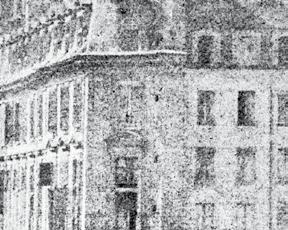






THE STREETS AND THE BARRICADES: DEMOS AND DOCUMENT IN NINETEENTHCENTURY PHOTOGRAPHY
Documentary politics is frequently associated with the 1930s: with America in Depression; with the alternative working - class civilizations in Weimar and Russia; with modernist vision and the Popular Front. But documentary practice did not emerge ab initio, rather it morphed out of the nineteenth-century conjuncture of undervalued pictorial genres and the depiction of subaltern subjects—the working class, colonial people, and unruly women. Some elements of this conjuncture are apparent in the odd picture made in 1847 by the English sculptor and daguerreotypist omas urlow (p. 9). Two things are unusual about this photograph, which is di cult to t within existing pictorial categories. Working wheeled vehicles are common enough in the history of art, but they are associated with the pastoral tradition of idyllic rural views, not with urban scenes. In contrast, urlow’s photograph is an ordinary picture of not very prosperous street life. e other signi cant feature is its awkward frontality. Donkey and cart are positioned diagonally to the picture plane, with di erential focus from front to back, creating a visual barrier; they block imaginative access to the space and direct the viewer’s attention to the dirty-faced boy who stares back, meeting our gaze. It is an awkward, plain, and everyday picture.
101/
STEVE EDWARDS
HIPPOLYTE BAYARD RUE ROYALE ET RESTES DES BARRICADES DE 1848 (DETAIL), 1848 (RUE ROYALE AND THE REMAINS OF THE BARRICADES OF 1848)
1
Frederick Engels, e Condition of the English Working Class in 1844 (1845), in Karl Marx and Frederick Engels, Collected Works 1844–1845, vol. 4 (London: Lawrence and Wishart, 1975).
2
Michel Foucault, Discipline and Punish: e Birth of the Prison (London: Penguin, 1979); and Foucault, e History of Sexuality, vol. 1 (London: Penguin, 1981). For the emergence of “examination” and “inquiry,” see Foucault, “Truth and Juridical Forms” (1973), in Power: Essential Works of Foucault 1954–1984, ed. James D. Faubion (London: Penguin, 2000), 1–89. For dossier making, see Michel Foucault, ed., I, Pierre Rivière Having Slaughtered My Mother, My Sister and My Brother . . .: A Case of Parricide in the 19th Century (London: Penguin, 1978), x–xi; and S.D. Chrostowska, “‘A Case, an A air, an Event’ ( e Dossier by Michel Foucault),” Clio: A Journal of Literature, History and the Philosophy of History
35, no. 3 (2006): 329–49. For photographic history based on Foucault’s work, see, in addition to Sekula, John Tagg, e Burden of Representation: Essays on Photographies and Histories (New York: Macmillan, 1988); David Green, “A Map of Depravity,” Ten.8, no. 18 (1985): 36–43; David Green, “On Foucault: Disciplinary Power and Photography,” Camerawork
32 (1985): 6–9; and David Green, “Veins of Resemblance: Photography and Eugenics,” in Photography/Politics Two, ed. Patricia Holland, Jo Spence, and Simon Watney (London: Comedia; Photography Workshop, 1986), 9–21.
Henri Lefebvre, e
Production of Space (London: Blackwell, 1991), 28.
DOCUMENTS
Capitalist industrialization and urbanization produced new forms of social investigation during the nineteenth century: government reports explored social conditions; journalists wrote firsthand accounts of life in the poor districts; statistical societies collected data on poverty; and novelists such as Eugène Sue, Charles Dickens, and Elizabeth Gaskell cra ed ction where the working poor interacted with the middle class. None are neutral or objective, all involve staging images of class, whether to manage fear and fascination or to advocate radical change, as did Friedrich Engels.1 From the mid-century, photographic documents were combined with these forms of social investigation to reveal, identify, and classify subaltern subjects. New techniques of biopolitical governance turned on visibility and transparency, quanti cation and individuation. 2 is is a transparency “under whose reign everything can be taken in by a single glance from the mental eye which illuminates whatever it contemplates.” 3 at is, it is a detached view, seemingly from nowhere. In his justly acclaimed essay “ e Body and the Archive,” Allan Sekula suggests that, alongside André Rouillé’s “empire” of middle - class portraits, we should pay attention to a “shadow archive” containing pictures of “the poor, the diseased, the insane, the criminal, the nonwhite, the female, and all other embodiments of the unworthy.” 4 Writers on photography have increasingly studied this repressive archive, but even those who have done so have paid little attention to the form of these instrumental documents. Photographs produced from within this ideological purview were o en combined with written statistics and, just as important, stored on cards in ling systems, creating dossiers or case histories. In Discipline and Punish Michel Foucault writes, “‘ e examination,’ surrounded by all its documentary techniques, makes each individual a ‘case’: a case which at one and the same time constitutes an object for a branch of knowledge and a hold for a branch of power.”5 e case le, he continues, brings into view the “individual as he may be described, judged, measured, compared with others, in his very individuality.” 6 According to Foucault, the writing and constructing of cases played an important role in the development of governmental techniques. Photographic documents contributed to these case les.7 Across multiple facets of society, from policing and sanitation reform to colonial administration, making and interpreting pictorial documents helped to consolidate middle-class expertise.
Case photographs can be found in individualizing (Bertillon) and typifying (Galton) variants, 8 and they appear in the records of the police and charitable organizations, medical establishments,
102/
3
and in colonial albums of racist “ethnic types” of the sort made by Carl Dammann, John Forbes Watson, and John William Kaye (e.g., e People of India: A Series of Photographic Illustrations, with Descriptive Letterpress, of the Races and Tribes of Hindustan). As it emerged, the photographic document prized clarity above all else. Subjects were positioned centrally within the frame and fully illuminated, eliminating patches of shadowy obscurity. ese pictures are frontal and unembellished, with the lm plane parallel to the axis of the subject. Documents are plain and seemingly without style; they appear to be merely technical pictures. In her outstanding study of Eugène Atget and the photographic document, Molly Nesbit characterizes the document as a low-plane form of vision that constitutes the “base line” of visual culture, a mere “point of departure” for other practices. It was, she said, so ubiquitous and workaday that it was almost invisible: mere “optical dust.” 9 e document form is a rhetorical construction of artlessness where observers lay claim to an “objectivity” rooted in the absence of any evident markers of subjective investment.10 Documents are seemingly all function and hardly noticeable as a pictorial style, but the document is the “cell form” of documentary.11
ON THE STREET
In the latter part of the nineteenth century a related vision of social transparency was extended to exploration of the social “lower depths” with pictures by omas Annan, Jacob Riis, Hermann Drawe, and a host of other middle-class men with cameras. In the earliest forms of photography, “images of the ‘unworthy’” are rare, and pictures of people at work by W.H.F. Talbot or Robert Adamson and David Octavius Hill draw on the tradition of genre painting, particularly seventeenth - century Dutch scenes of everyday life. e same can be said for the slightly later images by Charles Nègre and Giacomo Caneva. These are conventional pictures with workers at ease in harmonious rural settings. e photographs Samuel Bourne made in India situate human gures in landscapes inspired by English aesthetic ideas. is should not be surprising; photographers adopted available pictorial languages and forms to their purposes.
Among the earliest images, Louis Daguerre’s picture Boulevard du Temple (pp. 86–87) stands out. Taken from a high vantage point, this may well be the rst photograph of labor, yet the bootblack working at the man’s feet is paradoxically invisible. e slow exposures of this period made it impossible to capture motion. In Daguerre’s picture, a gentleman has remained static long enough to register, but the
4 Allan Sekula, “ e Body and the Archive,” October, no. 39 (1986): 7, 10
5 Foucault, Discipline and Punish, 191; emphasis in original.
6 Foucault, Discipline and Punish, 191
7 Steve Edwards, “Making a Case: Daguerreotypes,” British Art Studies, no. 18 (2020), https://dx.doi .org/10 17658/issn.2058-5462/ issue-18/sedwards.
8
Alphonse Bertillon was a Parisian police o cer who pioneered the use of photographs, both portraits and details of the body, to identify criminals. Francis Galton made superimposed images from multiple negatives in which he believed the essence of a type was revealed.
9
Nesbit, Atget’s Seven Albums, 16.
10
Lorraine Daston and Peter Galison, Objectivity (New York: Zone Books, 2007).
11
Karl Marx describes the commodity as the “cell-form” of capitalism. Capital: A Critique of Political Economy, vol. 1 (London: Penguin, 1976), 90.
103/
12
Allan Sekula, “An Eternal Esthetics of Laborious Gestures,” in Art Isn’t Fair: Further Essays on the Tra c in Photographs and Related Media, ed. Sally Stein and Ina Steiner (London: MACK, 2020), 159–60
13
Walter Benjamin, Charles Baudelaire: A Lyric Poet in the Era of High Capitalism (London: Verso, 1983); and David Harvey, Paris, Capital of Modernity (London: Routledge, 2006).
bootblack working at his feet appears as a blur. Sekula argues that this image embodies the fetishism of commodities in a society where labor is systematically occluded.12
As the major cities of the Western world underwent unprecedented growth and transformation during the nineteenth century, many more photographs were taken to document urban transformation: the building of elite shopping areas along with large- scale engineering works such as the new sewerage and underground transport systems, railways, roads, and docks. All this construction depended on human muscle power, yet the laboring gure is largely absent from such pictures. Since the work of Walter Benjamin, Paris is o en viewed as paradigmatic of this transformation, and Charles Marville is the photographer most closely associated with the work, under the dictatorship of Napoleon III, that turned Paris into a pleasure ground for middle-class consumption. Beginning in 1854, construction teams directed by Georges-Eugène Haussmann began to demolish the old Paris, replacing it with parks, squares, and eighty kilometers of planned, radial avenues.13 e old, ramshackle streets were torn down, clearing the way for the construction of grand boulevards with straight lines and regular, imposing facades. In the process, workers were displaced from dwellings in the center of the city to its fringes. e city that emerged was composed of striking vistas and, as Benjamin observed, conduits for rapid troop movements. Marville documented these changes with before - and - a er pictures (p. 17 , fig. 1 ). Typically, his images employ exaggerated perspective to create sight lines emphasizing ordered grandeur. In these images the tens of thousands of workers involved in this monumentalizing labor are nowhere to be seen; it is as if the city built itself with Haussmann in the starring role of the sorcerer’s apprentice. Photographs by Marville that do depict the labor of construction employ an engineer’s vision, recording the sites of building with working men posed at rest. In the technical language of art, these gures are “sta age,” providing a sense of scale for the promethean feats of the engineer and introducing variety into the scene. Workers may be visible in such images, but they remain inert and incidental—the visual equivalent to the anecdote.
In photographs by Nègre, Joseph Kordysch, and John ompson, working people appear as picturesque “types,” but before the later decades of the century “sta age” was the most typical pictorial mode for these working gures. Scenes of engineering and construction— often taken from a high vantage point, which gives a controlling sense of possession—sometimes include such gures posed for scale. In these pictures what matters is the magnitude of the construction, with the feats of human endeavor attributed to the engineer or
104/
entrepreneur. Charles Cli ord’s photographs of the Canal de Isabel II are good examples. In a variant, Robert Howlett’s picture of the SS Great Eastern as the immense ship was under construction at the John Scott Russell shipyard on the Isle of Dogs, London, focuses attention on the middle-class engineer, with the working shipbuilders pushed to the edges of the frame and beyond the zone of focus. In Nadar’s pictures of work underground, human laborers are literally replaced with mannequins. When the camera leaves the street for the workshop or factory, the scene is equally devoid of human presence, with the apparatus of production at rest, suggesting order and calm or the wonder of “self - acting” machines; the workforce would be mere visual clutter.














In the 1880 s and 1890 s, new types of photographic pictures began to take shape, with portraits of work groups and even people engaged in work, such as the images in the present exhibition taken by the unknown photographer of the Krupp factory in Essen, Germany (pp. 32, 37 ). Annan, Drawe, and Riis depicted cramped and unsanitary living conditions, people posed in alleyways and courtyards, and children sleeping outdoors. ese images have overwhelmingly been treated negatively by historians as extensions of the

105/
Fig. 1 CHARLES MARVILLE PERCEMENT DE L’AVENUE DE L’OPÉRA: CHANTIER DE LA BUTTE DES MOULINS DU PASSAGE MOLIÈRE , 1858–1878 (BUILDING OF AVENUE DE L’OPERA, BUILDING SITE OF THE MOUND OF MOULINS NEAR PASSAGE MOLIÈRE)
14
John Roberts, Photography and Its Violations (New York: Columbia University Press, 2014).
15
Rouillé’s L’empire de la photographie 1839
1870 (Paris: Le Sycomore, 1982) is con ned to the Second Empire, while his compendium of texts, La photographie en France: Textes et controverses: Une anthologie, 1816–1871 (Paris: Macula, 1989), ends with an image of the massacred Communards.
16
Adrian Ri in, Snapshots Forever, episode 2, “Barricade,” produced by David Perry, BBC Radio 3, July 1991
17
For barricades, see Mark Traugott, Insurgent Barricade (Berkeley and Los Angeles: University of California Press, 2010); Eric Hazan, A History of the Barricade (London: Verso, 2015); and Jean-Marie Mayeur and Alain Corbin, eds., La barricade (Paris: Éditions de la Sorbonne, 2016).
disciplinary vision described by Foucault and Sekula. We are told that the photographers stripped agency from the working poor and exposed them to the reforming agendas of the middle class, almost as if they were Nadar’s mannequins. The argument has many elements of truth, but it is too unequivocal, closing interpretation and xing meaning with univocal interpretation. With the new evidentiary form of picture, subaltern subjects emerge into visibility. e evidentiary mode points and highlights. As John Roberts argues, it is “ostensive”; it says, “pay attention to this” and “attend to these people’s lives”—but, as anyone who works with historical or legal evidence knows, documents require interpretation.14 e popular TV forensic-crime genre typically ends with an arrest or confession, because in court things are never so simple once experts begin disputing evidence and suggesting alternate explanations. e evidentiary mode, out of which documentary congealed, puts into play conditions of subaltern visibility, but it cannot x in advance the ways they will be understood. In calling attention to poverty and degradation, in making subalterns an object of attention, the evidentiary images of the later nineteenth century played a part in establishing class as the terrain on which politics would have to be elaborated. By the time Riis made Chinatown, Smoking Opium in a Joint around 1890 (p. 162) or August Stauda took 19., Heiligenstädter Straße 119 —Hofansicht around 1904 (p. 171 ), something approximating documentary vision was coming into focus.
BARRICADE
Rouillé punctuates his L’empire de la photographie ( e empire of photography) with the event of the Paris Commune of 1871 and images of the barricades.15 But earlier, with the revolutions in France and Chartism in England, another kind of photography had been consolidated. In the rst instance, this was not a deliberate strategy adopted by politically conscious makers but a conjuncture or collision of overlooked subjects and plain or “anti-aesthetic” visual forms. Against this politics of transparency and overview we can contrast the barricade, both literal and symbolic.
As Adrian Ri in observed, from 1848 to 1871 “Paris was a city where the barricade and photography grew up together.”16 As much as it is a defensive forti cation of neighborhood or zone, the barricade proclaims a politics of space. 17 Leon Trotsky argues in his book 1905 that barricades are as much “moral” structures as defensive barriers, bringing the people into contact with the troops. Mark Traugott observes in a detailed study of the history of the barricade
106/
–
that the process of their construction, by consolidating forces of opposition, may be more significant than the military role they play.18 Barricades are choke points against the logistical circulation of people and commodities, blocking space and thwarting transparency. As symbolic markers of workers’ antagonism to the rule of capital, barricades de ne neighborhoods as sites of opposition; they are metonyms for insurgency and machines for producing the revolutionary people.19
Barricades scar and deface the grand metropolitan thoroughfares of idleness and consumption, casting temporary and makeshi structures against permanent architecture, irregularity against symmetry, mass against facade, and a leveling horizontality against phallic verticality. e photographs of barricades reveal a working-class encampment, or occupation of enemy territory.20 e vernacular handiwork of workers, these barricades impose a point of view that is frontal and confrontational: separating us and them, above and below. e optical perspective of the camera enhances this feature, so it matters whether the barricade is seen from a distance or up close and from which side it is photographed. In the terms set out by Marxist philosopher and urban theorist Henri Lefebvre, barricade photographs contrast counter - space to the abstract space of capital (perceived space).21 Abstract space, according to Lefebvre, condenses relations of capital, particularly nance capital, subordinating use to “phallicvisual - geometric space.” 22 Barricade pictures deface this obscene facade of space and power.
I 1848
Only a handful of photographs were made of the barricades in Paris in 1848 . e technical di culties were real, but perhaps the middle class did not want to see a challenge to its rule. CharlesFrançois ibault created daguerreotypes of the barricades on rue Saint-Maur Popincourt on June 25 and 26 (pp. 2–3). Located in an artisan faubourg, dense with small workshops (a sign on a building in these photographs reads, “large and small workshops for rent”), the photographs depict the site of one of the bloodiest clashes in June between the troops of General Lamoricière and the workers attempting to defend the social gains of February, including the National Workshops that had provided employment in the crisis year of 1848 for 117,000. Made from a high vantage point, the pictures present distant views of the informal architecture of insurgency. Photographic technology would become more adept at recording such scenes, but, with a slow exposure, the rst image is largely unpopulated, though a blurred group can be made out to the right. In
18
Leon Trotsky, 1905 (London: Penguin, 1972), 411; and Traugott, Insurgent Barricade
19
Traverso cites Alain Corbin to this e ect. See Enzo Traverso, Revolution. An Intellectual History (New York and London: Verso, 2021), 191.
20
Kristin Ross, e Emergence of Social Space: Rimbaud and the Paris Commune (New York: Macmillan, 1988), 42
21
Lefebvre, e Production of Space
22
Lefebvre, e Production of Space, 289. For nance capital and the production of space, see Harvey, Paris, Capital of Modernity.
107/
23
Olivier Ihl, “In the Eye of e Daguerreotype: On the Rue du Faubourg-du-Temple in June 1848,” preprint, August 2018, https://doi.org/10.13140 /RG.2.2.16383.25765. Originally published as “Dans l’œil du daguerréotype : La rue du Faubourg-du-Temple, juin 1848,” Études photographiques 34 (Spring 2016), https:// journals.openedition.org /etudesphotographiques/3597
24
For a recent treatment of this and related images by Bayard that contains a great deal of historical detail, see Margaret Fields Denton, “Traces of History: Hippolyte Bayard’s Photographs of the 1848 Revolution,” Getty Research Journal, no. 15 (2022): 43–66. In an apparent variant of this picture, made shortly a erward or beforehand, the cart and horses occupy other positions.
25
As Denton observes, at the same time Bayard also made a photograph of the Bibliothèque du Louvre, the former royal palace renamed the “palace of the people,” carefully framing the doorway to render visible the inscription on the lintel of the window: “Liberté, Egalité, Fraternité.” A er the coup of Napoleon III at the end of 1851, the slogan was replaced with the word Imperial Denton, “Traces of History,” 60
26
Lefebvre, e Production of Space, 41, 273.
the second image, taken a er the defeat of the insurgents, troops and shopkeepers mingle, and the fuzzy gures are put to good use, suggesting the bustling return of commerce and order known as “normality.” Olivier Ihl shows that ibault was a landowner and president of the “club fraternel du Faubourg du Temple,” which supported the aims of the February revolution but rejected the more radical worker politics.23 e perspective on the scene is indicative of this political view; it is detached and keeps a safe distance from events, much as an uninvolved observer might do. In these pictures elevation implies social hierarchy. ibault’s photographs—symmetrical, frontal, and detached—are in some ways characteristic of the document form, and yet the barricade intercedes and disrupts the politics of the overview.
The paper photograph of a partially dismantled barricade on rue Royale, taken by Hippolyte Bayard, employee of the Ministry of Finance, is more complex and more interesting (p. 4 ). 24 It, too, is a picture of political restoration, but here the scene is down- toearth and replete with revolutionary history. e backdrop at the end of the avenue is the grand site of bourgeois sociability, the Place de la Concorde. is kind of abstract space functions as a stage for the performance of bourgeois displays of fashion and decorum, for promenading, looking at others, and being seen. During the French Revolution it was renamed the Place de la Révolution and was the site of the execution of Louis XVI, Marie Antionette, and later of Maximilien Robespierre. Renamed for Louis XV and then Louis XVI a er the Restoration, it become the Place de la Concorde in the wake of the revolution of 1830, but during 1848 it was once more called Place de la Révolution. e rue Royale, site of this barricade, had also been renamed rue de la Révolution. In February the street had been the site of one of the earliest confrontations of the revolution, with attempts to erect barricades. With this image, Bayard presented a view on revolutionary history.25
For Lefebvre, facade and vanishing point are important in the abstract space of capital, creating a “logic of visualization” or a monumental vista.26 Abstract space, which occludes social relations, contains a logic of transparency that eliminates obstacles to apprehension. Rue Royale is marked by the remnants of a barricade and the remains of a canon (or possibly a cart). At its right edge is a newly planted “liberty tree,” a symbol of popular sovereignty with connections to the French Revolution and the founding of the Republic. Often decorated with revolutionary insignia such as the bonnet rouge, liberty trees were planted with great ceremony in 1848. In 1850, the year that three million workers were stripped of the vote, the government conducted a program of uprooting these trees. One reason for this war against nature was that the trees were said to obstruct
108/
vistas and interfere with the “harmony of public squares and monuments.”27 e ecocidal practitioners of deforestation were right: the liberty trees, with their roots in the earth, interjected a sign of life into this deathly, abstract space. In Bayard’s photograph the spindly saplings break the scene of overblown regularity with the mark of festivity.
Barrows and a cart suggest the point at which the strewn rubble of a defeated insurrection is being cleared away, while the carriages parked along the street indicate the return of social immobility. is scene of the removal of the barricade provides a symbolic erasure of opposition, wiping out any traces that might remind people another world is possible. Bayard comes down to street level and positions his camera closer to the barricade than ibault, yet the railing in the foreground provides a de nite barrier to the viewer, imaginatively barring him or her from the space. Perhaps, the anthropomorphic gas lamp—an eye and a camera—on the other side of the fence stands as a solitary defender of the barricade, a reminder of insurrectionary desire. Bayard made another picture from a similar point of view, conceivably a er the eradication of these signs of revolutionary action, and in 1850 he returned once more to photograph the crowds celebrating the proclamation of the Republic. No longer distanced or external, in this picture the camera allows access to the space and the crowd, now inviting the viewer to join them. Michael Löwy sees the earlier barricade photograph as a “melancholic image” that replaces “the insurgent’s utopian dream” with “piles of scattered stones.”28 But the image is more dialectical than this description suggests. Since much of the picture presents signs of restoration, its meanings cannot easily be xed, and for any subsequent viewer the barricade and liberty tree may carry the charge of a suspended moment of freedom. Photographs exist between then and now.
In this regard, Gustave Le Gray’s salt print Tas de pavés (Pile of cobblestones) of 1849 (p. 1), while it may not show a barricade (it might be an image of construction materials), is wonderfully evocative, calling to mind the recent events of 1848. In this image, stacked paving stones—the building blocks of barricades—are depicted with absolute frontality, in close-up, and they seem to extend beyond the edges of the frame, confronting the bourgeois viewer with the very image of insurgency. is shadow, or a erimage, distils the characteristics of the barricade photograph, conjuring proximity, confrontation, and fear; it may be the most compelling image of the year of European revolutions.
En route to the Middle East in 1860 , Le Gray stopped in Sicily, where he photographed the traces of the nationalist insurgency against the Bourbon occupation. In Palermo, led by General
109/
27 Q
in Denton,
55 28
9.
uoted
“Traces of History,”
Michael
Löwy, ed., Revolutions (London: Haymarket, 2021),
Giuseppe Garibaldi, approximately 750 Redshirts and three thousand picciotti (Sicilian volunteers), joined by residents and freed prisoners, confronted forces that were numerically vastly superior, including battalions of mercenaries. Ultimately, twenty- two thousand Bourbon forces surrendered. Le Gray made several images of the con ict, including a portrait of Garibaldi. Most of the photographs reprise features seen in images made by ibault and Bayard, with barricades in the middle ground, photographed from a suitably distant height, with a shadowy human presence ( g. 2). But one picture foregoes the transparent overview and returns to the point of view of Tas de pavés, situating the camera (and viewer) close up and











110/
Fig. 2
GUSTAVE LE GRAY (SOMETIMES ATTRIBUTED TO ALEXANDRE FERRIER) BARRICADE OF INSURGENTS IN PALERMO, 1860
directly behind the barricade, looking over the cannons down a narrow street onto a public square. No distant overviews or blockages to access here; this is the viewpoint of the barricades’ defenders. Perhaps the sympathy felt by a middle-class public for the cause of the nationalists allowed for this di erent kind of view.
II. e Commune
By the time of the Paris Commune of 1871, photographic technology had been improved to the point where many more photographs could be made depicting partisans of the Universal Republic. ey range from portraits of significant participants to images depicting the destruction of that phallic monument to the victors, the Vendôme Column; and from scenes of destruction resulting from the fighting to the morbid curios of slaughtered Communards numbered and arranged in their co ns. Here I consider only photographs of barricades, which appear almost as obscenities or vulgar curses that besmirch the polite architectural and spatial order.29 During the defense of the Commune, some nine hundred barricades were erected. Many were informal and rapidly constructed, but they also included the large and elaborate structure at the corner of Place de la Concorde and rue de Rivoli known as “Château-Gaillard” a er Director General of Barricades Napoléon Gaillard, who was a shoemaker, author of a treatise on the foot, and inventor of rubber galoshes.
Whereas the photographs of barricades in 1848 exclude workingclass bodies, with images of the Commune the protagonists enter the scene. Inserted into abstract space, they are their own liberty trees. In some pictures, Communards pose in federal uniform; in others, groups are positioned irregularly, creating group portraits of workers pleased with their handiwork and their new society. In the photographs of the elaborate structure at rue Royale ( gs. 3–4), Gaillard appears proudly before his creation: in the frontal image he sits to the right; in the more diagonal one he is the second gure from the le . Ross and Ri in observe that Gaillard in this way “signed” the barricade a er the fashion of an artist signing a painting.30 At a time when a photograph would cost a worker a month’s wages, this was probably the rst time these men had had their portraits taken. e barricade allowed them to enter history, emerging from what the critic Siegfried Kracauer calls “the abyss of imageless oblivion.”31 A few weeks later that visibility might turn into a death sentence when identi cation with the Commune resulted in thousands of summary executions and thirty thousand dead.32 But in the sixty-two days of the Commune, workers went from invisibility, mere sta age or visual
29
As Kristin Ross observes, Commune was a bloody word that spread fear among the middle class. Ross, e Emergence of Social Space, 150
30
Ross, e Emergence of Social Space, 18. On two occasions, Ross cites Ri in to this e ect, but I have been unable to nd the source (it must have been from a private exchange). Traverso similarly notes, “Standing before the camera lens, the revolution’s protagonists literally turned themselves into actors in the ‘theater’ of History.” Enzo Traverso, “ e German Revolution: 1918–1919,” in Revolutions, 214
31
Siegfried Kracauer, e Salaried Masses: Duty and Distraction in Weimar Germany (London: Verso, 1998), 94
32
Prosper-Olivier Lissagaray, History of the Paris Commune of 1871 (London: Verso, 2012).
111/







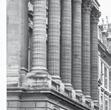

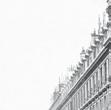




















112/
incident, to the central actors in the upheaval, replacing engineers with top hats. As we know from Plato, shoemakers are supposed to know their place and “stick to their last.”33 Instead, Gaillard erected barricades and broke down social barriers.
In these photographs, two forms of architecture, invoking two kinds of civilization, are juxtaposed. Inserted among the monumental classical facades, the barricades and bodies assert another use of space. Ross notes that Château - Gaillard “reached a height of two stories and was complete with bastions, gable steps, and a façade anked with pavilions.”34 Despite the elaborate structure, within the imperial space this proletarian construction was, like its makers, low, horizontal, and vernacular. In the photographs, the barricade screens the grand architecture, denying the bourgeois spectator an uninterrupted view of triumphal splendor and grandiosity. Here order, regularity, and symmetry take on quite di erent connotations. ese pictures of barricades, which are also pictures as barricades, announce that shoemakers and other workers can creatively reorder space even as they build their universal republic.
e barricade photographs reject high vantage points, and the insurgent construction blocks o the space, defacing monumental and symmetrical vistas, obstructing the transparent (phallic) gaze.
e barricade in these images possesses “aspects but no façade.”35 Yet, unlike Bayard’s fence, nothing bars the viewer’s imaginative access to the defensive structure itself. In fact, the camera is positioned rather low, creating an empty foreground of accessible space with an expanse of cobblestones. In this way the barricade opens into the viewer’s space and perhaps invites us to construct our own barricade from all those available stones. e pictures create a space of encounter or assembly as invitation to proximate solidarity and insurgent universality.
In 1878 the Communard Arthur Artaud wrote, “The Paris Commune was something MORE and something OTHER than an uprising. It was the advent of a principle, the a rmation of a politics. In a word, it was not only one more revolution, it was a new revolution, carrying in the folds of its ag a wholly original and characteristic programme.” 36 In a related vein, barricade photography was new and other; it, too, “drew its poetry from the future.” 37 e slaughter that ended the Commune is di cult to forget, yet one of the temporal paradoxes of photographs is that, as capsules of spacetime, they exist between a suspended instant and anticipation, xing a moment that seems to unfold in the viewer’s own time. Such photographs o er up ephemeral but intense moments of possibility for workers’ new things. ey are a form of Benjaminian “now-time” in which “what has been comes together in a ash with the now to form
Fig. 3
AUGUSTE-HIPPOLYTE COLLARD
BARRICADE RUE ROYALE 8ÈME ARRONDISSEMENT , 1871 (BARRICADE ON RUE ROYALE 8TH ARRONDISSEMENT)
Fig. 4
AUGUSTE-HIPPOLYTE COLLARD
BARRICADE PLACE DE LA CONCORDE–RUE SAINT-FLORENTIN, 8ÈME ARRONDISSEMENT , 1871 (BARRICADE PLACE DE LA CONCORDE–RUE SAINT-FLORENTIN, 8TH ARRONDISSEMENT)
33
Plato, e Republic (Oxford, UK: Oxford University Press, 2008). For an important discussion, see Jacques Rancière, e Philosopher and His Poor (Durham, NC: Duke University Press, 2004); Ross, e Emergence of Social Space, 14–15; and Ri in, “Well-Formed Phrases,” in Communards and Other Histories: Essays by Adrian Ri in (Leiden: Brill, 2016), 231
34
Kristin Ross, Communal Luxury: e Political Imaginary of the Paris Commune (London: Verso, 2015), 55.
35
Lefebvre, e Production of Space, 237
36
Quoted in Ross, Communal Luxury, 21
37
Karl Marx, “ e Eighteenth Brumaire of Louis Bonaparte,” in Karl Marx and Frederick Engels Collected Works 1851–1853, vol. 11 (London: Lawrence and Wishart, 1979), 106.
113/
38
Walter Benjamin, e Arcades Project (Cambridge, MA: Harvard University Press, 1999), 462.
39
e usual English translation of “temps des cerises,” the title of a popular song about love and springtime that became associated with the Commune, is “cherry time.”
40
Traverso, Revolution, 189.
41
Eric Hazan, e Invention of Paris: A History in Footsteps (London: Verso, 2010), 241
42
“A Witness to Resistance; Kazuo Kitai Interviewed by Tsuyoshi Ito,” Aperture, April 6, 2017, https://aperture.org /editorial /witness-resistance. A modern edition has been published as Kazuo Kitai, Barricade (New York: Harper’s Books, 2012).
43
Molly Nesbit, “ e Use of History,” Art in America 74 (February 1986): 79.
a constellation. In other words, the barricade image is dialectics at a standstill.”38 In these photographs the barricades exist as an eternal present, an allegorical temps des cerises. 39 ese photographs crystalize a temporality that de es the victors.
BARRICADES AGAINST BOURGEOIS VISION
In Revolution: An Intellectual History, Enzo Traverso notes that the barricade “attained its apogee during the Paris Commune, before experiencing a progressive decline. But it manifested again in Russia in 1905 and 1917, in Berlin in 1919, in Barcelona in 1936 and 1937; in many European cities in 1944 and 1945 , and back to Paris in May 1968, when its nature had changed and, largely deprived of its practical and military functions, it only preserved a symbolic dimension.”40 Traverso could have extended his litany of barricades to places beyond Europe, from Chile to Japan. Nevertheless, he is correct that, as the twentieth century unfolded, ri es became less common on barricades, and this form of insurgent architecture turned into a “stage set” where those on both sides might exchange insults.41 Other images began to dominate the revolutionary imagination. But before we leave the barricades, we should note the way these structures of insurgency invaded the photographic image as metaphor.
Speaking of his work photographing the Japanese protests of 1968 , Kazuo Kitai writes, “as time passed, people became accustomed to life inside the barricade. It was common to see laundry hanging out to dry, people’s beds, and living spaces. Many of my photographs from inside the barricade depicted daily life.” Kitai called the photo-book that resulted simply Barricade. Strikingly, his title applies as much to his habitus or picture style as to the insurgent architecture: “I wanted my pictures to be just the opposite of what passed then for excellence.”42 e insurgent document stands in negative relation to more elevated and esteemed picture forms, de guring acceptable photographs and confronting viewers.
By the end of the nineteenth century, the barricade picture had already begun to mutate as radicals, who identi ed with the subaltern class, began to make photographs that acted, in the words of Nesbit, as barricades against bourgeois viewers.43 ese were pictures designed to block or exclude middle-class identi cation and possession. In her book Photography and Society, photographer and critic Gisèle Freund o ers an extraordinary insight: Atget and Heinrich Zille, she claims, were “the fathers of documentary” and “the rst in a line of incorruptible photojournalists who surfaced later, in the
114/
1930s.”44 Latching onto these two gures of the Le working in photography, Freund links emptiness and low-plane documents with a popular and distinctive view of modernity, writing, “While Atget photographed empty streets, Zille was interested in their inhabitants. In the marketplace, it was not the display of goods that attracted him, but the women making their purchases. At fairs he did not take pictures of the rides or shows, but of the spectators. is did not stop him from also photographing the backyards of unsanitary houses where workers lived and where the children of the poor walked barefoot.” Freund’s observation sits alongside Benjamin’s remark about Atget, who, he writes, “almost always passed by ‘the great sights and so-called landmarks’; what he did not pass by was a long row of boot lasts.”45 is was a photography of everyday, working-class life.
Nesbit puts esh on these bones. Atget, a man of the extreme Left, created photographs that reject the bourgeois imaginary of Paris for a way of seeing aligned with the French idea of le Populaire. Atget’s city was one of workshops, petite métiers, and small trading. Le Populaire was an alternative to elite Paris and centered on the worker’s world and its pleasures: “the kiosk, the circus, the garbage dump,” the historic quarters where working people congregated, or waterfront bars.46 In part, this was a negative vision, blind to or canceling out the central category in the bourgeois image of modernity that focused on fashion, particularly the “fashionable female body, really the Parisienne.”47 Nesbit calls Atget’s displacement of the bourgeoisie “revolutionary dreamwork” a conception of the world from which the middle class had been erased. Atget o ered a possible image of the future.
Atget forsook the city’s grand views, wide streets, and the “department store with its wealth of goods,” the celebrated sites of middleclass consumerism, for the quotidian places and activities of working-class life: images of street sellers, the “Zone” and its rag pickers, common - place shops, and cabarets selling cheap wine.48 e Paris that emerges from his photographic documents excludes the continually repeated images of the wealthy and their imaginary dominated by consumer pleasures, focusing instead on things and people beyond, or beneath, their notice: “a bag of frites or a bag of beans or an old coat.”49 In contrast to the standard idea of modernity, “He broke the illusion of the shop window.”50 And, if members of the middle class did sometimes crop up in these images, Atget defaced them with hollows, shadows, and ellipses; he worked against facades and transparency. At this point, as the document form coincided with subaltern vision, the barricade engulfed the image. Zille did something similar, sometimes projecting himself through his shadow into the proletarian space.
44
Gisèle Freund, Photography and Society (London: Gordon Fraser, 1980), 91.
45
Walter Benjamin, “Little History of Photography,” in One-Way Street (London: Verso, 2021), 250
46
Nesbit, Atget’s Seven Albums, 138
47
Nesbit, Atget’s Seven Albums, 132; and Molly Nesbit, “In the Absence of the Parisienne . . .,” in Sexuality and Space, ed. Beatriz Colomina (New York: Princeton Architectural Press, 1996), 306–25.
48
Nesbit, Atget’s Seven Albums, 133. e “Zone” was a shantytown on the edge of Paris.
49
Nesbit, Atget’s Seven Albums, 161
50
Nesbit, Atget’s Seven Albums, 202.
115/
1914–1915



51
Allan Sekula, “On the Invention of Photographic Meaning,” Photography against the Grain: Essays and Photo Works 1973–1983 (Halifax: Press of Nova Scotia College of Art and Design, 1984), 3–21
52
For an excellent account, see Mark Crinson, “Dublin, 1897: e Art of (Architectural) Street Fighting,” Perspectiva: e Yale Architecture Journal, no. 52 (2019), 47–57.
From the 1880 s, socialists, anarchists, and feminists began to make photographic documents, putting low- plane vision to work depicting social conditions and advocating social change. Lewis Hine did so by making pictures for campaigns against child labor in New York. Hine has since been elevated as an artist, his images separated from their role in the struggle for change, but he was far from alone: many photographic - barricade makers had begun to forge what we now call “documentary.”51 e British su ragette and revolutionary Norah Smyth documented the ght for women’s su rage and improved working conditions in the East End of London ( g. 5). In such pictures, unruly women emerge from the case les. In one of the most inventive examples of revolutionary dreamwork, in 1897 Irish anti-colonial revolutionaries inserted a visual barricade into the celebration of sixty years of Queen Victoria’s rule. Interrupting the imperial spectacle, they projected slides onto a screen on Rutland Square, Dublin, showing Nationalist gures, social statistics, and photographs by William Mervyn Lawrence that depicted rural evictions carried out by the colonial occupiers. To enhance their specular intervention, the electrical workers union simultaneously turned o the lights, plunging the city into darkness.52 Trade union power combined with visual documents against the imperial spectacle.


116/
Fig. 5 NORAH SMYTH WOMEN SELLING DREADNAUGHT PAPER , CA.
Numerous other examples fed into the worker documentary movement associated with the Communist International, but let us end this consideration of documents and demos, low - plane vision, and subaltern subjects with the Indian photographer Narayan Vinayak Virkar, who in 1919 made a picture of a wall with a crouching figure. 53 There is not much to see in this photograph, just a blotched surface and a man pointing, but with images like this the counter-forensic mode took shape.54 e picture depicts a survivor of the Jallianwala Bagh massacre in Punjab, where British troops opened re on a peaceful crowd protesting the arrest of independence leaders, killing 379 people. e man doubles the ostensive, declarative document by indicating bullet holes. Documents had been employed to classify and de ne colonial subjects; now one was put to work as a form of testimony, summoning witnesses against imperial power. e blank, plain document was turned about.
53
For the central role of worker photography in documentary, see Jorge Ribalta, ed., e Worker Photography Movement, 1926–1939: Essays and Documents (Madrid: Museo Nacional Centro de Arte Reina Sofía, 2011).
54
For counter-forensics, see Allan Sekula, “A Portable National Archive for a Stateless People: Susan Meiselas and the Kurds/ Photography at the Limits of National Identity,” in Art Isn’t Fair, 235–40; and omas Keenan, “Counter-forensics and Photography,” Grey Room, no. 55 (2014): 58–77.
117/






1848: PICTURING PROTEST
ANNE DE MONDENARD
When we think of the first photographs, we often imagine rigid portraits or urban landscapes devoid of gures. We are less likely to envisage images related to events and, even less, popular uprisings. Technological limitations meant that men and women in motion could be captured, if at all, only as ghostly imprints. And revolutionary events do not really lend themselves to the installation of a camera on a tripod in the middle of a turbulent crowd. A few rare images evoke the events of February 1848 in Paris that pushed the French king, Louis-Philippe, to abdicate and gave rise to the Second Republic, including a daguerreotype, currently at the Bibliothèque nationale de France (BNF), of a young insurgent bearing a ag dated “ 22 . 23 . 24 février 1848 ” ( 22 . 23 . 24 February 1848 ) on which the slogans “République française. Liberté. Égalité. Fraternité” (French Republic. Liberty. Equality. Fraternity) are displayed upside down; or a paper negative, currently at the Société française de Photographie (SFP), by Hippolyte Bayard showing the remains of a barricade in the deserted rue Royale. But these images, taken at some distance from the troubles, had limited di usion at the time.
e same cannot be said of the daguerreotype by the Englishman William Edward Kilburn, representing the open-air Chartist meeting in London organized to present to the House of Commons on April 10, 1848 (p. 5), a petition in which the Chartists demanded, among other things, the establishment of universal male su rage.1 e fall of the July Monarchy in France two months previously had reignited their hopes. Five days later, an engraving “from daguerreotype” was published in e Illustrated London News (p. 7 ), founded in 1842 Prior to the invention of the half - tone engraving at the end of the nineteenth century, photographs were reproduced in the press in the form of an interpretation engraved on wood.
CHARLES-FRANÇOIS THIBAULT LA BARRICADE DE LA RUE SAINT-MAUR-POPINCOURT AVANT L’ATTAQUE PAR LES TROUPES DU GÉNÉRAL LAMORICIÈRE, LE DIMANCHE 25 JUIN 1848 (DETAIL), 1848 (THE BARRICADE OF THE RUE SAINT-MAURPOPINCOURT BEFORE THE ATTACK BY GENERAL LAMORICIÈRE’S TROOPS, SUNDAY, JUNE 25, 1848)
1
See Fabrice Bensimon, “Londres, 10 avril 1848: Les Chartistes dans l’œil du daguerréotype,” Parlement[s], Revue d’histoire politique, no. 3 (2021): 79–100.
119/
5
See the engraving of the Fort of Saint-Jean-d’Ulloz in Veracruz “from a view taken by daguerreotype,” L’Illustration, August 26, 1843, 404, mentioned by ierry Gervais, “L’Illustration photographique: Naissance du spectacle de l’information, 1843–1914” (thesis,
7.
Kilburn had time to prepare his photograph. e meeting place, Kennington Common, was then a wasteland on the south bank of the ames. Queen Victoria’s arrival at her residence of Osborne, on the Isle of Wight, and the mobilization of large numbers of police and soldiers testi ed to the government’s nervousness. Kilburn, who had a studio on Regent Street, a main shopping street in London, was known for his daguerreotype portraits. In 1848, he produced several portraits of Prince Albert, the spouse of Queen Victoria, colored like miniatures. (Whether the photo session took place before or a er the Chartist meeting is not known.) e royal couple also purchased from him two portraits of the Swedish singer Jenny Lind (1848). Later, in 1855, Queen Victoria posed with her children before Kilburn’s camera.
When he went to the demonstration of April 10, 1848—we do not know if he was commissioned by the e Illustrated London News— Kilburn used a larger plate format than usual. e photographer did not mix with the crowd. He adopted a viewpoint that overlooked the space, enabling him to sweep it from le to right. e engraving published in the English newspaper shows an almost empty space in the foreground and seems to signify the failure of the demonstration. e crowd, less dense than expected, dispersed peacefully. e daguerreotype used by the engraver has disappeared, but it forms a panorama alongside two plates acquired by Prince Albert even before publication. ese two pieces appear in the form of reproductions on salt paper, annotated in the prince’s handwriting, in a document dated April 13, 1848. 2 is acquisition indicates the royal couple’s early interest in photography related to politics—Queen Victoria had the Treaty of Nanjing photographed in 1842. e juxtaposition of the engravings published in the e Illustrated London News with the two daguerreotypes (reversing their reading direction) suggests a larger crowd that is still converging toward the demonstration.3 However, the panorama does not include the entire space or allow the real turnout to be measured.
The engraving evokes an event that was sufficiently important for the image to be reproduced in France on April 22 , 1848 , in L’Illustration , founded in 1843 , under the title “ Manifestation chartiste à Kennington Common” (Chartist demonstration at Kennington Common), but without reference to the daguerreotype. 4 at information might have been lost, because the image was not an exclusive of the weekly magazine. e latter had already published one engraving from a daguerreotype. 5 A little over two months a er the London demonstration, the dramatic events of June 1848 —when workers protested against the closure of the national workshops, created a er the February Revolution to give work to the unemployed—erupted in Paris. Numerous barricades, erected
120/
2 Alessandro Nasini, e-mail to author, January 28, 2022. I am grateful to Mr. Nasini, senior curator of photographs, Royal Collection Trust, for this information.
3 Bensimon, “Londres, 10 avril 1848,” 88.
4
“Manifestation chartiste à Kennington Common,” L’Illustration, April 22, 1848, 3
École des hautes études en sciences sociales, 2007),
from June 23, were the scene of violent confrontations with loyalist troops that resulted in thousands of deaths in four days. L’Illustration dedicated a special issue to these June days on July 8; the events had prevented publication of the July 1 issue. e magazine published two engravings side by side, each produced, according to the caption, “d’après une planche daguerréotypée par M. ibault” (from a daguerreotyped plate by M. ibault). On one side: “La barricade de la rue Saint - Maur - Popincourt le Dimanche” ( e barricade on the rue Saint - Maur- Popincourt on Sunday, p. 6); on the other: “le lundi après l’attaque” (the Monday a er the attack)—that is, the same barricade liberated from the insurgents. e actual event, the violent conquest of the barricade, is le to the reader’s imagination.
e photographer observed the barricade erected on the corner of the rue Saint-Maur and the rue du Faubourg-du-Temple from a window. Such a viewpoint, frequently employed in the 1840s, allowed shots of the city to be taken away from the agitation, in a setting where the photographer could have the necessary chemicals for the operation on hand. Louis Daguerre adopted a similar viewpoint to produce a bird’s-eye view of the boulevard du Temple in 1838 (pp. 86–87). Jules Itier conducted experiments from his Parisian window in 1842 before leaving for Senegal, and Hippolyte Fizeau and Léon Foucault performed similar experiments at the same time.6 Unlike Itier, Fizeau, and Foucault, ibault is not generally known as a photographer. We know of only three daguerreotypes by him; speci cally, those made in June 1848 from this window, of which one is conserved in the Musée Carnavalet and the other two are in the Musée d’Orsay. e marks engraved on the plates show that they were prepared by PierreAmbroise Richebourg, an important gure in early photography in Paris. A manufacturer and supplier of instruments and accessories, he also gave lessons and received numerous public commissions during the Second Empire.
Research by the historian Olivier Ihl makes it possible to identify not only the building from which these views were taken—number 92 (today 94) rue du faubourg-du-Temple, in a working-class district of eastern Paris—but also the name of the tenant of the at, who was indeed called ibault, and more about the latter’s relationship with Richebourg.7 Born in Paris in 1801, Charles-François ibault was the son of a cashier, the inventor of several patents, an insurance director at the time of his marriage in 1849 , then an annuitant at the end of his life.8 He died on June 9, 1871. 9 His only apparent link with photography was Richebourg. e two men met before June 1848 and continued to see each other a erward. But several questions remain. When, and why, did ibault decide to photograph barricades from his window? When did he obtain the necessary materials
6
See plates PH2291, PH2292, PH20123, and PH20124 in the Musée Carnavalet.
7 Olivier Ihl, La barricade renversée: Histoire d’une photographie, Paris 1848 (Vulaines-sur-Seine, France: Éditions du Croquant, 2016).
8
See the certi cate of his marriage with Charlotte Vincente Pauline Dulac (1802–1869) at Saint-Mandé on September 29, 1849, in Archives départementales du Val-de-Marne, 1 Mi 2597, acte no. 26, p. 506); and the certi cate of her death in the 12th arrondissement of Paris on November 10, 1869, in Archives de Paris, V4E 1561, acte no. 3491
9
Succession of Mrs. Charles François ibault, March 10, 1871–June 11, 1873, Archives nationales, MC/ET/LXVIII/1232.
121/
(optical chamber, lenses, tripod, plates, and chemicals)? And when did he master the process? As Itier’s trials and errors from his own window suggest, more than a few hours were necessary to get the hang of it.
Although the rst violent confrontations took place on June 23, when the barricade on the rue Saint - Maur was destroyed and then reconstructed, Thibault recorded the continuation of the revolt on the morning of June 25 . Did he do so alone or with the help of another person, perhaps Richebourg? We do not know. But two horizontal daguerreotypes of the deserted street, bristling with three barricades—a fourth, just below the building, is outside the eld of vision 10 —were made within a few minutes of each other. In both cases, the unpaved road resembles a large puddle. Although most of the inhabitants were hiding behind shutters, we can identify the rare human presence. On the plaque conserved in the Musée Carnavalet, a head wearing a white hat watches the photographer at work; on the one in the Musée d’Orsay, with the view slightly displaced to the right, a few insurgents are consolidating the rst barricade near the rue Saint-Maur. e next morning, June 26, a few hours a er the recapture of the street by General Lamoricière, causing numerous casualties, ibault produced a third image, vertical this time—also held at the Musée d’Orsay—using a plate that was not completely rectangular and was more roughly cut at the top, as if it had been prepared with scrap metal. e street is animated once more. e inhabitants, who have come out in large numbers, mingle with the National Guards. e barricades are being dismantled.
L’Illustration somehow came to know about these daguerreotypes and asked an engraver to interpret two of them. is anonymous artisan drew them in an oval, placed vertically, to provide a better comparison: before and a er the battle. For the events of June 25, he used the image in which the street is most central (Musée Carnavalet). For June 26 , he reinterpreted the movements of the crowd more freely. With this juxtaposition the magazine seems to be relating the failure of an insurrection against the Republic. But what was ibault relating? His viewpoint on June 25 was like that of one entrenched, waiting in ambush over the last barricade, proposing a reverse-angle shot to the stories and lithographs made from behind the defenders of order. e position of June 26 can be read as that of a defender of the restored order. According to Ihl, ibault and Richebourg were “committed republicans” during the July Monarchy (1830 – 1848 ). In 1848 , as president of a fraternal club of Faubourg- du- Temple, ibault was attached to the right to vote but against the inclusion of the right to insurrection in the French constitution.11 e three daguerreotypes are the products of a constrained position (the window) and make of the photographer a supporter neither of the insurgents nor of the
122/
10 See Ihl,
, 29 11 Ihl,
21
78–83.
La barricade renversée
La barricade renversée,
,
return to order, but rather a privileged observer of a political event taking place outside his building.
The images produced during the actual course of the popular revolts in 1848 in both London and Paris had few antecedents in the history of images. For this reason, L’Illustration assembled the drawings made from the daguerreotypes by ibault and Kilburn into a lavish volume of six hundred engravings published in one hundred editions from August 1848: Journées illustrées de la Révolution de 1848: Récit historique de tous les événements accomplis depuis le 22 février jusqu’au 21 décembre 1848 . is time, ibault’s name is no longer associated with the images; who requested its removal is not known. e photographic plates were then forgotten about until the 1970s. In 1987, the two Kilburn plates acquired by Prince Albert were published by Frances Diamond in her book Crown and Camera, while the existence of a third plate remained in doubt. As for ibault’s three daguerreotypes, their fate remains uncertain. He apparently entrusted or gave a pair to his friend Jean Pierre Piver, owner and occupant of 92 rue du Faubourg-du-Temple, the building from which the shots were taken. Piver, who was also the witness at ibault’s marriage in 1849, hung the “deux tableaux au daguerréotype” (two daguerreotype pictures) in black wooden Napoléon III–style frames in his living room.12 All trace of the two plates was then lost for more than a century until they reappeared in the Les Halles district in 1970, where they were acquired by Count Geo roy de Beau ort before being purchased at auction in London in May 2002 by the Musée d’Orsay.
e fate of the third Parisian plate, made on June 25, is even more uncertain. It passed from ibault, who died without heir in 1871, to Auguste Luttringer (1869–1947), who, with his brother Charles, ran the framing company Ch. Luttringer founded in 1863 by their paternal uncle.13 Specializing in the framing of drawings, engravings, and watercolors, as well as advertising its expertise in “mounts for photography,” this company might well have made the title plate and the neat mount of the daguerreotype. Auguste Luttringer donated the plate, which he described as an “old family souvenir,”14 to the Musée Carnavalet in 1934 , the same year the family business, which had been located at 48 rue du Faubourg Saint-Denis since 1899, changed its name to “maison Luttringer.”15 But the plate, which curator Jean Robiquet took delivery of the year he retired, was forgotten in the museum’s reserves. It was, for example, not listed among the two thousand works in the exhibition La révolution de 1848, organized at the Bibliothèque nationale in 1948. Musée Carnavalet curator François Boucher was a member of the national committee for the centenary celebrations, and his museum was one of the lenders to the comprehensive exhibition, which presented other photographs related to the
12
Inventory a er death of Marie Catherine Delépine, spouse Piver, December 17, 1851, Archives nationales, MC/ET/XXXVIII/1064
13
Auguste, born April 13, 1869, in Ranspach; died April 28, 1947, in Saint-Maur. Charles, born September 12, 1864, in Ranspach; died July 28, 1932, in Saint-Maur. A younger brother, Auguste, also a framer, born in Ranspach on June 18, 1875; died June 2, 1900, in the 10th arrondissement of Paris. All three were sons of Séraphin Luttringer and Marie Anne Luttringer. eir uncle Charles, born December 29, 1935, in Ranspach, former soldier of the 56th line regiment at the Napoléon barracks, died on August 7, 1895, in Saint-Maur.
14
A. Luttringer to the curator of the Musée Carnavalet, June 19, 1934, Musée Carnavalet, 1 AH 53
15
Annuaire-almanach du commerce, de l’industrie, de la magistrature et de l’administration (Paris: Firmin-Didot frères, 1899, 1933, and 1934).
123/
events of 1848. In particular, it included the February 1848 portrait of the young insurgent (from the Sirot collection, currently at the BNF) and a quarter-plate daguerreotype of the Bastille column (currently at the SFP) from a set of six photographs taken around 1848 that also includes a view, not selected for the exhibition, of the Panthéon in which guns are visible. In 1989 , Françoise Reynaud, curator at the Musée Carnavalet, attributed the six daguerreotypes to the Danish marine painter Anton Melbye ( 1818 – 1875 ), who lived in Paris from 1847 to 1858 and collected photographs as an aid to painting.16 e 1948 commemorative exhibition also presented two reprints from paper negatives by Bayard. e rst image, dated March 1848, shows the remains of barricades in the rue Royale with a tree of liberty in the middle of the road. e second shows the altar erected on July 6, 1848, on the place de la Concorde for the June victims. Both photographs are devoid of human gures.
16
Paris et le daguerréotype, exh. cat. (Paris: Paris Musées, 1989), 248
17
49.
Jean-Claude Baudot, Who’s What, l’Annuaire des collectionneurs (Paris: Stock, 1975), 812–13 18
Clément Lépidis and Emmanuel Jacomin, eds., Belleville (Paris: Henri Veyrier, 1975), 263 19
Gilbert Gimon, “1848: Paris se révolte: ibault photographie les barricades,” Prestige de la photographie, no. 4 (June 1978): 157–59.
The attribution of the three daguerreotypes to Thibault, even though his name had been mentioned from the time of their rst publication in L’Illustration on July 8, 1848, is likewise confused. In 1975, when Beau ort published his two images, he described them as “ e earliest known photographic reportage (published for the rst time in the world).”17 e collector was unable to associate them with an author because he was referring to the volume Journées illustrées de la Révolution de 1848, which simply indicates “Barricade Saint-MaurPopincourt avant (ou après) l’attaque” (Saint-Maur-Popincourt barricade before [or a er] the attack), but the dates (June 25 and June 26) given by Beau ort are correct. is is not true of a book on the Parisian district of Belleville that, in the same year, 1975, reproduced the image of June 25 but associated it with the events of the 1871 Commune.18 Beau ort’s pair of daguerreotypes was de nitively attributed to ibault by the collector Gilbert Gimon in 1978. 19 Gimon was not mistaken about the event, but he was wrong in situating the shot in the rue de la Folie-Méricourt. is error suggests either that Gimon, if he was aware of the Musée Carnavalet daguerreotype, ignored it; or, more likely, that the image was then still unknown. Its title plate, xed to the mount, leaves no room for ambiguity about the image’s location or date: “Barricades dans le Faubg du Temple le 25 juin 1848 à 7h ½ du matin” (Barricades in the Faubg du Temple, June 25, 1848, at 7:30 in the morning). But due to L’Illustration’s shi ing captions, the title plate was not taken into account when the three plates were brought together in 1989 in the exhibition Paris et le daguerréotype. e location from which the shot was taken also remained uncertain in the 2003 exhibition Le daguerréotype ançais at the Musée d’Orsay. Ihl de nitively li ed the veil on the question in 2016, con rming the caption on the title plate.
124/
–
Since 1989, these three plates produced in Paris have o en been presented as the rst photographs of a political event to be published in the press in the form of drawings. But this does not take into account Kilburn’s plate. We can more accurately say that all these daguerreotypes from the year 1848 constitute an archaeology of photographic reportage, constructing an account across several images made during actual events. ibault and Kilburn used the same type of viewpoint, the rst leaving the camera static for two days, the second taking several shots at the same moment and sweeping the space from le to right. Both photographers testify to popular protests and their failure. Neither was involved in these movements, but their images illustrate a formula later articulated by press photo agencies from the 1960 s onward, one that has become ever more pertinent since the advent of the internet, portable telephones, and social networks: a photographer, whether amateur or professional, will always be present at any event, ready to capture it.20
125/
20
See Michel Guerrin, Profession photoreporter (Paris: Éditions du Centre Georges Pompidou; Gallimard, 1988), 167.


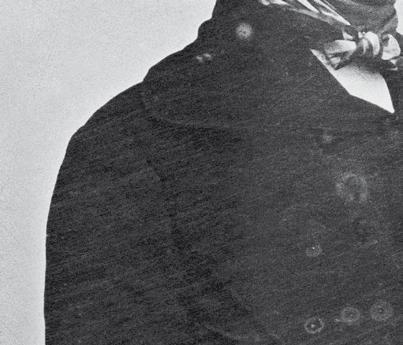



EXCEPTIONALLY TYPICAL: SUBLIMINAL REVOLUTIONS IN THE REALM OF PORTRAIT PHOTOGRAPHY AROUND 1848 IN
CENTRAL EUROPE
PETRA TRNKOVÁ
As with other military con icts, during the revolutionary turmoil of the late 1840 s in Europe the demand for portrait production increased considerably. is time, alongside lithographs and newspaper woodcut illustrations, photography was also given a relatively large space, both as a model for graphic art and as an autonomous visual medium. The reason for the growing demand for portraits of all kinds was not only the public’s desire to orientate themselves among the plethora of new names that suddenly emerged in the public space, be they politicians, commanders of national guards, or the victims of street clashes.1 In the context of photography, it was also the desire to preserve a faithful personal memory of a period that fundamentally in uenced the run of society as a whole, as well as the fate of individuals. Despite the abundance of this material, which can be found in countless European collections, these portraits play a rather marginal role in the historiography of photography. e reasons for this are obvious: most of the photographs are mediocre and anonymous works in every respect: we do not know the name of the photographer, the identity of the sitter, the place of their creation, or
1 See, for example, Detlef Ho mann and Ute Wrocklage, “Die daguerreo-typisierten Männer der Paulskirche: Parlamentarierportraits der ersten deutschen Nationalversammlung in Frankfurt 1848/49,” in Silber und Salz: Zur Frühzeit der Photographie im deutschen Sprachraum 1839–1860, ed. Bodo von Dewitz and Reinhard Matz (Cologne: Edition Braus, 1989), 401–37; Monika Faber, “1848: Daguerreotypien als Fetisch und Bildpropaganda,” in Maren Gröning and Monika Faber, Inkunabeln einer neuen Zeit: Pioniere der Daguerreotypie in Österreich 1839–1850 (Vienna: Albertina, 2006), 164–70; and Petra Trnková, “Anastas Jovanović: Photographer of the New Slovak Political Representation,” RIHA Journal, no. 0273 (2022), https://doi.org/10.11588 /riha.2022.1.87886.
127/
P.
MALOCH AND JOSEF MÁNES DAGUERREOTYPES (DETAIL), 1848
JAN
their provenance. However, this mass is extraordinary not only in its quantity but also in its scope and particularly in its obvious connection with the revolutionary years of 1848 and 1849.
SIGNIFICANT MARGINS
2
See Elizabeth A. McCauley, A.A.E. Disdéri and the Carte de Visite Portrait Photograph (New Haven: Yale University Press, 1985), 30; and Carlo Ginzburg, “Microhistory: Two or ree ings at I Know about It,” Critical Inquiry 20, no. 1 (1993): 21
Edoardo Grendi, “Micro-analisi e storia sociale,” Quaderni storici 35, no. 2 (1977): 506–20; and Matti Peltonen, “Clues, Margins, and Monads: e Micro-micro Link in Historical Research,” History and eory 40, no. 3 (2001): 347–59 4
at photography played a signi cant part in the European events of the years 1848 and 1849 is evidenced by the wealth of clearly dated portraits of the new political representation and other prominent public gures, many such portraits o en being the oldest surviving photographs of those gures. In addition to these portraits, a relatively large number of photographs were taken of those from the marginalized communities to whom the revolution temporarily brought new, until then inconceivable privileges such as freedom of speech and association, the right to carry weapons and wear uniforms, to smoke in public, to attend parliamentary sessions, or even to elect parliamentary representatives. But these people were not members of the proletariat. e right to have a photographic portrait taken remained economically conditioned, and photographic portraiture as a cultural practice thus remained the preserve of the nobility, the bourgeoisie, and the intelligentsia or the more or less a uent and educated classes, not workers.2 Among those who, thanks to the democratizing and liberalizing processes of the revolutionary period, suddenly became a much more visible part of the public space and, at the same time, were able to record this extraordinary situation in the form of photographic portraits were students, women, and members of the emerging national communities.
As a whole, these portraits are remarkable both for their number and for their dual nature. ey are di erent and similar at the same time, easily identi able with the revolutionary years of 1848 and 1849, regardless of their geographical or ethnographic origin. at is, they are “exceptionally typical”—diverse yet looking the same, and, as with other manifestations of the period, such as pamphlets, cartoons, or music, the context of their creation is not in doubt. 3 is ambivalence, evident both in national and international contexts, is a remarkable detail that signals a larger, hidden structure and an epistemologically proli c subject.
A clue to identifying and researching the portraits of the members of the marginalized sections of society generated by the revolutionary events of 1848 and 1849 is “revolutionary clothing.” Unlike other uniforms, it was not only a privilege and a symbol of social distinction but also a clear manifestation of political a liation and evidence of active participation in revolutionary events.4 Such clothing could take
128/
3
Michaela Marek, “‘Prag 1848/49’ und die nationale Symbolik in der Tschechischen populären Druckgraphik,” in 1848/49—Revolutionen in Ostmitteleuropa, ed. Rudolf Jaworski and Robert Lu (Munich: R. Oldenbourg Verlag, 1996), 124–25. 126
the form of a complete uniform or of speci c headgear (especially, in the beginning, the characteristic Italian Calabrese hats decorated with ostrich feathers), cockades, or color armbands. is is the case in an anonymous daguerreotype portrait of a legionary, probably a member of the Prague academic legion, that deviates from the international pattern only with its red-and-white trouser stripes and a sleeve band indicating a connection with the “Slavic element.” More important than the speci c shape of these costumes, however, was their existence, which made them a universally understood signal.5
STUDENTS
From the outset, some of the most visible and agile protagonists of the revolutionary process were the armed academic legions that formed in the Austrian Empire in March 1848. eir primary aim was to maintain order, yet many of their members, chie y university students, were involved not only in political negotiations but also in celebrations, protests, and, eventually, ghts on the barricades. e legions, like the bourgeois national guards, soon developed an organizational aspect in the form of uniforms or distinctive symbols such as appliques and caps that, in the rst phase of the revolution, demonstrated faculty a liation and rank and only later came to re ect the national or ethnic affiliation of the owner. Weapons almost immediately became the most spectacular and universal part of the student legionnaires’ uniforms. As with clothing, choice of weapon depended primarily on what was available to the wielder. Most o en one would see sabers, bayonets, or ri es taken either from the home arsenal or borrowed from the municipal armory. e Prague Franciscan Otto Kröpfel describes the militarism of academia in 1848 quite clearly: “Students at that time learnt nothing but only trained in how to use weapons, kept honor guard outside the houses of their professors, now o cers, sang songs in the streets, smoked, visited pubs; schools were turned into barracks.”6
Kröpfel’s description is matched by a double daguerreotype portrait, now in the Metropolitan Museum of Art in New York ( g. 1), that depicts a pair of young men who are an almost ideal example of the members of the Prague University legion in spring 1848 Although we do not know the identity of the young man depicted on the le , we do know that sitting by his side is Franz Fridrich, then a student at the Law Faculty of Prague University and later a successful Prague photographer. Fridrich came from the relatively well -o family of a former mayor of the town of Mělník (Central Bohemia). Archive documents and recollections of his contemporaries show
129/
5 Jan Randák, “Symbolické chování v revoluci 1848: Revoluční móda,” Ceský lid 93, no. 1 (2006): 49 6
Otto Kröpfel, “Mé upomínky na pražské události v roku 1848 a v následujících letech,” Čas 3, no. 2 (1898): 11.
7


Jiří Koliš, František Fridrich: e
Photographer of 19th-Century Prague (Prague: PETIT, 2018), 83–84, 96–97
8
See, for example, Anton Springer, Aus meinem Leben (Berlin: G. Grote’sche Verlagsbuchhandlung, 1892), 126–29.
that he led an eccentric, adventurous life as a student, as is perhaps suggested by the pose and costume chosen for his portrait, which, in addition to a law faculty cap, includes “knightly” gloves, a pipe, and a amboyantly open shirt.7 e portrait, possibly created in the studio of the Prague daguerreotypist Wilhelm Horn, also evokes an important aspect of the early phase of revolutionary events in Austria; namely, the theatricality of the participants and of the revolution itself: according to many witnesses, the street scenes in Austria at that time seemed more akin to improvised theater performances than to reality.8




WOMEN
For a brief period, the revolution in Austria contributed significantly to the emancipation of women. Traditional gender patterns
130/
1 UNKNOWN
Fig.
PORTRAIT OF FRANZ FRIEDRICH (NÉ MELNIK BÖHMEN) AND FRIEND, 1840 s
Prominent
were challenged in various areas, the stereotype of the peaceful, gentle lady was shattered, women gained some civil privileges, and the range of roles they could hold within the public sphere expanded. 9 Many women were inspired to take part in the revolutionary events in traditional “maternal” spirit, which manifested in taking up charity collections, caring for the wounded, or helping to organize revolutionary celebrations. Others took up arms and dressed for ghting on the barricades, and a not insigni cant number of bourgeois women sought to penetrate the world of politics, seeing themselves as political individuals who, like men, were entitled to full civil rights. Nonetheless, the rst, rather ordinary and therefore less visible type predominated, leading to considerably fewer female photographic portraits that can be identi ed with the revolutionary events of 1848 and 1849. Plenty of female revolutionaries are depicted in lithographs, but, in general, “despite the considerable role of women . . . the memory of the revolution was formed through male images.”10
One of the few photographic portraits that can be mentioned in connection with the revolution - driven emancipation of women at the end of the 1840s is an anonymous daguerreotype from the collection of the Höhere Graphische Bundes-Lehr- und Versuchsanstalt (Higher Federal Institution for Graphic Education and Research) in Vienna, now on long - term loan at the Albertina ( g. 2 ). Unfortunately, the portrait of the unknown revolutionary woman holding a pipe and a lea et is badly damaged, and many details, including the cityscape in the lower right - hand corner, are illegible. Still, it can be inferred that the sitter was a person from a liberal, politically active bourgeois background. Likely, she was connected with the Viennese emancipation movement, speci cally the Wiener Demokratischer Frauenverein (Vienna Democratic Women’s Association). is strictly female association was established at the end of August 1848 and declared its commitment to the international ideals of equality and solidarity, regardless of nationality and economic status. Although the association existed for only two months before its activities were banned a er the defeat of the revolution in the autumn of 1848, it won the support of hundreds of women and men and even took an active part in o cial political negotiations in the metropolis. e portrait is all the more interesting because a portrait of a national guardsman, taken in the same studio and with the same pictorial decoration, has also survived ( g. 3 ). Both photographs are described in the catalog of the Albertina collection, the second as “a portrait of a man in uniform,” while the rst is interpreted as “a portrait of an actress in a breeches role”—emancipated women wearing male clothes were o en the target of ridicule and disdain and a
9 Gabriella Hauch, Frau Biedermeier auf den Barrikaden: Frauenleben in der Wiener Revolution 1848 (Vienna: Verlag für Gesellscha skritik, 1990).
10
Axel Körner, “ e European Dimension in the Ideas of 1848 and the Nationalization of Its Memories,” in 1848—A European Revolution? International Ideas and National Memories of 1848, ed. Axel Körner (London: Macmillan Press, 2000), 17.
131/
11
Gabriella Hauch, “Did Women Have a Revolution? Gender Battles in the European Revolution of 1848/49,” in Körner, 1848, 76
12
Mirjam Moravcová, Národní oděv roku 1848: Ke vzniku národně politického symbolu (Prague: Academia, 1986).
13
Benedict Anderson, Imagined Communities: Re ections on the Origin and Spread of Nationalism (London: Verso, 2006), xiv.
14
See, for example, Josef J. Toužimský, Na úsvitě nové doby: Dějiny roku 1848: V zemích českých (Prague: Josef R. Vilímek, 1898), 468–526
15
Jan Janko and Soňa Štrbáňová, Věda Purkyňovy doby (Prague: Academia, 1988), 148; and Springer, Aus meinem Leben, 127–28.
popular subject of caricatures, attitudes that intensi ed as the wearing of revolutionary clothing spread.11
FROM THE INTERNATIONAL TO THE NATIONAL
As the revolutionary events progressed and the focus shi ed from the original international ideas to national ambition, revolutionary clothing became more and more an expression of national distinction. Not only did national colors and emblems appeared in the public space but so did complete national folk costumes, both traditional and newly created. In multiethnic Austria, the sudden importance of nationally distinct costumes was particularly evident among the Slavic minorities. e Czechs, especially those from Prague, took a speci c path. Dissatis ed with the traditional clothing of the Bohemian and Moravian country folk, they decided to design a brand new national costume that would be “faithfully historical,” comfortable, and also su ciently representational; that is, it would not degrade its wearer in high society. “Authentic” models were sought in the folk costumes of other Slavic tribes, as well as in history (i.e., the Renaissance and proto-Slavic periods).12 is “atavistic fantasizing” about Czech national traditions not only boosted nationalist thinking but also resulted in a variety of out ts that were a mixture of historicist elements, elements found in the traditional clothing of Poles and Serbs, and more than a little in romanticism.13
e interest of a large part of the Czech public in the national folk costume rose during the Prague Slavic Congress of June 1848, which brought together from Austria and other countries hundreds of Slavs dressed in folk costumes. 14 e locals sought to adapt to this unprecedented concentration of Slavic clothing in the streets and had similar clothes made depending on their means. e mania for folk costume, which did not end with the Slavic Congress but continued at the Imperial Assembly in Vienna, soon became a target of criticism from various parts of the political and social spectrum. For example, according to the German revolutionary socialist Friedrich Engels, the prehistoric costumes of the participants and the sentimental speeches rightly resembled the era of Pan - Germanic enthusiasm, whereas the Prague liberal Anton Springer saw in the costume madness a connection with revolutionary violence—or rather, with the misinterpretation of the fall of the country’s former absolutist establishment as signaling the absolute right of the population to express its opinion, whether by means of a national costume, a lea et, or a weapon.15
132/
Fig. 2
UNKNOWN
BILDNIS EINER SCHAUSPIELERIN IN HOSENROLLE MIT LANGER PFEIFE, NEBEN SICH EIN ARCHITEKTURFOTO , CA. 1850 (PORTRAIT OF AN ACTRESS IN PANTS ROLE WITH LONG PIPE, NEXT TO HER AN ARCHITECTURE PHOTOGRAPH)

Fig. 3
UNKNOWN
BILDNIS EINES HERREN IN UNIFORM MIT ARCHITEKTURFOTO IM VORDERGRUND , CA. 1850 (PORTRAIT OF A GENTLEMAN IN UNIFORM WITH ARCHITECTURE PHOTOGRAPH IN FOREGROUND)
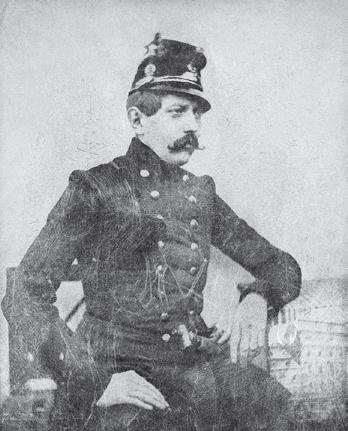
133/
JAN MALOCH AND JOSEF MÁNES DAGUERREOTYPES, 1848
16







Marek, “’Prag 1848/49,’” 124–25; Moravcová, Národní



















oděv roku 1848; and Petra Trnková, “Photography in 1848: Five Case Studies from Central Europe,” History of Photography 43, no. 3 (2019): 244–46

































17









Mirjam Moravcová, “Slovanské inspirace českého ‘národního’
odívání: Léta 1848–1850,” in Slovanství a česká kultura 19. století, ed. Zdeněk Hojda, Marta Ottlová, and Roman Prahl (Prague: KLP, 2005), 273.








e “fashion” shi from international ideals to national claims is well illustrated by a double daguerreotype portrait from the estate of the renowned Czech painter Josef Mánes ( g. 4 ), who also produced several designs for costumes published in the Czech press.16 While one of the portraits shows Mánes the revolutionary holding a white Calabrese hat, the other shows Mánes wearing a prototype of the national costume and posing as a representative of the Czech national movement. The Bronowice (Kraków) folk costume was used as a model—with striped pantaloons tucked into boots, a coat with fringes, and a hat with a peacock feather. However, Mánes’s version, which also includes the almost obligatory revolutionary saber, is based, unlike the Kraków original, on the then current urban fashion of narrow sleeves and a tight t. e painter’s participation in the implementation and promotion of the idea of the Czech national costume was not a coincidence; it tted in both with current events and with his own art and re ections on the so-called national style, which had both political and social overtones.17
e revolutionary years of 1848 and 1849 brought not only a series of dramatic events but also a strong need to record them, meditate on them, and preserve them in memory—whether in the form of chronicles, lithographs, newspaper reports, or photographs. e ample surviving material, itself certainly but a fragment of the original volume, is clear evidence of this. However, unlike the lithographs

134/
Fig. 4
and memoirs that have been thoroughly mapped and researched, the photographs have held little interest for historians. European collections have preserved many photographic portraits that re ect the social and photographic scene of the time, along with the democratization processes and the emancipation of some marginalized communities. Frequently, this material does not stand out from the average production either in content or technique and is recognizable only in the details. Yet, a deeper understanding of these latent marginal structures is likely to generate new knowledge and thus push the photo - historical narrative beyond the existing empire of photographic history.
135/



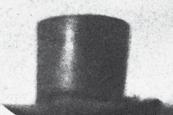































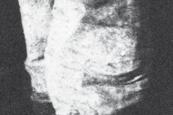








IMAGINING THE COMMONWEALTH: ADAMSON AND HILL’S NEWHAVEN PHOTOGRAPHS
DUNCAN FORBES
In 1843 , the Scottish photographers Robert Adamson and David Octavius Hill photographed the Scott Monument in Edinburgh at various states of completion ( g. 1). Designed by the self-taught architect George Meikle Kemp, the sixty-one-meter Gothic sandstone edi ce rose proudly in the center of the city, testament to the literary authority of the historical novelist Sir Walter Scott. Adamson and Hill’s series of calotype views exposed the contradictions of this monumentalizing endeavor. On the one hand, the monument sought to embed the reputation of a writer who had done more than any other to delineate Scottish national culture while remaining wedded to Tory patronage and the unionist politics that sustained the British Empire. On the other hand, the age of Scott and “Old Corruption” was receding fast under pressure from a bourgeois body politic ushered into being in the wake of the Reform Act of 1832. For Adamson and Hill, the hierarchic monument would not just x ideology in space; consciously or otherwise, its incompletion signaled open-endedness. e half- nished monument heralded the liberal and progressive spirit of the age, an emblem of a modernizing nation escaping the factionalism of the postrevolutionary period. Photographing the Scott Monument under construction was to represent a national-popular culture in the making.
Adamson and Hill’s photographic partnership, begun in Edinburgh in 1843, reveals the strength of Scottish cultural distinctiveness pursued alongside a commitment to unionist politics and the economic and military expansionism of the British Empire. Forged, as Ian Duncan has argued, in “Scott’s shadow,” romantic Edinburgh staged the emergence of a peculiarly modern conception of cultural
137/
ROBERT ADAMSON AND DAVID OCTAVIUS HILL ALEXANDER RUTHERFORD, WILLIAM RAMSAY, AND JOHN LISTON, 1843–1857
Ian Duncan, Scott’s Shadow: e Novel in Romantic Edinburgh (Princeton, NJ: Princeton University Press, 2007), 48








Heinrich Schwarz, David
Octavius Hill: Der Meister der Photographie (Leipzig: Insel-Verlag, 1931).

nationalism, one in which “[c]ulture absorbs politics[,] and an aesthetic investment in tradition constitutes national identity.”1 Hill, a landscape painter and secretary of the Royal Scottish Academy, was deeply invested in this transformation of Scottish life, and he worked hard to submerge social and political di erence into a vibrant commercial republic of taste. Photography, too, he dared to hope, would soon constitute this new, entrepreneurial regime of national culture. However, in Scotland factionalism was never far away. Scottish photography emerged in the context of a bitter schism in the Church of Scotland in 1843, known as the Great Disruption, during which 457 Evangelical ministers broke from the established church to form the Free Church of Scotland.2 is complex dispute focused on the legacy of the 1711 Church Patronage (Scotland) Act in which lay patrons—often landowners, many absentee—had the power to

138/
1
2
Fig. 1 ROBERT ADAMSON AND DAVID OCTAVIUS HILL SCOTT MONUMENT, EDINBURGH , CA. 1843
appoint ministers to the local parish. is power called into question the Scottish church’s spiritual independence from the British state.3 Hill’s mix of committed Protestantism and conservative liberalism made him a supporter of the Great Disruption; he decided to memorialize the new religious counterpublic in the form of a vast history painting. Setting up a studio in Edinburgh with Adamson, who understood the intricacies of the calotype’s ckle chemistry and optics, Hill harnessed the agency of light to record the likenesses of the dissenting ministers. e painting took twenty-three years to complete, by which time the Great Disruption was mostly irrelevant and photography was well on its way to becoming, as Karl Marx noted, one of the ve emerging industrial powers of the British Empire.4
Scottish photography was born, as Marx put it, of “the cunning of history,” a mode of representation carried forward by lone experimentation, doctrinal schism, and the con dence of an expanding national bourgeoisie. is points to the profound congruence of class and technique that Walter Benjamin identi ed in the calotype, encapsulated for him by its slow exposure times and “air of permanence,” to which might be added the a ective resonance of a national tradition of aesthetic eminence.5 Certainly, in the wake of Adamson’s untimely death in 1848 , and propelled by Hill’s retrospective ambition (he could scarcely operate the camera), this is where the calotype ended up—as the individualized expression of art photography par excellence.6 But, initially at least, the calotype’s status proved more mobile. Its meanings ranged from the “wonderous” exposure of reality (a form of autogenesis), to an Enlightenment social-descriptive tool (what the scientist David Brewster described as the delineation of “di [eren] t bodies & classes of individuals”), to a method of Protestant truthtelling (transparency being the animated spirit of evangelism). Beyond the immediate pressures of the Great Disruption, the Scottish calotype might also be positioned as a mode of Humean “common sense,” bringing together reason and reality, aesthetics and sentiment, in a way that would encourage the benevolence of an undi erentiated public.7
At much the same time as they were photographing the Scott Monument, Adamson and Hill also began to photograph the sherwomen and -men of Newhaven, a shing village on the Firth of Forth a mile and a half outside Edinburgh (p. 136, g. 2). eir commercial ambition was announced in August 1843 in the form of a sixvolume publishing project, the rst part of which would be dedicated to e Fishermen and Women of the Frith [sic] of Forth. is was to be followed by Highland Character and Costume, e Architectural Structures of Edinburgh, e Architectural Structures of Glasgow, &c, Old Castles and Abbeys &c in Scotland, and Portraits of Distinguished Scotchmen. 8 Adamson and Hill invested in new camera equipment and,
3 Stewart J. Brown and Michael Fry, eds., Scotland in the Age of Disruption (Edinburgh: Edinburgh University Press, 1993).
4
Karl Marx, Capital: A Critique of Political Economy, vol. 1 (1867), cited in Steve Edwards, e Making of English Photography: Allegories (University Park, PA: Pennsylvania State University Press, 2006), 1.
5
Walter Benjamin, “Kleine Geschichte der Photographie,” Die Literarische Welt, September 18, 25, and October 2, 1931
6
e classic statement of this position is Sara Stevenson, e Personal Art of David Octavius Hill (New Haven: Yale University Press, 2002).
7
ese positions are all available in the early Scottish criticism of the calotype. See, for example, David Brewster, “Photogenic Drawing, or Drawing by the Agency of Light,” Edinburgh Review or Critical Journal 76, no. 154 (January 1843): 309–44; “ e Two Prints,” e Witness, June 24, 1843, 3; and Hugh Miller, “ e Calotype Invented by Henry Fox Talbot, ESQ. F.R.S.A,” e Witness, July 12, 1843, 3
8
Sara Stevenson, Hill and Adamson’s e Fishermen and Women of the Firth of Forth (Edinburgh: National Galleries of Scotland, 1991), 12.
139/
D.O. Hill to Henry Bicknell, Edinburgh, 17 January 1849, in George Eastman Museum manuscript collection, AC H645 acc. 830
Anthony W. Lee, e Global Flows of Early Scottish Photography (Montreal: McGill-Queen’s University Press, 2019), 11–92.
as far as can be fathomed, photographed the shermen and -women intermittently from 1843 to 1846, producing somewhere over 130 separate Newhaven negatives. However, the immense cost of calotype production, and Adamson’s failing health, meant that the wider publishing project soon stalled. By late 1848, in the wake of Adamson’s death, Hill resorted to distributing the Newhaven photographs as part of large-scale commemorative albums, determinedly authored by him (Adamson had only “assisted”) and intended as aids for artists. As the calotype retreated into the closed circles of Scottish antiquarianism, so, too, Hill’s evangelical zeal also appears to have faltered. e calotype, he wrote to a patron in early 1849, is the “imperfect work of a man— and not the much diminished perfect work of god.”9



e context of the Newhaven shing community—de antly local but ever more subject to the competitive pressures of capitalist globalization—has been well described.10 During the 1840s, a eet numbering around 150 boats su ered the steady concentration of commercial forces. e shing industry was becoming more intensive, with the shermen and - women enduring ever more exploitative forms of enclosure of their oyster beds and shing grounds. At the same time, the hinterland of Scotland’s cities was extending rapidly, seen in proliferating tourist steamship routes, a rising number of passenger

140/
9
10
Fig. 2
ROBERT ADAMSON AND DAVID OCTAVIUS HILL MRS. GRACE RAMSAY AND FOUR UNKNOWN WOMEN , 1843–1847
ferries, harbor and pier expansions, and a growing railway network. Newhaven was thrust into competition with the larger ports of Leith and Granton nearby. With the intrusion of English eets into Scottish waters, the price of oysters and herring swung erratically, not helped by the more aggressive presence of intermediaries from England. In this cauldron of ux we begin to sense the di culty of Adamson and Hill’s photographic exchange with the people of Newhaven—its sheer contingency. What happens if we set Benjamin’s sense of congruence to one side and accept class and religious con ict as abiding logics in the early years of the Scottish calotype? If so, what might be le of the settled version of the Newhaven photographs as somehow constituting a prototype of “documentary”?
I propose two quite di erent readings of the Newhaven photographs. As the titles of Adamson and Hill’s larger publishing project suggest, the shermen and -women were also to be “monumentalized,” a descriptive component of a larger, ambitious project of national delineation in photography. Here we sense something of the Humean trajectory noted above, a commitment to everyday life as a discrete category conceived by elites that is so much a feature of Scottish pastoral representation at this time.11 Newhaven prototypes across printmaking (Walter Geikie and John Kay) and literature (Fanny Kemble) frequently expressed bourgeois primitivizing desire via the costume, physical strength, independence, and moral virtue of the sherwomen in particular ( g. 3).12 For Duncan, this trajectory is symptomatic of
Duncan Forbes,

and Watching the Natural Incidents of the
Genre Painting in Scotland, 1780–1830,” Oxford Art Journal 23, no. 2 (2000): 79–94



141/
11
12
“‘Dodging
Peasantry’:
Stevenson, Hill and Adamson; and Lee, Global Flows.
Fig. 3
WALTER GEIKIE NEWHAVEN FISHER FAMILIES OUTSIDE THEIR COTTAGES—A GOOD JOKE , N.D.
15
the imagining of national culture in Scott’s shadow, a production of Scottish romanticism’s literary marketplace. As he caustically argues, the trajectory amounts to a “skeptical dismantling of the metaphysical foundations” of the Enlightenment in favor of a “sentimental investment in ‘common life,’ intermittently recognized as an imaginary construction of reality rati ed by custom.”13 Few descriptions succeed better at expressing the mainstream of Newhaven representations and their many pastoral equivalents. But at the same time, Adamson and Hill’s calotypes mark a break in this trajectory, notable for the stunning, secular presence of the shermen and -women themselves and for the speci city of their context—a trace, perhaps, of lived experience.
That context, the Great Disruption, has mostly been bungled by critics. 14 For many Evangelicals, the struggle for ecclesiastical freedom against state intrusion entailed a speci c social structure based on the preindustrial ideal of a harmonious religious community. Conceived as the best way to preserve the independence of the church, leading Evangelical ministers—most famously the Rev. Dr. omas Chalmers—were drawn into debates around social reform to combat pauperism in Scotland’s over owing cities while simultaneously ghting o the imposition of the state’s poor laws. Chalmers, the “arch-parson” (as Marx described him), matched his sermonizing with practical experiments, rst in Glasgow in 1819 and then—rejuvenated by the Great Disruption—in Edinburgh’s West Port in 1844. 15 He aspired to forge working-class communities independent of poor relief centered on the organization of the church and the dogma of religious instruction. Harking back to older Presbyterian models of the social organism, he aimed to create, in urban communities, small-scale “rural” parishes numbering around two thousand inhabitants. ese would encourage working-class independence, Christian morality, and selfhelp. Evidence suggests Chalmers’s social experiments largely failed.16 But in 1843 , as he led the dissenting ministers out of the Church of Scotland, they elected to pursue precisely this model for building religious communities free of secular control.
James J. Smyth,
USA,” Historical Journal 57, no. 3 (September 2014): 845–68.
Britain
In this context, and with Hill’s ardent support (Adamson’s view of the Great Disruption is less clear), the Newhaven photographs can be read as a visualization of the Evangelicals’ “godly commonwealth.” Directed by Hill, and perceived through the lens of Adamson’s camera, Newhaven is presented as the organic, self-regulating community that Chalmers dreamed of. is explains many of the features of the calotypes: the tendency to isolate the shermen and -women from external in uences; the interest in showing the community interacting (groups are privileged over individual portraits); the dedication to labor; even the palpable sense of physical strength and stalwart independence communicated by the calotypes.
142/
13 Duncan, Scott’s Shadow, 29
14
Stevenson, Hill and Adamson, and Stevenson, Personal Art, recognize the signi cance of the Disruption but a rm the elite interpretation. Lee, Global Flows, ignores the religious context entirely.
S.J. Brown, omas Chalmers and the Godly Commonwealth in Scotland (Oxford, UK: Oxford University Press, 1983).
16
“ omas Chalmers, the ‘Godly Commonwealth,’ and Contemporary Welfare Reform in
and the
One photograph, the so - called Pastor’s Visit , makes the Great Disruption context explicit ( g. 4). It shows the local dissenting minister, the Rev. Dr. James Fairbairn, and a Free Church elder from the Parish of South Leith, James Gall, reading (scripture?) to a group of sherwomen. e staging is a deliberate reference to the practice of clerical “visitation,” central to Chalmers’s mission. For the Evangelicals, visitation was a crucial intervention, helping to moralize the poor and bind the community together. Newhaven was a dissenting parish, its elders mainly shermen, and e Pastor’s Visit made clear the Evangelical model of spiritual independence and pastoral supervision. (Might Adamson and Hill have conceived of their photography as a form of visitation too?) Among the various meanings accorded the calotype around 1843, the Newhaven photographs veer toward embedding its autogenic, even doctrinal facility. At the very least, such meanings provide an unmissable contemporary supplement—a kind of visual schism—to elite narratives of sentimental or primitivizing identi cation contained by older pastoral traditions.











But what if we erase the “godly” and keep the “commonwealth”? Might we nd a trace of a subaltern perspective enabled by the calotypes? Can the Calvinist desire for transparency be read against the



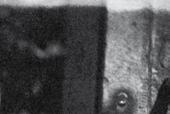
143/
Fig. 4
ROBERT ADAMSON AND DAVID OCTAVIUS HILL THE PASTOR’S VISIT , 1845
17
grain? By the 1840s the shing community of Newhaven faced the fragmenting pressures of competition brought on by overfishing, the extraction of rents, and the di culties of distributing sh in an increasingly integrated market. For centuries, the Firth of Forth had contained some of the best oyster scalps (or beds) in the British Isles. However, these would be all but destroyed over the next thirty years by extensive dredging, which ravaged the already fragile ecology of the scalps. From around 1800, ancient rights to sh the Forth were systematically undermined by the Edinburgh City Council and local landowners, leading to disputes over rents and confrontations at sea. According to one account, the situation worsened dramatically in 1839 when Edinburgh’s magistrates leased their shing grounds to an Englishman, George Clark of Essex, on a ten-year lease at six hundred pounds per annum. Clark “started to work on a big scale,” bringing sixty to seventy dredging boats from England “which dredged from sunrise to sunset and sent big cargoes of oysters—of all sizes—South without delay.” A complex legal battle ensued that was resolved in the Newhaven shers’ favor only in 1845. 17
Much of the campaign against the landowners was led by the Society of Free Fishermen of Newhaven, a corporate body of obscure origin, probably dating back to the sixteenth century. Its activities are di cult to reconstruct, but it appears to have led the ght against enclosure during the 1840s, reaching a membership of 272 in 1841. Solidaristic action brought victories against Edinburgh’s magistrates and the Duke of Buccleuch, who attempted to introduce a three pound annual license for shing boats around 1843. Action was also taken against the English sh merchants who had begun appearing in Newhaven in force in the mid-1830s, including attempts to unionize the shers during the 1850s and 1860s.18 e record is patchy, and recent studies of the Forth’s marine ecology suggest that the Newhaven shers, too, were careless about over shing.19 Nonetheless, shing in Newhaven appears to have been a site of intensi ed class struggle during the 1840s. Surviving accounts suggest considerable volatility, not least in the society’s membership. A steady diminishment in the society’s collective purpose a er the 1860s tracks the decline of inshore stocks of white sh.
18
Black, Society of Free Fishermen, 69–73, 79–80, 94
19
–78.
Can we determine a trace of this short-lived political sovereignty, of the shermen and -women’s collective solidarity, in Adamson and Hill’s calotypes? Is something of their struggle expressed in the way the women gather in groups and the men face down the camera? I suggest we read the Newhaven photographs as both radically secular and doctrinal. Certainly, they announce an evangelical politics of representation, a visual argument for the godly commonwealth, even as they provide a trace of subaltern experience, that of the battle for the commons.
144/
As recounted in Robin M. Black, ed., Society of Free Fishermen of Newhaven: A Short History (Newhaven, UK: Society of Free Fishermen, 1951), 63–68
T.C. Smout, “Garrett Hardin, the Tragedy of the Commons and the Firth of Forth,” Environment and History 17, no. 3 (August 2011): 357
at battle was sporadic, lasting little more than two decades, and no evidence suggests the shermen and -women steeled themselves to capture state power (did the Free Society of Fishermen have any contact with the Scottish Chartists?). But through this modern dialectic of representation, shaped by the impossibility of self-representation at that time, we can conceive of Adamson and Hill’s Newhaven photographs as a mode of proto-documentary. In their calotypes we sense for the rst time in photography the Gramscian possibility that the subaltern classes might abandon the godly commonwealth—and all its noxious equivalents—to found a new civilization.
145/

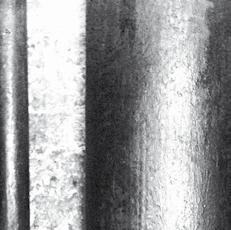















RIIS’S OTHER HALF MAREN STANGE
Jacob Riis emigrated to the United States from Denmark in 1870 at age twenty-one and remained there for the rest of his life, commencing a long journalistic career in 1877 when he joined the New-York Tribune as a police reporter. Riis arrived at the tail end of the so-called “old” immigration (1815–1865), comprising the millions, o en Irish or German and sometimes Protestant, who departed for the United States primarily from northern and western Europe. Riis’s Scandinavian origin and Protestant faith, typical of settlers of that period and thus already familiar to Americans, eased the path toward middle-class respectability that he chronicled in his autobiography, e Making of an American. 1
e “new” immigration that ooded into New York City a er 1880 was far di erent in origins and numbers. e o en young and unskilled new arrivals were primarily Catholics, Orthodox Christians, and Jews from southern and eastern Europe and Russia. eir in ux would total twenty million by 1920 , or ve hundred thousand per year on average, doubling the US population and drastically changing its demographics.2 Joining “old” immigrants from Ireland, Germany, and China, the newcomers crowded into lodgings that promised proximity to industrial production work, settling primarily in Lower Manhattan. e city saw more than eighty thousand tenement buildings converted or rapidly constructed; they housed nearly three-fourths of New York’s population, sometimes at density levels that reached 350,000 people per square mile.3
ese tenement dwellers—and the pro t-hungry speculators who made tenements “good business”—were Riis’s “other half.” Observing “how it lives and dies in New York” prompted him to delineate “the tenement house problem” and to make a proposal for reform. By 1888, he had already copyrighted a book title—“How the Other Half Lives”— though its publication would wait another two years.4 Riis worked from an office adjacent to police headquarters at 300 Mulberry Street in Lower Manhattan. His downtown location
1
2
“U.S. Immigration Timeline,” History.com, December 21, 2018, https://www .history.com/topics /immigration/immigration -united-states-timeline.
3
“Tenement Life—American Experience,” Smithsonian American Art Museum, n.d. [2013], https: // americanexperience.si.edu /wp-content/uploads/2013/11 /Tenement-Life_.pdf; and “Tenements and Urbanization,” Students of History, n.d., https://www.studentso istory .com/tenements-urbanization.
4
147/
Jacob Riis, e Making of an American (New York: Macmillan, 1902).
Jacob Riis, How the Other Half Lives: Studies among the Tenements of New York (New York: Charles Scribner’s Sons, 1890).
JACOB RIIS A SNUG CORNER ON A COLD NIGHT (DETAIL), FROM THE OTHER HALF AND HOW THEY LIVE , CA. 1890
a orded close observation of tenement conditions and, increasingly, his involvement in reformers’ e orts to improve them. He joined (and later led) city health inspectors’ visits; he publicized the e orts of private reform organizations including the Children’s Aid Society and the New York Kindergarten Association; he so closely supported the Episcopalian King’s Daughters’ mission that the organization renamed itself the Jacob A. Riis Neighborhood Settlement House in 1901 and even now lists him as its cofounder.5
5
“Jacob Riis: Revealing ‘How the Other Half Lives’: Riis and Reform,” Library of Congress, n.d. [2016], https://www.loc .gov/exhibits/jacob-riis/riis -and-reform.html; and “Jacob A. Riis Neighborhood Settlement House,” NYC Service, https:// www.nycservice.org /organizations/1019. As Riis grew increasingly well-known in the 1890s, he was named a member of the state-appointed Tenement House Committee of 1894; serving also as a witness, he gave testimony included in the committee’s in uential report to the state legislature. See Report of the Tenement House Committee as Authorized by Chapter 479 of the Laws of 1894 (Albany, NY: James B. Lyon, State Printer, 1895) 6 Riis, e Making
Louis Walton Sipley, “Philadelphia Presents—,” Pennsylvania Arts and Sciences 1 (1935): 41, 66. 8
See Photographic Times, October 21, 1887, 532; and
“Flashes from the Slums: Pictures Taken in Dark Places by the Lightning Process,” New York Sun, February 12, 1888, 10
“Flashes from the Slums.”
“Flashes from the Slums.”
e invention of magnesium ash powder in 1887 had rekindled Riis’s interest in photography, which he had used in previous reporting and in experiments with lantern slides in advertising applications.6 As photographic technology advanced, lantern slide exhibitions were touted to amateur photographers as “a re ned and pleasing entertainment for the drawing room” and a source of “amusement, instruction, or pro t.”7 e brilliant, momentary ash of magnesium powder allowed for unposed, even unexpected, photographs of people in dark interiors—it gave Riis a new way to vivify the subjects he reported on and to amplify publicity for the causes he supported.
In October 1887, New York’s Society of Amateur Photographers gathered for Dr. Henry G. Pi ard’s lecture and demonstration of the new ash powder and its possibilities for new photographic subjects; a few weeks later, Pi ard, a prominent surgeon, joined Dr. John T. Nagle of the health department, banker Richard Hoe Lawrence, and their “guide and conductor” Riis on a photographic expedition using ashlight to reveal “the poor, the idle, and the vicious” that Riis had come to know so well.8
At the society’s January meeting, Riis gave a lantern slide exhibition featuring the men’s work, and two weeks later the New York Sun carried “Flashes from the Slums,” an article illustrated with twelve wood engravings from photographs, including some of the “instantaneous pictures [taken] by arti cial ashlight.”9
e anonymous article, possibly written by Riis himself, introduces him as an “energetic gentleman” who combines “the two dignities of deacon in a Long Island church and a police reporter in New York”; it describes his organization of a churchyard garden where Sunday school pupils raise vegetables to be donated to “the destitute children of the metropolis.” e “deacon- reporter,” as Riis is subsequently dubbed, planned to assemble the photographs of “Gotham’s crime and misery by day and night” into a slide lecture—“ e Other Half: How It Lives and Dies in New York”—to present at churches and Sunday schools. e slides, by showing, “as no mere description could, the misery and vice that he had noticed in his ten years of experience,” would be used “in furtherance of just such aims” as Riis had accomplished in the churchyard garden on Long Island.10
148/
7
9
10
Riis’s 1891 lecture “ e Other Half and How ey Live: Story in Pictures” ts this mold. It was delivered to attendees of a Washington, DC, convention of the Christian Workers, an urban missionary organization. An audience member’s assiduously detailed transcription of the event, subsequently published in the convention Proceedings, constitutes the only full record of any of Riis’s lantern slide lectures. e lecture text, as well as contemporaneous newspaper accounts, convey the impact of Riis’s frequent presentations in these years.11 A “Magic Lantern Exhibition” used two brightly lighted projectors placed well behind the audience, so that each machine projected an image about ten feet (slightly over three meters) square onto a raised backdrop. A spotlighted speaker onstage, and sometimes music or sound e ects, guided viewers’ responses—images might appear side by side for contrast, or a dissolve mechanism might sequence them to enhance the trajectory of a spoken narrative.12 In a Brooklyn lecture, a cornet duo played “Where Is My Wandering Boy Tonight?” to accompany images of boys asleep on the street. In another lecture, Riis sequenced slides to trace the life of the homeless “street Arab” from “his birth in a dive to his burial in an unknown grave on Hart’s Island.”13
e transcript of the 1891 Christian Workers lecture parenthetically indicates the sixty-odd slides that accompanied the text, letting us see how words and pictures form a narrative thread to be followed rst temporally, establishing the explosive proliferation of New York City tenements over seventy- ve years, and then spatially—leading “all of us going together down into the slums of New York City to see what has got to be done down there.” Soon enough, we arrive at Gotham Court—an alley with “a bad record” and “not a native born [inhabitant] . . . except the children.” A subsequent stream of rsthand anecdotes conveys us to Mullin’s Alley and then into Blindman’s Alley—evidence of landlords’ “typical” greedy indi erence—until we arrive, by contrast, at “some of the Christian work that you [the audience] represent.” e image of a girls’ sewing class arranged in an orderly circle shows that “when they are cleaned up and cared for and made presentable they are just as sweet and nice as your children and mine,” although they meet in Gotham Court.
Similar well-posed images of children “made presentable” recur throughout the lecture, o en projected side by side with a slide of “neglected” children yet to be “picked up, . . . cleaned up and cared for.” The contrasts, Riis claimed, show the dramatic “before and a er” e ects of Christian intervention. But by arranging portrayals of children’s piety and industry as a foil for other images showing the neglected and immiserated, Riis could also enhance interest in “pictures of reeking, murder-stained, god-forsaken alleys and povertystricken tenements” that provided a “racy description of the infected
11
e Other Half and How ey Live; Story in Pictures,” in Christians at Work, Proceedings of the Sixth Convention of Christian Workers in the United States and Canada (Washington, DC: First Congregational Church, 1891), taken from Riis’s scrapbook, in Jacob A. Riis Papers, Manuscript Division, Library of Congress. All subsequent quotations of Riis himself are taken from this lecture transcript and are therefore not individually noted.
“
12
For a description of the technology, see William Welling, Collectors’ Guide to Nineteenth-Century Photographs (New York: Collier Books, 1976), 111
13
Brooklyn Times, March 8, 1888, clipping in Riis Papers, LC; and Washington Star, November 10, 1891, clipping in Riis Papers, LC.
149/
district” and provoked “many a shudder,” as journalists reliably and breathlessly reported.14
ose who are shown as making up the repellent “growler gangs,” pickpockets, “toughs,” and “tramps,” Riis says, have been le out— “with all our charitable machinery, with all our Christian e ort . . . we never reached those faces.” Inured to crime and idleness by “the idea that the world owes them a living,” they are sure to appear in the “Rogues’ Gallery . . ., likely to mount the gallows, and possibly to end in a lonely grave.” In this respect, reporters acknowledged, Riis’s “vein of earnestness . . . li ed . . . lecture[s] quite above the level [of mere entertainment],” and he regularly addressed “what we [are] going to do to protect ourselves.”15
To his Washington audience Riis promised a tour “down into the slums of New York City,” proclaiming, “Here you are with the Italians. . . . [T]hey live out of doors most of the time, and that is why they are healthy though dirty, and the death rate is not so large.” Attributing one or two nefarious practices to “the Italians,” Riis describes encounters with the “‘street Arabs’ who come here to trade,” and proceeds to penetrate “Jewtown,” where the crowding is so great that it has “beat London.” Further progress, accompanying the “Chinaman” to view “his town and one of his [Joss] houses,” requires a preliminary caveat—“his heaven is not the same as ours”—and a subsequent panoply of standard stereotypes: Chinese men are gamblers, opium smokers, and wife beaters.
e annotation “[Laughter]” frequently punctuates the lecture transcript. To take these interjections as reliable records is to see that even the “Christian workers” enjoyed ethnic mockery. Riis was unhesitant to recycle stereotypes (unless they concerned Danes or other Scandinavians), and the broadly comical portrayals found throughout his work were generally familiar to his readers and audiences. But his Washington lecture seems to go a step farther. As his anecdotes here suggest that immigrant families’ painfully overcrowded proximity provoked only mutual distrust among them, Riis makes sure to enhance this notion’s comic e ect. “No one but an Irishman,” he says, could blame crime and disorder on the “two Dutch [German] families” living amid primarily Irish neighbors—although a passing “Chinaman” amusingly insists that “Lem Ilish velly bad.” For all its apparent meandering, the lecture’s narrative path takes pains to emphasize difference and division; by the time we “come to the bottom,” near the conclusion, we can see not only Riis’s determined con ation of spatial markers with ethnic di erences but also his insistent organization of a hierarchical rather than geographical ethnic typology.
So irredeemably “other” is the Chinese immigrant, Riis says, that he has come to “despair of him altogether.” Even to his audience
150/
14 Washington Post, August 19, 1891, clipping in Riis Papers, LC. 15 Washington Post, November 10, 1891, clipping in Riis Papers, LC.
of urban missionaries, he insists, “You can’t do anything with him.” ey should, like him, forsake Chinatown and “give it up.” And yet there is more, beyond—or below—this space whose people provoke Riis’s despair. “Now we come to the bottom,” he warns his audience, to witness “the abomination than which there is none more vile.” In a “black-and-tan dive,” as his dramatically ash-lighted slides show, “black and white of both sexes meet on such ground.” e existence of a “border-land where the white and black races meet” is, for Riis, no more than a welcome to “the worst of the desperately bad,” permission granted to “common debauch” and to inevitable “commingling of the utterly depraved of both sexes.”
Whether or not they commingled or were depraved, the people Riis’s camera registered in a “black - and - tan dive” demarcate with sharp visual e ciency the phenotypical di erences then held to distinguish one “racial stock” from another. e “color line” in ash-lit black-and-white is the starkest of all the ethnic boundaries and hierarchical divisions that Riis upheld. To locate sites of racial proximity at such a scandalizing “bottom,” his words and pictures seem to say, is to underscore the dreadful potential of any transgression of “streetlevel” di erences and divisions—that is, of any class - based unity among the city’s recent immigrants. As well, by narratively enforcing boundaries among the people of the Lower East Side, Riis opened them to interpretations grounded in then-current “race science.”
ough New York never criminalized so-called miscegenation, the views that underlay such laws were widely held. A series of late-nineteenth-century court decisions upheld miscegenation prohibitions as constitutional because “[t]he amalgamation of the races is not only unnatural but is always productive of deplorable results.” e denial of legality and respectability to any “interracial” marriage might pertain, depending on locality, to unions between whites and Blacks or might extend to whites’ alliances with American Indians and with Asians— some states prohibited even Black and American Indian marriages.16 So sanctioned were such views, and for so long, that Harvard University president Charles William Eliot could proclaim in 1919 that “there should be no admixture of racial stock.” He believed “that the Irish should not intermarry with the Americans of English descent; that the Germans should not marry the Italians; that the Jews should not marry the French. Each race should maintain its own individuality” and, “[i]n the case of the negroes and the whites, the races should be kept apart in every respect.” Eliot saw in “the experience of civilization” evidence that “racial stocks are never mixed with pro t, and that such unions do not bring forth the best and strongest children.”17
Riis’s Christian Workers lecture rises from the “bottom” to conclude with an image of Christ and a proselytizing exhortation suitable
16
Peggy Pascoe, What Comes Naturally: Miscegenation Law and the Making of Race in America (Oxford, UK: Oxford University Press, 2011), 8
17
Report of the Presidential Committee on Harvard and the Legacy of Slavery (Cambridge, MA: Radcli e Institute for Advanced Study at Harvard University, 2022), 40, https://legacyofslavery .harvard.edu/report.
151/
to his audience. But his rst and best known book, How the Other Half Lives: Studies among the Tenements of New York, published the year before, in 1890, rmly addresses the propertied middle class, an audience enlarged well beyond missionary groups and Sunday schoolers. ough Riis’s book and his lectures share images, anecdotes, data, and organization to delineate “the tenement house problem,” only the book o ers a proposal to reform a problem so dangerous to city and nation. How the Other Half Lives o ers a “Christian” solution: tenement ownership must be a form of philanthropy taken up by charitable American-born landlords who would cap their pro ts at 5 percent.18
Riis had spent his rst American years wandering and penniless, encountering the labor protests and solidarity that drove unionization in the 1870s. Each day in New York City showed him the incalculable toll of grinding poverty and squalid surroundings.19 But Riis disdained working-class solidarity. If his images could dramatize the miseries shared by two-thirds of New York’s population and provoke reform, they could equally mark o this majority as “the other half,” showing the di erences among its supposed, and supposedly inferior, “races.” Riis’s photographs cannot help but convey many time-bound constraints. To include among them this fundamental irresolution of their meaning may be to name what ensures their continued importance.
152/
18 Riis, e Other Half. 19 Riis, e Making.
THE OTHER HALF AND HOW THEY LIVE: STORY IN PICTURES * JACOB RIIS
* Excerpts from the lecture given and published in 1891, included in the book Christians at Work, Proceedings of the Sixth Convention of Christian Workers in the United States and Canada, edited by the First Congregational Church. Transcription from the original.
153/




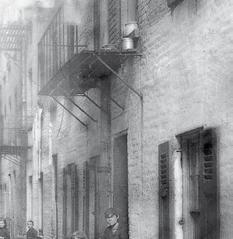







154/
I said that a hundred years ago, yes, less than that, seventy- ve years ago, there was no such thing as a tenement house in New York city. It is a modern invention of the devil. Here we are at the “cradle” of the tenement (show picture of “Gotham Court”). Down where that house stands lived George Washington. He moved down on Broadway because his friends persuaded him he was too far up town. is is the Fourth Ward, long given up to the worst abominations in the way of human dwellings. at alley has a bad record. A murder was committed there less than a week ago, and it was not the rst by a great many. In point of nationality it is typical of all down town of New York city. When I took a census once of that alley, there were one hundred and forty families, one hundred Irish, thirty-eight Italians, and two German, and not a native born individual in the entire alley except the children. No one but an Irishman could have thought of the answer one gave me when I asked him what was the reason a policeman was always on duty there. He said, “It’s on account of them two Dutch families that live in the alley. ey make so much trouble.”
[Laughter.] A Chinaman of whom I asked the same question outside the alley took another view of it. He just took one look down the alley and then hurried on; “Lem Ilish velly bad,” he said.
155/
Fig.
1
Let me show you the one picture of this collection which is not a photograph, but was drawn by an architect, so you can get some idea of what the tenement houses are (shows picture of “A Bird’sEye View East Side Tenement Block”). Some people tell me that the tenement houses are not as bad as they might be. I do not know how bad they might be, but I personally think they are about as vile as anything that can be found anywhere. Just take a look at this, will you! Here in this city of homes you build a house on one lot and over on another street another, and between the two you have sunlight and air and grass and a place for your children to romp, and perhaps your neighbors, but in this block there is a house on one end of a lot and one on the other and one “in between.” Houses set end ways and edge ways and every which way, so that rents may be wrung out of their poor tenants. Now do you understand what is meant by the statement that tenement house property is good property. is is the sort of a place where the city missionary found four families housekeeping in the four corners of one room, and when he asked how they got along was told that they got along fairly well till one of the four families took a boarder. en there was trouble. [Laughter.]







156/
Fig. 2
On one of my visits to “the Bend” I came across this fellow (shows picture of a tramp with pipe in his mouth) sitting there in the yard on the rung of a ladder, and he struck me as being such a typical tramp that I asked him to sit still for a minute and I would give him ten cents. at was probably the rst and only ten cents that man had earned by honest labor in the course of his life, and that was sitting down at which he was an undoubted expert. [Laughter.] He was too lazy to say “Yes,” but simply nodded. [Laughter.] I xed my camera and just as I got ready to take his picture he took the pipe out of his mouth and put it in his pocket. I said, “ at belongs to the picture.” But no; he would not have it. Less that y seconds at work and he was on strike! [Laughter.] He knew what his labor was worth. at pipe was one of the two-for-a-cent kind, and I had to pay him a quarter to get the pipe in. [Laughter.] As he sits there, he is worth a quarter, and that is all he is worth; not another cent would I give for that man. [Laughter.]






157/
Fig. 3
If you want to understand just what it means, come with me at three o’clock some morning in July or August when these stony streets are like ery furnaces, and see those mothers walking up and down the pavements with their little babes trying to stir some breath of God’s air to cool the brows of the sick child and hear the feeble wails of those little ones! en tell me they have no cause of complaint, that they ought to be content. Here (shows picture of “Home of Italian rag-picker”—Italian woman with child in her arms) is one of them, an Italian baby in its swaddling clothes. You have seen how they wrap them around and around until you can almost stand them on either end and they won’t bend, so tightly are they bound.
[. . .] I remember [Bottle Alley] for its splendid exhibition of Italian domestic discipline. When I went in to take the picture there were about twenty young women there picking rags and every one of them began to furbish herself up and pose for the camera, and there was just one old reprobate of an Italian man, who was not working—the only one who was not. He just grunted once and they all turned on their heels and went in.


[Laughter.] As a case of domestic discipline I think it was absolutely perfect.









158/
Fig. 4
Let me take you there at night (shows picture, “Prayer-time in Nursery,” Five Points House of Industry). I stole in there one night with my camera as they were going to bed and saw them kneeling at their bedsides just as the picture shows you. [Applause.] Nearly every one of the white nightgowns hiding poor, bruised, cruelly tortured limbs! Every one of them out of homes where never a blessing was said and nothing but drunken curses heard from morning till night! eir bright faces show that they need nothing there. Work that for Christian charity! Dark spots enough in New York for it to shed its light into!






159/
Fig. 5
Here (shows picture of two neglected boys) are two of the little home heathen who are growing up in the streets of New York every day while some of the very best people in the world are worrying about the souls and the socks of the little Hottentots in Central Africa. ese boys are just as they were picked up. ose who found them tried to nd what was their religious status. One of them had heard of “Our Father” and he knew it was something which the boys said was a good thing to say every night before they went to sleep in their burrows so they might have luck the next day playing craps or pitching pennies, [Laughter.] and the other knew all about the name of Christ; it was something to swear by. ere you have the religious status of two such boys. Two like them were picked up in Harlem. e ird Avenue bridge is borne up by two great iron pipes and they had made a nest in the end of one of these pipes and slept there most of the winter.




































160/
Fig. 6
In “Jewtown” where the crowding is greatest, there are about 333,000 to the square mile, while the greatest crowding of old London never was greater than at the rate of 175,000 to the square mile. Don’t tell me we cannot beat London. I think we can on that score and I own it with shame. In this room (shows picture “Five Cents a Spot”) slept thirteen persons. Of course they did not all work there, but they slept there. Some of them were lodgers at ve cents a spot.






























161/
Fig. 7
Back of the Joss house you will nd smoking bunks. ey are everywhere in Chinatown. Here you have a view of one (shows picture of a smoking bunk). You don’t care to know much about their smoking habits. It is their vice and we will let them keep it. Let us take a look at their newspaper. You went through the Chinese colony and have seen their worship and their smoking and here (shows picture of a Chinaman and a telegraph pole) is their newspaper. e real o cial organ of Chinatown is the telegraph pole as you see it there with the placards stuck all over it. e time I took the picture there I learned a lesson







162/
Fig. 8 – 9
of Chinese domestic logic. We heard cries and shouts and went with a policeman across the street and in the cellar we found a Chinaman beating the white girl he called his wife with a broom handle. While the policeman spoke to her I tried to reason with the Chinaman. I said, “John, what are you doing? You must not beat your wife.” “She bad,” he sputtered. “Well, if she is bad you must not beat her.” He said, “Suppose your wife bad, you no lickee her?” I said, “Certainly not.” He eyed me a while in stupid silence, poked the linen in his tub and made up his mind: “ en, I guess she lickee you,” he said. [Laughter and applause.]









163/






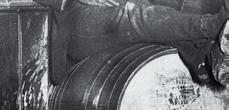













164/
And now we come to the bottom, down to the black-and-tan dive (shows picture of “Black-and-Tan Dive”—saloon with black and white men and women). When black and white of both sexes meet on such ground, then you have the abomination than which there is none more vile. From there the descent is very easy to the rogues gallery.
165/
Fig. 10 – 11
All images by Jacob Riis, ca. 1890: fig. 1: Gotham Court; fig. 2: Bird’s-Eye View of an East Side Tenement Block; fig. 3: e Tramp; fig. 4: In the Home of an Italian Ragpicker, Jersey Street; fig. 5: Prayer-Time in the Nursery—Five Points House of Industry; fig. 6: A Snug Corner on a Cold Night; fig. 7: Lodgers in a Crowded Bayard Street Tenement—“Five Cents a Spot”; fig. 8: Chinatown, Smoking Opium in a Joint; fig. 9: e O cial Organ of Chinatown; fig. 10: A Blackand-Tan Dive in “A ica”; fig. 11: A Downtown “Morgue.”










EXPOSING SOCIAL QUESTIONS: PHOTOGRAPHIC PROJECTS IN THE VIENNA OF THE LONG NINETEENTH CENTURY
MICHAEL PONSTINGL
Vienna, like other cities in Europe and North America, grew to more than two million inhabitants during the period known as the long nineteenth century. is evolution was accompanied by colossal urban development projects that were associated with enormous social upheaval. For a variety of reasons, photographers photographed these phenomena, and their work can be understood as an (unconscious) reaction to them. Sometimes their projects also included social criticism, whether indirect, incidental, latent, subliminal, unorthodox, or otherwise mitigated. is article sets out to give an account of such criticism.
FERDINAND VON STAUDENHEIM STADTBEFESTIGUNG: LINIENWALL—SPIELENDE KINDER (DETAIL), FROM THE SERIES LEBEN UND TREIBEN AUF DEN LINIENWÄLLEN , CA. 1890 (CITY FORTIFICATION: LINIENWALL— CHILDREN PLAYING)
HUSTLE AND BUSTLE ON THE LINIENWÄLLEN
During the second half of the nineteenth century, Vienna underwent two distinct periods of urban transformation. Both times the city was extended by incorporating suburbs, entailing the demolition of city forti cations. From 1858 onward the forti cation walls (called Basteien) that had surrounded the historical city center were removed and the glacis made free for building development, thereby creating an area where, over the following decades, the Ringstraße
167/
1
For photographic documentation of the Basteien, see Monika Faber and Maren Gröning, Urban Panoramas: e Photography of the Imperial and Government Printing Establishment 1850–1860 (Vienna: Brandstätter, 2008), 27, 70–83 2
See Michael Ponstingl, “Leben und Treiben des Ferdinand Ritter von Staudenheim im Sommer 1894: Eine fotogra sche Inspektion auf den Wiener Linienwällen,” in Ganz unten: Die Entdeckung des Elends: Wien, Berlin, London, Paris, New York, ed. Werner Michael Schwarz, Margarethe Szeless, and Lisa Wögenstein (Vienna: Brandstätter, 2007), 90–97.
and its representative buildings—the Akademie der bildenden Künste (Academy of Fine Arts), Neue Burg palace, Kunsthistorisches Museum (Art History Museum), Naturhistorisches Museum (Natural History Museum), town hall, Burgtheater, and University of Vienna, as well as private bourgeois and aristocratic palaces—could be constructed. e second phase of demolition, starting in 1894, concerned the so-called Linienwall (line wall), an earthen wall raised in 1704 e side that faced away from the city had been covered with bricks in the subsequent decades, and the wall zig-zagged around the zone from the inner northwestern to southeastern suburbs. Both projects were documented photographically but in ways that could hardly be more di erent. e initial aspect of the site and every phase of the demolition of the Basteien were captured in impressive large-format salt paper prints by a state institution—the kaiserlich- königliche Hof- und Staatsdruckerei (Imperial-Royal Court- and State Printing O ce)—commissioned by the kaiserlich-königliche Ministerium des Inneren (Imperial-Royal Ministry of the Interior) and the municipality of Vienna.1 With the Linienwall, it was a di erent story.2
Until the incorporation of numerous suburbs in 1890 , this wall also formed a tax limit that functioned as a clear social demarcation line. Customs o ces at the city gates levied taxes and tolls on goods brought into the city. People of the lower classes were o en obliged to settle outside the wall because of the lower living expenses. Industrialists also took advantage by establishing their factories outside the Linienwall. By the time it was removed, it had long been an enormous economic, transport, and urban - planning obstacle. In contrast to the city center Basteien, no state or municipal institution felt responsible for the photographic documentation of the Linienwall (perhaps also because the municipality had commissioned a general sta o cer to make panoramic drawings of the whole site in 1889 ). e aristocrat and amateur photographer Ferdinand Ritter von Staudenheim undertook the task of his own accord in 1894 , as it was apparently not a marketable subject for professional photographers. He was an honorary member of the kaiserlich - königliche Central - Commission zur Erforschung und Erhaltung der Kunst- und historischen Denkmale (Imperial- Royal Central Commission for the Research and Preservation of Artistic and Historical Monuments, CCEEKD), the institution that preceded the present - day Bundesdenkmalamt (Federal Monuments O ce), and a former member of the military, so his photographic interest in the Linienwall is unsurprising. Staudenheim’s predisposition toward architecture, landscape, and the photographic snapshot reached an apotheosis in these images. The thirty - eight surviving photographs do not provide a complete record of the construction, which
168/
was 13 . 5 kilometers long and an average of 3 . 5 meters high, but they are nevertheless the most comprehensive documentation of it (some individual photographs by other amateurs have also survived). e photographer generally positioned his camera outside or on the wall, and only a few pictures show the view toward the built-up city center. e photographs give the beholder impressions of forms, dimensions, the pathway of the Linienwall , the demolition work, and of the adjacent vacant wastelands that resulted from a construction ban. ose shots that do directly target the structure portray it in its most derelict aspects: crumbling fragments of wall in imminent danger of collapse, weeds sprouting among weathered bricks, an overgrown moat.
However, because the structure is symbolized in various ways as a physical, administrative, and social (problem) boundary, the photographs not only show this materiality but also reveal traces of how the site had previously been appropriated in a partial spirit of resistance. Complaints about the tax, perceived as unjust, and about impolite o cials were regular. Smuggling had always been a common practice, and unauthorized rampart crossings into the city were built for this purpose. Moreover, people helped themselves to free construction




169/
SERIES LEBEN UND TREIBEN AUF
LINIENWÄLLEN
Fig. 1 FERDINAND VON STAUDENHEIM PHOTOGRAPH FROM THE
DEN
, CA. 1890
–130.
material from the wall, unauthorized clay and gravel pits undermined its stability, and the moats had deteriorated into illegal land ll sites.
e depiction of human beings in some of the photographs transcends their function as sta age included to show the dimensions of the construction work. Snapshot scenes give a brief glimpse of everyday life in the outer suburbs. Staudenheim depicts passers - by, farmers with their livestock, workers sanding the wall, and children frolicking ( g. 1). e latter, dressed shabbily and most of them barefoot, take possession of the Linienwall most assertively. In their games they accumulate transgressions of former prohibitions—which were not always complied with even when they were valid—such as playing on the wall, skillfully surmounting it, and splashing around in the moat. On the underlay cardboard Staudenheim entitled these scenes Leben und Treiben auf den Linienwällen (Hustle and bustle on the old city forti cations). He thus embellished the Linienwall zone and all its social problems, transforming it into an idyll. His interest was not in the poor, for whom the wall generally represented an impenetrable barrier. Staudenheim remained a detached observer; his program was a program of museumization.
SIGNS OF LIFE IN ARCHITECTURAL PHOTOGRAPHS
e demolition of the Basteien and of the Linienwall was symptomatic of a vast dynamic of urbanization. Waves of migration from across the empire meant that Vienna had grown into a metropolis (peaking at 2.1 million inhabitants in 1910). e building boom of the Gründerzeit (founding period; 1840 s to 1873 ) and even a erward meant that many Biedermeier and pre-Biedermeier houses fell victim to the pickaxe.3 Such massive incursions into the urban landscape, impelled by capitalist speculation, engendered counterreactions. ese included the Heimatschutz (home defense) movement, motivated by Lebensreform (life-reform) values and monument preservation, which manifested in diverse forms, from the popular - nationalistic to the liberal-conservative. In the Vienna of 1900–1910, an urban, enlightened Heimatschutz movement, sustained by the educated middle classes and by certain sectors of the nobility, emerged as a component of Viennese modernism. e movement criticized the way economic relationships within the city were structured and proposed social reform initiatives that, for the most part, transcended aesthetic and sentimental approaches and an old-Vienna nostalgia, thus adding the concepts of “home” (Heimat) and architectural tradition to the discourse surrounding the city.4
170/
3
See the essays of Sándor Békési und Renata KassalMikula in Wolfgang Kos and Christian Rapp, eds., Alt-Wien: Die Stadt, die niemals war (Vienna: Czernin, 2004).
4 See Sándor Békési, “Heimatschutz und Großstadt: Zu Tradition und Moderne in Wien um 1900,” Österreichische Zeitschri für Geschichtswissenscha en 20, no. 1 (2009): 94
Photographs played a significant part in this tense dialectic. Certain Viennese photographers, amateurs and professionals, put themselves at the service of the Heimatschutz movement. August Stauda, a professional photographer, pursued this agenda most intensively ( g. 2).5 From 1898 to 1914, he produced and self-published around three thousand images. He adhered to the media format of the photographic print (approximately 22 × 28 centimeters). His competitor Reinhold Entzmann, who represented the same subjects, published his images as small -format picture postcards, thus targeting a di erent public. Most of the prints depicted pre- Gründerzeit houses threatened with demolition to make space for new and more lucrative building projects, principally in the suburbs. e houses are almost always photographed at street level and seldom frontally. Other prints focus on details of facades, portals, rear courtyards, streets, advertising signs, or hoardings, and on the small street scenes enacted in front of these elements. e available sources, which admittedly are vague, suggest that Stauda did not undertake this publishing program at his own risk but had a customer, at least for some of his

AUGUST STAUDA HEILIGENSTÄDTER STRASSE 119—HOFANSICHT , CA. 1904 (HEILIGENSTÄDTER STREET 119— COURTYARD VIEW)





5




See Susanne Winkler, ed., August Stauda: Ein Dokumentarist des alten Wien (Vienna: Brandstätter, 2004); and Susanne Winkler, “Die 3000 Wien-Ansichten des August Stauda: Ein Wiener ‘Alt-Stadt’-Dokumentarist um 1900,” in Alt-Wien, 109–16.

171/
Fig. 2
pictures. at customer was the Polish writer and arts patron Karol (Karl) Graf Lanckoroński - Brzezie, who also served from 1910 to 1918 as vice president of the CCEEKD and president of the Verein für Denkmalp ege und Heimatschutz in Niederösterreich (Society for the Preservation and Heimatschutz Movement in Lower Austria). However, the contract was made on Lanckoroński’s private initiative, and we do not know whether the project was part of a wider plan. Stauda’s potential customers included architects, master builders, monument conservationists, visual artists, and libraries. The Historisches Museum der Stadt Wien (Historical Museum of the City of Vienna; today the Wien Museum) regularly purchased his prints from 1902 to 1917. A er the photographer’s death, his widow sold his portfolio of negatives to the Bundesdenkmalamt in 1931 , from whence it traveled in 1941 to the Nationalbibliothek ([since 1945: Austrian] National Library).
A signi cant number of Stauda’s photographs also show people, some only as indistinct “ghosts” due to the long exposure time: passersby and local inhabitants working, idling, playing (the children), and o en observing the photographer (and posing at the same time). For many, Stauda’s camera was probably the rst they had posed for. e pictures show curious, reserved, or proud individuals. ey are not likely to have ever set eyes upon these prints, which would have been beyond their nancial reach. e conscious incorporation of people into these images draws attention to the use value of the buildings and thereby to their existential usefulness and purpose above and beyond their exchange value, the only aspect of concern to land speculators. Even if his contemporaries did not understand Stauda’s photographs in this way (there is no evidence that they did), many of the images provide insights into the living and working conditions of the proletariat and small traders. ey attest to petit- bourgeois industriousness and to everyday actions and objects. A systematic sociohistorical evaluation of Stauda’s photographs attentive to these signs of life and to the material culture they depict has yet to be undertaken.
THE VIENNA TYPE, AN ENDANGERED SPECIES
e vast processes of urbanization, industrialization, and economization that took hold of the city in the nineteenth century—and the accompanying social upheavals (pauperization, housing shortages)— created feelings (and fears) of loss, particularly among the bourgeois class factions. e traditional order, which legitimized their social position, came apart at the seams. A conservative reaction to this was
172/
nostalgic longing, not focused exclusively on architecture, for an old Vienna that had never existed. According to this straightforward urban imaginaire, so-called folk types embodied all that was truly Viennese— something that was almost lost—and the traditional, stable corporative order. e Viennese types—who, paradoxically, re ected the multiethnic state of the Austro-Hungarian Empire—were a loveable and hence nonthreatening other, contrasting with the industrial proletariat. ese types have their origins in the eighteenth-century graphic prints of the “Wiener Kaufrufe” (cries of Vienna). e spectrum of gures included small tradespeople who advertised their wares on the streets and city squares with characteristic cries, along with others such as waiters, caretakers, and parlormaids. e theme was expressed in a wide variety of cultural formats, including literature, feuilleton, music, the ne arts, toys, and photography.6
e photographer and photo publisher Otto Schmidt was the most important translator of the Viennese type into the photographic medium in the nineteenth century.7 From 1873 to 1887 he published four series on this theme (carte de visite, cabinet card). His photographs, some of which were taken in his studio and some outdoors, are o en iconographically similar to their graphic print models. ey consist of small tableaux and of both individual and group portraits, of which the protagonists carry attributes speci c to their profession.
e outdoor shots privilege the depiction of marketplaces as prototypical premodern urban public forums, places of entertainment for the lower class, such as the Volksprater (or Wurstelprater) amusement park or the garbage dump ( g. 3).
Schmidt’s photographs also implicitly o er a popular ethnography of the empire: Slovakian toy and crockery dealers, Polish Jews, Italian salami sellers, orange sellers from Gottschee (Kočevje). Neither the photographer nor the buyers (from Vienna, or tourists buying souvenirs) were interested in the real living conditions of the subjects, at least some of whom were played by models. Hand-coloration embellished the living and working conditions depicted; for example, those who worked in the mud and debris of the garbage dump were presented in unrealistically bright colors to make them palatable to a bourgeois clientele. Technical limitations prevented Schmidt from making snapshots—that is, shots with a very short exposure time—which is why his photographs are always posed. However, a few decades later the amateur photographer and lawyer Emil Mayer consistently took candid shots, even using a right-angle view nder for his hand-held camera that pivoted the direction of the shot by ninety degrees to conceal his intentions and to mislead people. He believed that, in contrast to a posed photograph, this would give him an “authentic” image that revealed people as they really were (an ideology that persists today).
6
See Wolfgang Kos, ed., Wiener Typen: Klischees und Wirklichkeit (Vienna: Brandstätter, 2013).
7
See Michael Ponstingl, Geschä e mit Kopien: Der “Fotogra sche Kunstverlag Otto Schmidt”; Ein Handbuch (Salzburg: Fotohof edition, 2022); and Michael Ponstingl, “Otto Schmidts Spektakel der Wiener Typen,” in Wiener Typen, 192–201.
173/
8







From 1905 to 1912, Mayer’s photographs focused in a thoroughly innovative way on human activities in the streets of the city center and in the Wurstelprater. Public slide presentations in photo clubs and popular education institutions, for example Typen und Szenen aus dem Wurstelprater (Types and scenes from the Wurstelprater), are documented in the years from 1909 to 1915. e photographer added zest to the projected images with a witty speech, provoking tumultuous applause. Adept at exploiting his photographs in a variety of media, he also published selections as bromide oil prints, as bromide silver gelatin postcard series, or as assembled into a book for reportage on local urban color (Wurstelprater, 1911), to which the writer Felix Salten contributed a text.8






9








e photographer conceived of his pictures not as individual portraits but as “genre photos” through which he aimed, he explained, “to capture a series of characteristic types as they are to be seen on the street every day. . . . e question is, for how much longer will we continue to see these types? So maybe, over time, my photos will acquire historical value.”9 He conceived of his project, which had no socially engaged objective, as a kind of inventory of a category of people he identi ed as being in danger of disappearance with the passage of time. Without consciousness of class relations, he amalgamated his subjects into a lively, wild “people” that he stylized as a counterpoint

174/
Fig. 3 OTTO SCHMIDT
12. MISTG’STÄTT’N (KUMMERHOF) , FROM THE SERIES WIENER STRASSENBILDER (PUBLISHER: A.F. CZIHAK), 1876–1877 (GARBAGE DUMP)
See Michael Ponstingl, “Felix Salten and Emil Mayer’s Photobook Wurstelprater—An Arena of Symbol Systems,” in “ e Photographic Image in Print,” ed. Steven Humblet, special issue, Cahier, no. 01 (2009): 4–13; and Anna Hanreich, “Zur Fotogra e Emil Mayers: Die Wiener Typen und der Wurstelprater” (thesis, University of Vienna, 2004), 45–48
Emil Mayer in “K. k. Photographische Gesellscha in Wien: Protokoll der PlenarVersammlung vom 7. März 1911,” Photographische Korrespondenz 48, no. 607 (1911): 282.
to modernity. is internal exoticism reduced human beings to the status of “raw material” for motifs that Mayer skillfully arranged to promote himself as a photographic artist and to earn the recognition of his peers.10

SPECTACLE OF THE WRETCHED
e emergence of Vienna as a metropolis in the nineteenth century also led to increased poverty, housing shortages, and homelessness. e liberal journalist Emil Kläger and the judge Hermann Drawe recognized the need for action and made the rst social documentary reportage in Austria-Hungary, using photography as a means of production/agitation.11 During the summer of 1904, the two men purportedly went for more than two hundred walks, sometimes at night and camou aged in dilapidated clothes, looking for group accommodations, tea rooms, and Wärmestuben (warm rooms) for homeless people, men’s hostels, the stoking rooms of brick kilns, sleeping places in urban meadows, and the underground canal system where homeless people lived. Drawe, an amateur photographer, took more than one hundred pictures. He o en crept up to people unobserved or surprised them in their sleep, out of which they were abruptly jolted by his magnesium ashlight ( g. 4–5). Some posed shots depict alleged petty thieves in stereotyped poses, performing acts of petty crime.
Fig. 4
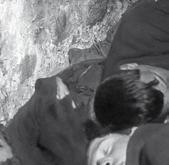


HERMANN DRAWE SCHLAFECKE UNTER EINER WENDELTREPPE , FROM THE SERIES DURCH DIE WIENER QUARTER DES ELENDS UND VERBRECHENS , 1904 (SLEEPING CORNER UNDER A SPIRAL STAIRCASE)
10
See Michael Ponstingl, “Wienimaginaire: Straßenfotogra e im 19. Jahrhundert,” in Augenblick! Straßenfotogra e in Wien, ed. Anton Holzer and Frauke Kreutler (Heidelberg: Kehrer, 2021), 79; and Michael Ponstingl, Wien im Bild: Fotobildbände des 20. Jahrhunderts (Vienna: Brandstätter, 2008), 80–88
11
See Margarethe Szeless, “Emil Kläger & Hermann


Drawe: ‘Durch die Wiener Quartiere des Elends und Verbrechens,’” in Ganz unten, 99–109; and Josef Seiter, “‘Elendsbefreiung kann nicht sein ohne Elendserkenntnis’: Sozialreportage und sozial engagierte Fotogra e in Wien um 1900,” Spurensuche 14, no. 1–4 (2003): 152–57.

175/
e pictures showing accommodations are o en cropped narrowly, reinforcing the impression of the narrowness of the spaces.
e results of this research were presented in the form of a slide show with the sensational title “Durch die Wiener Quartiere des Elends und Verbrechens” ( rough the Viennese neighborhoods of misery and crime) in the Urania, an institution for popular education. In May 1905, a professional lecturer presented Kläger’s text along with Drawe’s hand-colored photographs. e lecture was extremely well received by the predominantly middle-class public, to the extent that it was repeated more than three hundred times before 1908. In the winter of 1907 (with imprint 1908) the lecture appeared as a comprehensively illustrated book in a print run of ten thousand.
Kläger and Drawe focused their investigations not on the working classes (which would have been a more challenging manner of addressing class relations) but mostly on members of the Lumpenproletariat. at the reportage was clearly not about class struggle but about caritas supported by bourgeois, reform- oriented humanism made the subject (more) acceptable to the target audience. e principle of welfare did not question the social order and structures of ownership. e almost ethnographic images from an “unfamiliar world” o en stimulated the public’s curiosity, making their esh creep pleasantly and giving them a sense of pleasurable anxiety (Angstlust). Unlike the bourgeois press, the le -wing press (particularly Die Arbeiter-Zeitung) distanced itself from this kind of investigative journalism. It pointed out the absence of any profound interest in the real living conditions of these people, criticized voyeurism, and referred to the reports of the social democrat Max Winter, who went around without a camera. Nevertheless, it could not deny the suggestive, persuasive power of Drawe’s photographs.
176/




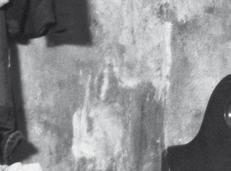



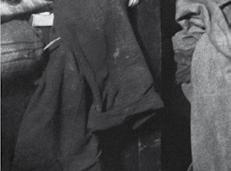

177/
Fig. 5 HERMANN DRAWE MASSENQUARTIER , FROM THE SERIES DURCH DIE WIENER QUARTER DES ELENDS UND VERBRECHENS , 1904 (MASS QUARTERS)







THE EMERGING PICTURELANGUAGE OF INDUSTRIAL CAPITALISM *
ALLAN SEKULA
Until the advent of photographic modernism in the second decade of the twentieth century, most culturally ambitious photographers studiously avoided the iconography of industrialism, preferring instead the pastoral, the baroque, the sentimental, and the romantic individualism of the portrait. (Alfred Stieglitz’s photographs of steamships, dirigibles, and aeroplanes mark a watershed for self - conscious art photography.)1 Since photography mechanized both the manual and a good portion of the intellectual work of visual representation (that is, the intellectual work of perspectival construction), the gure of artistic genius had to be reconstructed. On the one hand, an attempt was made to reintroduce cra to photography through the appropriation of painterly methods and painterly styles of presentation. On the other hand, and this was the modernist tendency, artistic work came to be regarded as a primarily intellectual undertaking, more or less independent of the exercise of manual skill. Vision was disembodied, and was given priority over manual and mechanical skills. [. . .]
What can be said about the photographic representation of work, and particularly, of work conducted underground? Perhaps the earliest underground photographs were those made by Nadar in the sewers and catacombs of Paris in 1861. Nadar combined serious esthetic ambition with technological bravado and a air for publicity. In a famous and rather ironic lithograph, Daumier depicted Nadar “elevating photography to artistic heights” while photographing Paris from a balloon, oating above a city cluttered with lesser photographers’
NADAR CATACOMBES DE PARIS: MANNEQUIN Nº 1 , CA. 1861 (PARIS CATACOMBS : MANNEQUIN NO. 1)
*
Excerpts from Part II of the essay “Photography between Labor and Capital,” published in 1983 Revised version approved by Allan Sekula Studio.
1
ese photographs appeared together in Camera Work, 36:5, October 1911. See my essay “On the Invention of Photographic Meaning,” Artforum 13, no. 5 (January 1975): 36–45.
179/
2 Published in Le Boulevard, May 25, 1862
3 See David H. Pinkney, Napoleon III and the Rebuilding of Paris (Princeton, NJ: Princeton Legacy Library, 1958), 127–150. See also Nadar, “Paris, souterrain,” in Quand j’etais photographe (Paris: Flammarion, 1899), 99–129
4
e phrase is Marx’s, from a passage on Haussmann’s “Vandalism.” Karl Marx and Friedrich Engels, Writings on the Paris Commune, ed. Hal Draper (New York: Monthly Review Press, 1971), 94.
5
Roland Barthes, “ e Plates of the Encyclopedia,” in New Critical Essays (New York: Hill and Wang, 1980), 28
6
Denis Diderot, “Salon of 1767,” in Lester Crocker, ed., Diderot’s Selected Writings, trans. Derek Coltman (New York: Macmillan, 1966), 174
7
Nadar, Quand j’etais photographe, 116. Trans. in Gail Buckland, First Photographs (New York: Macmillan, 1980), 79.
studios.2 Nadar seems to have persistently sought the technological limits of photographic representation by linking the camera with new sources of transport and illumination: before he gained his reputation as an aeronaut, he descended underground with electric lights, photographing rst the city sewers, which were then being rebuilt as part of Haussmann’s reconstruction of Paris.3 Next Nadar photographed the city’s catacombs. His projects underground seemed to have been planned with publicity in mind; the catacombs were already being opened up for tourists several times a year, and the new sewers were to become important tourist attractions by the time of the Paris Exposition of 1867. e sewer photographs can easily be read as pictorial expressions of technological optimism: the galvanic arc illuminated the underground architecture of a new urban hygiene. Electricity itself could be welcomed as a hygienic force. e catacomb pictures are a bit more complicated. Perhaps no more obvious metaphor than this necropolis could have been found for the old Paris that was being razed to make way for the “Paris of the sightseer.” 4 Clearly, the catacombs were a spectacle, but they were a spectacle in the sublime mode, lled with darkness and death. Nadar’s galvanic arc brought enlightenment into space, banishing, or at least domesticating the sublime, pushing it back into the shadows. His pictures, like the plates of the Encyclopedia, depict what Roland Barthes called “a world without fear.”5 In this light we might recall Denis Diderot’s resolutely materialist commentary on the sublime:
Everything that astonishes the soul, everything that impresses it with a sensation of terror, leads to the sublime … Darkness adds to terror … Priests, raise your altars, erect your temples in the hearts of forests … Let your arcane, theurgic, bloody scenes be lit only by the fateful glare of torches. Light is useful when you wish to persuade; it is worthless for emotional e ect.6
Nadar, for his part, recalled his subterranean project as a kind of encyclopedic quest; this was an entirely rational endeavor, a triumph of science over the mysteries of death:
e world underground o ered an in nite eld of activity no less interesting than that of the top surface. We were going into it, to reveal the secrets of its deepest, most secret, caverns.7
Again, it was electricity that illuminated this hidden place. Nadar seemed to have viewed exaggerated claims for electricity with skepticism, but at the same time, he shared the attitudes of his epoch in regarding electric power as a marvelous and autonomous force. In a
180/
passage in his memoirs (written in 1900) in which he described his skeptical but interested reception of a con dence-man with a scheme for taking “electric photographs” at a distance, Nadar celebrated electricity in terms that can only be described as characteristic of commodity fetishism:
We had seen it invisibly discharge all duties and perform all functions, realizing all the dreams of the human imagination. Obedient and ready to execute our commands, this all-powerful yet discreet servant is unrivaled in all its forms … A rst-class worker, a Jack-of-All-Trades—one at a time or all at once as you like …8
Now suppose we return to Nadar’s photographs of the catacombs with this passage in mind. For some extraordinary reason, perhaps out of respect for the encyclopedic paradigm, Nadar felt compelled to introduce the gure of human labor into these scenes. us his photographs demonstrated a sequence of instrumental actions: the hauling, sorting, and “packing” of bones in the underground vaults. In this cold, bright, materialist light, such a process could only be seen as a kind of negative industry, as the reversal of mining. ere was a tension in Nadar’s project between the absolute novelty of revelation, and a recognition that the world underground was already the site of human labor. On the one hand: the seeing of that-which-has-not-been-seenbefore, the muted appeal to morbid appetites, the momentary taming of the sublime by electric light. On the other hand: a routine. Nadar extracted a republican moral from this quasi-industrial dismantling of skeletons. Here, in the mixing, sorting, and packing of ordered ensembles of bones of “great men, saints, and criminals” he discovered an “egalitarian confusion of death.”9 e bourgeois observer of these pictures is invited to sit in two seats; the seat of the spectator, confronting a republican memento mori, and the seat of the boss, dependent upon, but in command of, other people’s labor and the scienti callyharnessed forces of nature.
There is a further irony in these pictures from the catacombs. Nadar was forced to expose his collodion- on- glass negatives for as long as eighteen minutes. Since no living worker could be expected to stand still for so long, the figures we see in these photographs are mannequins, clothed in workers’ garb ( g. 1). Nadar’s dummies stood in for their living counterparts, and in so doing indicated the future re nement of photographic technique, when living movement would be photographically recorded as apparent stasis. ( at is, these pictures wistfully anticipate the motion studies of Eadweard Muybridge and Étienne Jules Marey.) us we can read this substitution in a number of ways: as a compensation for technical inadequacy, as
8
9 Nadar, 104.
181/
Nadar, 23–24. Trans. by omas Repensek, “My Life as a Photographer,” October, no. 5, 1978, 18.




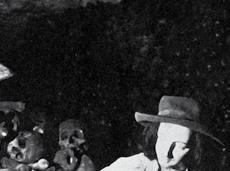








182/
Fig. 1 NADAR CATACOMBES DE PARIS: MANNEQUIN Nº 2 , CA. 1861 (PARIS CATACOMBS: MANNEQUIN NO. 2)
technological prophecy, and nally, as a comment on the arti ciality, the perversity, of photographic representation. Nadar’s overtly theatrical construction could be taken as a self-conscious demonstration of the already inherently static, arresting, and consequently anti-natural property of the photographic medium. Despite the ow of electricity, this underground produced nothing more than a still life, a nature morte. But perhaps this line of interpretation attributes to Nadar a proto-modernist sensibility that is otherwise contradicted by his faith in the progress of photographic realism. Nevertheless, this much can be said. Photographs such as these suggested that the naturalism of the static image was of a limited order. It was as if photography, with its manifest ability to arrest a fragment of temporal duration, challenged for the rst time the apparent naturalism of the established pictorial arts. (More accurately, perhaps, this challenge had begun with the changing scenes of the diorama, if not with optical toys that produced the illusion of movement.) us photography undermined even its own authority by bringing to the foreground the issue of the representation of time. is lack, this absence of movement, could only be overcome by the invention of cinema.
ere is more to be said about these curious photographs from the catacombs of Paris. e perversity of these pictures has another aspect, an economic and psychological dimension. Here was the visible, figurative complement to Nadar’s anthropomorphized, workmanlike electricity. Just as the source of illumination was personi ed, so the gure of human labor was reduced to dumb static objectivity. In these pictures, living labor was guratively consigned to the city of the dead. Inasmuch as Nadar’s mannequins were iconic substitutes for living workers, they were also the signs of the replacement of living labor by “dead labor,” by machinery. When we recall that Nadar obviously sought to illustrate a sequence of actions, it is possible to understand that the narrative linkage of these static mannequin positions was as much the model of a functioning automation as it was the description by ctional means of a process performed by living workers. Conversely, we might argue that Nadar sought to symbolically revivify an underground world of machines and death. ese arti cial “workers” compensated for the dead, and for the absent and problematic gure of the photographic artist. us, in the face of mortality and mechanization, the image of life is preserved.
With this ensemble of static, artificial tableaux, Nadar can be said to have revealed—more or less unwittingly—not only the modus operandi of photography, but that of capitalism as well. ese photographs provide an exaggerated paradigm for the photographic realism of the industrial engineer (as well as that of the nineteenth-century
183/
maker of death portraits). The realism of the engineer frequently accords the worker the status of a prop—humanly “interesting” and useful for establishing the relative scale of inanimate objects, but ultimately replaceable by a machine. But the overt arti ce and the morbidity of Nadar’s pictures also suggests an undercurrent of another less optimistic paradigm—that of romantic anti - capitalism. I’m thinking here of that genre of horror ction in which the proletarian appears as a marauding zombie or automaton, the genre which can be said to begin with Mary Shelley’s Frankenstein and end with George Romero’s Dawn of the Dead, a lm in which the zombies emerge initially from the ranks of the permanently unemployed.
I am arguing here that Nadar’s underground project generated photographic meaning along both the metonymic and metaphoric axes of linguistic expression. is rhetorical dualism was intentional. Nadar’s metonymic ambition, his essential realism, led him to technologically extend the limits of photographic representation, to discover new vantage points, new illuminating powers. On the other hand, Nadar sought to metaphorize his underground excursions; that much is clear from his autobiographical account. The world underground and especially the catacombs were conducive to allegorical suggestion, even without the overt theatricality of his staging, which further impels our reading in that direction.
In short, it is because of Nadar’s presence as an author that we assign to these rst underground photographs a rather unique allegorical status. The allegory involved a contradictory ideological movement: toward a materialist demysti cation of religion and aristocratic class privilege, and toward the mysti cation of material science. In this, the essentially bourgeois character of Nadar’s republicanism and materialism is evident.
Moving from tombs to mines, I want to begin by examining the reception—both contemporary and historical—of one of the earliest examples of underground photography in a mine. To the extent that this reception has sought to invest these rst mining pictures with cultural and artistic value, the industrial character of the enterprise has been suppressed, denied, or oddly distorted. [. . .]
The photographs I have in mind were made by Timothy O’Sullivan in the silver mines of the Comstock Lode in Nevada in 1867 . ese were not the rst pictures of underground mining operations; burning magnesium was used to expose stereo views of an English coal mine as early as 1864 . O’Sullivan’s pictures, which also employed magnesium light, were made in conjunction with the United States Geological Survey of the Fortieth Parallel. e survey was sponsored by the War Department, and directed in absentia by the Chief of Army Engineers. However, unlike earlier surveys, this
184/
one was conceived, planned, and directed by a civilian geologist, and sta ed by civilian scientists. Clarence King, the geologist -in-charge, was a young, aggressive, theoretically sophisticated and politically well- connected graduate of Yale’s She eld Scienti c School. King proposed a thorough mapping of the region bordered by the Sierras on the west and the front range of the Rockies on the east, encompassing the then virtually uncharted terrain of the Great Basin and the central Cordilleras. [. . .]



Overall, O’Sullivan’s photographs have been accorded a special status by historians of photography, and he himself has been assigned a prominent position in the pantheon of early photographic artists. Interpretations of these pictures tend to emphasize either their artistic or their scienti c importance, although the former tendency predominates. This tension between estheticism and scientism is characteristic of the historiography of photography, and is especially evident in the reception of O’Sullivan.
On the one hand, various attempts have been made to assess O’Sullivan’s “landscapes” ( g. 2 ) in relation to the esthetics of the sublime, and in particular to establish continuity or discontinuity





185/
Fig. 2
TIMOTHY O’SULLIVAN WASHAKIE BAD LANDS , FROM UNITED STATES GEOLOGICAL EXPLORATION OF THE FORTIETH PARALLEL (1867–1881), 1872
10
Joel Snyder, American Frontiers: e Photographs of Timothy O’Sullivan 1867–1874 (New York: Aperture in association with the Philadelphia Museum of Art, 1981), 37–51 11
Rosalind Krauss, “Photography’s Discursive Spaces: Landscape/View,” Art Journal, Winter 1982
As I write, her article has not yet appeared in print. My remarks are based on a version read in October 1982 at the National Gallery of Canada, at a symposium entitled August Sander, His Work and His Time. Krauss’ paper, which dealt at length with O’Sullivan, was called “August Sander and the Discourse of the Survey.” e notion of metaphoric and metonymic poles of meaning is taken from Roman Jakobson, “Two Aspects of Language and Two Types of Aphasic Disturbances” in Jakobson and Halle, Fundamentals of Language ( e Hague: Mouton, 1956), 90–96 Metonymy involves the production of meaning on a contextual basis. Metonymic signi cation samples, selects, builds linkages and casual connections. For Jakobson, realism, and particularly the discourse of the novel, is essentially metonymic. Metaphor, on the other hand, involves the production of meaning on the basis of substitution. Metaphor involves a kind of linguistic play based on analogy and likeness. For Jakobson, poetry is essentially metaphoric. Certainly this would hold for symbolist poetry, which made a cult of metaphor. My essay “On the Invention of
between his work and that of nineteenth - century American landscape painters like Frederic Church and Albert Bierstadt. Ultimately, such readings assign a metaphorical meaning to the photographs. e most sophisticated and exhaustive version of this tendency is found in the recent monograph on O’Sullivan by Joel Snyder, who nds in the photographer’s work a rehabilitation of the quest for the sublime, a quest that—in Snyder’s view—had been debased by painters dallying with the picturesque.10
On the other hand, Rosalind Krauss has recently examined O’Sullivan’s pictures in relation to what she terms, quite aptly, “the discourse of the survey.” Krauss criticizes the art historical appropriation—and decontextualization—of photographs which are more correctly to be understood as metonymic fragments, as empirical elements in a vast scienti c “mapping” project. Overall, Krauss is seeking to describe the two discursive formations—one metaphoric and the other metonymic—within which photographic meaning is generated.11
Krauss and—in less critical way—Snyder are both aware of the antinomy between artistic and scienti c thought in nineteenth and twentieth-century culture. (Snyder tries to diminish the tension by suggesting that O’Sullivan’s pictures were “both documentary and expressive,” a typical claim, and one that leads in this and most cases to a privileging of the expressive function.)12 Nevertheless, their work perpetuates this antinomy by failing to seriously consider the social and economic conditions of scienti c and artistic work. ey fail to address the fundamentally instrumental character of the Western surveys. us the spectres of “pure” art and “pure” science emerge from their meditations on O’Sullivan. Snyder seeks to describe a creative innovation, and thus to isolate a moment of autonomous artistic subjectivity. For Krauss, the photographer is an actor within an objectively - given discursive formation. Her approach assumes that the discourse of photographic realism, “the discourse of the survey,” can be understood without addressing issues of ideology, interest, and power. e idealism inherent in these two critical approaches pivots, ultimately, on another famous “antinomy of bourgeois thought”: that between subjectivism and objectivism. As Marx argued, that antinomy can only be overcome in a practical way.13
We can look at this problem in another way. e almost exclusive emphasis on O’Sullivan’s “landscapes” or “topographical views” tends to strengthen the impression that the encounter between white men and “nature” was of a strictly contemplative order, and that this contemplative encounter took two forms for its human subject, that of esthetic awe and that of disciplined scienti c curiosity. e mining photographs, however, present a nature that had
186/
already been radically altered by organized human energies. ey introduce another spectre, that of industry. at spectre, because it raises the issue of practice, proves to be embarrassing for idealist historiography.
How have art historians regarded the mining photographs of Timothy O’Sullivan ( g. 3)? Snyder, for his part, stresses the “technical achievement” of working underground with wet plates in mines where temperatures climbed to 130 Fahrenheit. He claims that “men could work for about one- half hour at most before returning to the surface.” A labor historian, Richard Lingenfelter, agrees about the temperatures but disagrees about the length of miner’s shi s in the Comstock Lode: “ e miner usually worked a shi of from eight to ten hours.”14 Snyder, like many art historians, seems to have given little thought to the actual conditions experienced by those who live and work in the world depicted by artists. Whatever the source of his error, he manages to condense the time normally spent underground into a period roughly suitable for the making of a wet-plate photograph. For Snyder the artist’s work overshadows all other work. And so he concludes that “the strong pictorial quality of the results make the accomplishment even more remarkable.”15
Perhaps the most curious assessment of the Comstock Lode photographs is found in the rst extensive art-historical study of Western “landscape” photographs, an exhibition and book entitled Era of Exploration: e Rise of Landscape Photography in the American West, 1860 – 1885 . 16 is project, while rich in information, manifests its art - historicist bias in its reference to United States government-sponsored geographical and geological surveys as instances of “government patronage,” as if we were talking about some nineteenthcentury version of the National Endowment for the Arts. Here is how James N. Wood, curator of the Albright- Knox Art Gallery which cosponsored the exhibit along with the Metropolitan Museum of Art, describes O’Sullivan’s underground pictorial work:
At Virginia City O’Sullivan descended into the sha s of the Comstock Lode to photograph with an improvised magnesium ash apparatus. Taken hundreds of feet below sunlight, these were the earliest known photographs of mine interiors. O’Sullivan intuitively seized upon the structure of this subterranean world with its imprisoned population working within the sha s. Few photographers since have conveyed so intensely the claustrophobic experience underground. His image of miners waiting to descend the Curtis Sha of the Savage Mine contains a sense of nality reminiscent of a Last Judgement while his image of a mine cave-in is simultaneously a factual record of the disaster and a strikingly abstract composition.17
Photographic Meaning” applies this model to photographic practice, treating the work of Lewis Hine as emblematic of a realist, documentary, metonymic mode and the work of Alfred Stieglitz as emblematic of a symbolist, “artistic,” metaphoric mode. I think we need to consider the way in which the realist image or the “scienti c” image becomes metaphoric in certain contexts; we also need to think about the latent “realism” of the most abstract and expressionist images.
12
Snyder, American Frontiers, 41
13
Georg Lukács, History and Class Consciousness, trans. Rodney Livingstone (Cambridge: MIT Press, 1971), 110–48. Karl Marx, Economic and Philosophic Manuscripts of 1844 (Moscow: Progress Publishers, 1959), 102
14
Snyder, American Frontiers, 23 Richard Lingenfelter, e Hardrock Miners: A History of the Mining Labor Movement in the American West, 1863–1893 (Berkeley and Los Angeles: University of California Press, 1974), 17.
15
Snyder, American Frontiers, 24 16
Weston Naef and James Wood, Era of Exploration: e Rise of Landscape Photography in the American West, 1860–1885 (Boston: AlbrightKnox Art Gallery, 1975).
17
Naef and Wood, 127.
187/
Evidently, these photographs are all things to all viewers. By Wood’s account, they fall into at least ve generic categories: technological rsts (“earliest known photographs”), humanistic social documentary (“imprisoned population”), reportage (“factual record”), religious allegory (“Last Judgement”), and, last but not least, abstraction. us the move is made from religious idealism to the secular esthetic idealism of modernism.
















Both Wood and Snyder fail to explain adequately what the King survey party was doing in the Comstock Lode. What importance was attached to the study of mining by the survey? Furthermore, what role did O’Sullivan’s pictures play in the o cial government documentation of the expedition? If we discount a very limited number of sets of albumen prints, O’Sullivan’s pictures received their widest distribution in the form of lithographic copies in three of the seven volumes of the nal survey reports. Here we can begin by noting that the photograph described by Wood as “reminiscent of a Last Judgement” was published an extraordinary seven years before any of the

188/
Fig. 3
TIMOTHY O’SULLIVAN MOUTH OF CURTIS SHAFT: SAVAGE MINE: COMSTOCK LODE MINE WORKS, VIRGINIA CITY, NEVADA , 1868
now better - known pictures of geological formations. is picture provided the frontispiece to Mining Industry (1870), the rst of the volumes to be published. us, this comprehensive scienti c report on the West began with an image full of industrial promise. O’Sullivan’s “landscapes” and “topographic views” appeared in Descriptive Geology (1877) and in the theoretical magnum opus of the survey, King’s Systematic Geology (1878).
us, topical priority was given to immediate problems of mining engineering and to the geological evaluation of mineral resources. King, however, reasserted the privileged position of geological science by assigning Systematic Geology a numerical position as the rst volume of the series. e more empirical and less theoretical Descriptive Geology followed as volume two, and the practical Mining Industry followed in turn as volume three.18
Clarence King outlined the goals of the project in terms that clearly revealed the conjunction of pure and applied science, e onehundred-mile wide belt of land mapped by the survey team encompassed both the route of the Union Paci c Railroad and the Cordilleran mountain system: this choice of terrain was made “alike for the purposes of illustrating the leading natural resources of the country contiguous to the railroad and for purely scienti c research.” 19 e study of Comstock Lode mining methods had immediate practical results; King and his mining-engineer colleagues Arnold Hague and James Hague proposed major improvements in ore smelting methods and correctly predicted that deeper mining would strike richer veins of silver.
Historian William H. Goetzmann has argued that King, more than any other individual, “incorporated the West into the realm of academic science.”20 Systematic Geology, with its rigorous induction of the geological history of the Cordilleran system, was a masterpiece of nineteenth-century American scienti c thought. But despite the fact that King replaced the “soldier-engineer” of earlier surveys with the scienti c specialist, the Fortieth Parallel Survey was implicated from the beginning in larger strategies of conquest, colonization, and industrialization. We need to understand the relationship between King’s voice and that of the state. Goetzmann, a cultural historian stresses a point art historians seem eager to forget:
He [Clarence King] intended to survey the land forms of the region, map them with a new degree of accuracy … and he planned to examine closely all the possibilities for economic development along the line of the railroad, particularly those having to do with mining. In addition, there was the added military increment not stated but clearly in the minds of those who were concerned with subduing the Indians and settling the West. General Sherman’s
18
Clarence King, ed., Professional Papers of the Engineer Department, U.S. Army, no. 18 (Washington, 1870–1880). In all, seven volumes and an atlas were published. e volumes in question, the only ones to contain lithographic reproductions of O’Sullivan photographs, were: I: Clarence King, Systematic Geology (1878); II: A. Hague and S.F. Emmons, Descriptive Geology (1877); III: J. Hague and Clarence King, Mining Industry (1870). e remaining volumes treated paleontology, ornithology, botany, microscopical petrography, and odontornithes— extinct toothed birds.
19
King, Systematic Geology, 2
20
William Goetzmann, Exploration and Empire: e Explorer and the Scientists in the Winning of the American West (New York: Alfred A. Knopf, 1966), 466. is is by far the best source on the social and intellectual context of the surveys.
189/
overall military policy … depended upon pushing the railroad through Indian country and with it a wedge of settlers … eventually overwhelming the redmen with civilization and sheer population. King’s survey contributed mightily to that long range strategy. Even his scienti c ndings were directly relevant to military considerations.21
Goetzmann provides ample evidence that King was ideologically suited for this mission. As rst director of the United States Geological Survey between 1880 and 1882 , King emphasized mining industry over all else; he resigned to pursue (unsuccessfully) his own mining interests. King “believed that mining and technology, rather than agriculture, were the keys to Western development.” Furthermore, “he was a Whig who conceived of government as a means of helping business.”22
One final point needs to be made about the reception of O’Sullivan’s photographs. Art historians like Joel Snyder have sought to a liate the formal severity of these pictures with King’s catastrophic geological theory, which held that geological change was a matter of intermittent cataclysmic upheavals. For King, the “earth’s surface- lm” bore the evidence of ancient violence, and this record could be “read” as a historical narrative.23 Catastrophism rejected the uniformitarianism of Charles Lyell, who saw geological development as a gradual process. King gave his science a theological cast, and argued further that “moments of great catastrophe, thus translated into the language of life, became moments of creation, when out of plastic organisms something new and nobler is called into being.”24 Snyder argues in turn that O’Sullivan was ideally suited to the task of recording the static, frozen evidence of geological upheaval: he had photographed corpses in the a ermath of Civil War battles. For Snyder, “the human counterpart of explosive, natural action is war.”25 is analogy between organized political violence and geological upheaval is a commonplace yet remarkable mysti cation, a mysti cation in keeping with King’s own metaphysics. How is it possible to construct a cultural history of the conquest of the American West without recognizing the instrumentality, the social violence, and the commercial interest inherent in that project? Snyder’s interpretation is an example of the profoundly conservative character of photographic historiography in the United States.
Catastrophism provides Snyder with a theoretical ground upon which to e ect the merger of science and the artistic quest for the sublime. O’Sullivan is presented as an artist in the Burkean mold, confronting a nature that is terrifying and awe-inspiring. e search for sublimity is extended to the mining photographs, with their
190/
21
437–38. 22
–94. 23
,
24
, 470. 25
19
Goetzmann,
Goetzmann, 593
King, Systematic Geology
xi.
Clarence King, “Catastrophism and Evolution,” e American Naturalist, vol. XI, No. 8, August 1877
Snyder, American Frontiers,
.
evidence of underground danger and disaster. Snyder emphasizes the hellish temperatures of the mines, and the claustrophobic experience underground. Similarly, James Wood’s earlier essay on O’Sullivan stresses underground imprisonment, claustrophobia, and disaster. It is worth noting that the editors of Mining Industry did not include any of O’Sullivan’s underground pictures in that volume, but selected instead a neatly symmetrical view that presented a disciplined work crew about to descend into the depths. e remaining illustrations were engineering drawings of the mining machineries and the timbering system used in the deep mines of the Comstock Lode. Mining Industry, followed in the tradition of the Encyclopedia by presenting ordered arrangements of mechanical components. But, with the exception of the frontispiece, the tableau or “vignette” is absent, no image of human labor or of the sheer mass of the earth is anywhere to be found. ese are technical drawings; elements are presented in a virtually abstract space. (To late- modernist eyes, the diagrams of timbering systems look remarkably like illustrations of sculptures by Sol LeWitt.) e reality was somewhat di erent: the major disaster in the Comstock Lode during the late 1860s was a re which raged out of control in the extensive timbering underground. In fact, it was the intensive capitalization and industrialization of mining operations in the West that brought into being a new degree of risk and danger for miners. In this case, the “sublime” resided, not in nature, but in the character of the organized human intervention into nature. I would argue that King’s catastrophism was ideologically in keeping with his vision of an industrially-harnessed Western landscape.
191/





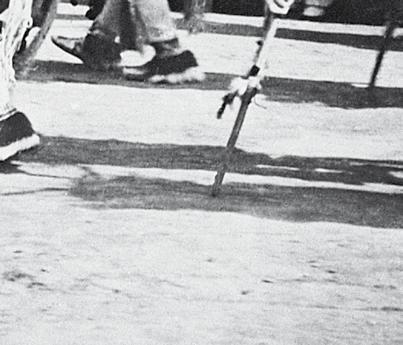
WARBURG, PREMODERN MAGIC, PHOTOGRAPHY
JOSH ELLENBOGEN
Photography has occupied a remarkably equivocal position in scholarly commentary in the twentieth and twenty- rst centuries. On the one hand, many scholars have taken as a matter of course that photography, owing to its alleged ability to destabilize the high art values associated with painting, performed a liberatory function. Frequently, this body of commentary has drawn on particular components of Walter Benjamin’s work, celebrating photography for its deauraticization of the art object and its subsequent ability to open up new vistas of politically radical artmaking.1
On the other hand, equally many scholars have focused on the imbrication of photography with regimes of domination; that is, the way in which legal and colonial authorities have employed the medium within regressive structures of objecti cation and surveillance. ese scholars have generally examined how photography, often under the guise of tendering disinterested knowledge about the world, has embodied, entrenched, and mobilized unequal power relations.2 Of the various forms of photography to which they have looked, anthropological photography represents one of the primary domains ( g. 1).
In this essay, I turn to a particular case of photography’s anthropological employment, not to resolve or clarify the medium’s ambiguous status, but instead to deepen it. To do so, I consider a gure always useful for generating ambiguity: the great art historian Aby Warburg, and his study of indigenous peoples in the Southwestern United States. Immortalized as the “Kreuzlingen lecture” of 1923, this study consists of photographs of the Hopi, the most important of which concern their sacred objects and rites, supplemented by Warburg’s own spoken text.3 Of the various Hopi rites that mattered to Warburg, the celebrated “snake dance,” a rain ceremony in which masked dancers
1
e commentary that circulated around the journal October in the twentieth century, involving such gures as Rosalind Krauss and Douglas Crimp, exempli es this tendency. is body of scholarship tends to focus on photography’s ability to reproduce art objects, as that capacity appears in Benjamin’s writing, and has neglected other aspects of Benjamin’s work, above all his thoughts surrounding the “optical test.” ese matters lie far a eld from the present essay, however.
2
So much scholarship has unfolded in this vein that I cannot possibly give a résumé of it. Much of this literature, however, traces back to John Tagg, e Burden of Representation (Minneapolis: University of Minnesota Press, 1988).
3
Originally bearing the title Bilder aus dem Gebiet der PuebloIndianer in Nord Amerika, it has appeared in English as Images om the Region of the Pueblo Indians of North America, trans. Michael Steinberg (Ithaca, NY: Cornell University Press, 1995). I rely on this standard English translation of the text throughout the present essay.
193/
4
David Freedberg “Pathos at Oraibi: What Warburg Did Not See,” Columbia Academic Commons, https://academiccommons .columbia.edu/doi/10 7916 /D89G5TH6, 10. For an exploration of Warburg’s relation to anthropology, see Sigrid Weigel, “Aby Warburg’s Schlagenritual: Reading Culture and Reading Written Texts,” New German Critique 65 (Spring/ Summer 1995): 135–53.
5
David Freedberg, “Warburg’s Mask: A Study in Idolatry,” in Anthropologies of Art, ed. M. Westerman (Williamstown, MA: Clark Art Institute, 2005): 4, 7, 9
6
I take the reference to Warburg as renegade from the title of a review of the recent English-language edition of his Bilderatlas: Lucy Ives, “Renegade Art Historian Aby Warburg Challenged the Discipline’s Elitism with Photography,” Art in America, June 8, 2020, https://www.artnews.com /art-in-america/features/abywarburg-mnemosyne-atlas -reproduction-1202689821/. Benjamin Buchloh discerns in the Bilderatlas a commendable anti-positivism. See Benjamin H.D. Buchloh, “Gerhard Richter’s ‘Atlas’: e Anomic Archive,” October 88 (1999): 129. e Bilderatlas comprises a collection of photographs of artworks, as well as vernacular images, gleaned from various cultures across time, which Warburg mounted on cloth to illuminate (and even establish) his account of cultural memory.
7
Freedberg’s analysis makes much of the fact that Warburg never saw the dance. See Freedberg, “Warburg’s Mask,” 3.
handled live rattlesnakes and held them in their mouths, made up a xation.
Warburg’s work falls usefully into the schema I have delineated above. Many see his research as exemplifying the fertility of conducting art history as anthropology; some recent scholarship has even tried to use critique of Warburg as a vehicle by which to critique the idea “that art history is best seen as anthropology.” 4 More broadly, commentary on Warburg’s use of photography duplicates the tension surrounding photography’s political character. Some commentators on Warburg discern in his use of photography, particularly in his work with the Hopi, the most regressive features of photography’s employment in modernity. Here, Warburg’s anthropological work in icts the “insults of photography” on the Hopi and produces from sacred rites and objects “transgressive photographs” that themselves amount to one of the “brutal invasions” the Hopi have su ered.5 Di erent commentators, who tend to focus on the other main instance of Warburg’s use of photography—the Bilderatlas Mnemosyne—construe his use of the medium in divergent terms. Here, Warburg becomes a “renegade art historian” who “challenged the discipline’s elitism with photography” or even channeled photography into disruptive, “anti-positivist” avenues.6
As I consider Warburg’s Kreuzlingen lecture, I will not attempt to adjudicate the validity of his claims regarding Hopi culture in general or the snake dance in particular. Many others have pointed out that Warburg’s analysis has little to o er by way of understanding the Hopi and have emphasized the inconvenient fact that Warburg never actually saw the dance he situated at the center of Hopi culture.7 What I want to do instead is consider photography, as a conceptual entity, within the broader context of Warburg’s thought, above all as it concerns his sign-theory, and the larger equivocations bound up in Warburg’s historical project about modernity and what he calls “the primitive.” In the course of doing so, I hope to shed some light on the place of photography in art history’s classic tradition, as well as the relation between photography and primitive magic in twentiethcentury discussion. From this vantage, Warburg’s photographically interpolated encounter with the Hopi acquires a di erent character than it otherwise might.
e brief version of the story goes that, during his visit to the United States of 1895–1896, Warburg felt distaste for the world of New York City, and so he went to the Southwest to study the lives of people he identi ed as premodern, already an important area of interest for him. Twenty-two years later, when Warburg had become an established gure in the art-historical discipline, he entered a period of acute mental crisis and began experiencing psychotic symptoms.
194/
By 1923, he had spent the better part of ve years institutionalized in mental hospitals and had made so much apparent progress that his doctor agreed to release him—on condition that, as proof of his recovered stability, he deliver a lucid and intelligible talk concerning his travels among the Hopi. So, twenty-seven years a er the trip, Warburg had to gather his memories and photographs, to deliver a “high stakes” academic lecture if ever there was one.








To grasp the real signi cance of the trip, Warburg’s re ections on it, and his use of photography among the Hopi, we have to contend at least quickly with Warburg’s sign-theory. As the most incisive commentary on Warburg generally notes, his work proceeds from a particular way of construing sign use and a concomitant way of construing the di erence between the primitive and the modern.8 Developing the ideas of Friedrich eodor Vischer, Warburg believed an essential distinction exists between the magical thinking of primitive peoples and the logical, discursive proceedings of moderns. In the former case, the signi er remains imperfectly distinguished from what it signi es; in extreme cases, as in primitive idolatry or primitive magic, such slippage exists between the two that the image of x gets treated as though it is x; the images of gods become idolatrous gods to premodern peoples, and action visited on the image of x becomes action visited on x in “savage” magic (think of artifacts such as voodoo dolls). In modernity, by contrast, we operate in the vicinity of the opposite pole: the
8














Many commentators have made the following, broad points about Warburg, but the three whose readings most closely follow mine are Freedberg; Matthew Rampley’s, “From Symbol to Allegory: Aby Warburg’s eory of Art,” Art Bulletin 79 (March 1997): 41–55; and, above all, Edgar Wind’s, Art and Anarchy (Evanston, IL: Northwestern University Press, 1985) and “Warburg’s Concept of Kulturwissenscha and Its Meaning for Aesthetics,” in e Eloquence of Symbols, ed. Jaynie Anderson (Oxford, UK: Oxford University Press, 1983), 21–35.






195/
Fig. 1
EDWARD HORACE MAN ANTHROPOLOGISTS WITH A GROUP OF ONGES, LITTLE ANDAMAN , 1880 s
P. 192
ABY WARBURG HOPI DANCE RITUAL, 1896 (DETAIL) , SLIDE NO. 19 FROM THE LECTURE “THE SERPENT RITUAL,” 1923
9
“Warburg’s Concept” originally appeared in 1930 as a lecture, “Warburg’s Begri der Kulturwissenscha ,” which Wind delivered to commemorate Warburg a year a er his death.
10
Wind deploys this vocabulary throughout Art and Anarchy
11 Wind, Art and Anarchy, ch. 2, n. 53
12
Aby Warburg, Der Bilderatlas Mnemosyne, ed. Martin Warnke (Berlin: Akademie Verlag, 2000), 3.
13
“Warburg’s Concept,” 28
14
Although he characterized the poles of our humanity di erently, Erwin Panofsky’s conception of the human clearly owes something to Wind and Warburg. See Erwin Panofsky “ e History of Art as a Humanistic Discipline,” in Meaning in the Visual Arts (Woodstock, NY: the Overlook Press, 1974), 1–25.
15
“Warburg’s Concept,” 28–29.
signi er enjoys a bloodless, purely conventional relation with what it signi es; we develop hyperrational systems of scienti c thought that renounce any species of intrinsic connection between signs and what they show; and the modern subject survives as best it can in this desiccated state.
While Warburg clearly intended to analyze the snake dance of the Hopi as an instance of premodern magic, three points become crucial to the modern/premodern distinction in his work. Edgar Wind, who did his art-historical research in Warburg’s wake, made these points about Warburg with special clarity as early as 1930. 9
First, the two poles sketched above, which Wind later glossed as “participation” and “distance,” represent regulative fictions. 10 Historically, in their pure forms, they have never become empirical realities. One is never so fully immersed and caught up in the image, never participates in its ction so unreservedly, that one entirely mistakes it for what it shows: in magic rites, “even the caveman must have sensed a slight di erence between the act of hunting an animal and the anticipatory gesture of painting it in order to secure a successful hunt.”11 e precondition for a sign being a sign, or an image being an image, is some reserve of distance, however small, before it, and the moment when humanity achieved a speci cally human status dates to the establishment of conceptual distance. Warburg states, “Conscious creation of distance between oneself and the outside world may well be designated as the founding act of human civilization.” 12 Similarly, regardless of the utopian (some might say dystopian) hopes of certain moderns, we can also never fully render images into a “lifeless system of allegorical signs,” entirely abandoning “the magical way of thinking” and so lose any vestige of participatory magic.13
Second, in this interstitial condition, where historical cultures live in the gap, sometimes closer to one pole or another, but always in between, we nd the essence of our humanity.14 Were we ever fully to close the distance between ourselves and either regulative pole, assimilate the image fully either to participation (unquali ed belief in “the incarnate symbol”) or distance (a faded, anemic “conceptual thinking”), such speci cally human domains as the aesthetic would cease to exist: “Artistic creation embodies th[e] intermediate position,” since “[i]t is here that the image, in the sense of the artistic illusion, nds its place.”15
ird, and perhaps most important, were we ever to achieve one of the poles, whether that of pure participation or that of pure distance, there would e ectively be no di erence in our nal condition.
e general dri of this way of construing Warburg dictates that “the extremes meet.” In the case of either full participation or full distance, no symbolic thinking of any kind takes place. e image of a god that
196/
savages fully treated as a god would not be a symbol of a god but would o er direct experience of the god itself; the creation of a hypermodern, purely rational sign with a lifeless and arbitrary connection to some content would similarly become the kind of thing we could behold nonsymbolically, as a set of dead, inert materials we might also experience directly.
And this brings us back to photography. In Warburg’s most pessimistic moments about modernity, he seems to indicate that moderns have come far closer to attaining one of the two poles than premoderns or “primitives” ever did. Because the poles end up being indistinguishable, we can go so far as to say that, for Warburg, we have become better savages than the savages themselves ever were. Consider the end of Warburg’s work on the Hopi, where he re ects on the modernity to which he counterpoises them:
Natural forces are no longer seen in anthropomorphic or biomorphic guise, but rather as in nite waves obedient to the human touch. With these waves, the culture of the machine age destroys what the natural sciences, born of myth, so arduously achieved: the space for devotion, which evolved in turn into the space required for re ection. e modern Prometheus and the modern Icarus, [Benjamin] Franklin and the Wright brothers . . . are precisely those ominous destroyers of the sense of distance, who threaten to lead the planet back into chaos. Telegram and telephone destroy the cosmos. Mythical and symbolic thinking strive to form spiritual bonds between humanity and the surrounding world, shaping distance into the space required for devotion and re ection: the distance undone by the instantaneous electric connection.16
In this extraordinary passage, Warburg shi s the pole with which he primarily associates the premodern away from participation, instead celebrating mythical thinking for its initial creation of conceptual and re ective distance, the founding act of the human. e moderns, by contrast, become the great destroyers of distance, plunging us back into a world of direct and immediate relations with things, allowing no space for anything we could properly call “symbolic.”
No great imagination is required to see how photography ts this schema. Commentators have long discussed photography as an imaging technique that, owing to the indexical, causal link between its pictures and what they show, preserves not just the image of an original but the original itself.17 In the strongest formulations, this fact allows the photograph in e ect to be the original, much like the idols that moderns enjoyed assigning to premoderns. As André Bazin, who speci cally associates the photograph with primordial magic, comments, “the photographic image is the object itself.”18 e imaging technology
16 Images om the Region of the Pueblo Indians, 54.
17
I do not comment on the plausibility of the position that insists on the centrality of photography’s indexicality, where objects make their own images, like a nger does a ngerprint. I simply note its historical prominence.
18
André Bazin, “ e Ontology of the Photographic Image,” in What Is Cinema?, vol. 1, trans. Hugh Gray (Berkeley and Los Angeles: University of California Press, 2005), 14.
197/
that anthropologists deployed as one of the hallmarks of their modernity, a talisman that vouchsafed their right to study primitives from a position of superiority, here becomes proof that the anthropologists have relinquished any such position.


Setting aside the more overblown claims involving photography and indexicality, we can identify certain deployments of photography that match this schema. Instructively, these deployments have tended to be the most advanced and cutting-edge kinds of photography, just as Warburg’s thinking on modernity would suggest. For just one example, we could consider the celebrated physicist A.M. Worthington, at work in the same years Warburg visited the Hopi. In images of this kind, which proliferated in science a er 1880, investigators harnessed photographic technology to register nonvisible events and displacements. While the human eye cannot see anything that happens faster than one-tenth of a second, Worthington made exposures, using ultrahigh-speed lm and specialized lighting conditions, at a mere six-millionths of a second, doing so to disclose an undreamt world of eeting, nonvisible, liquid architecture ( g. 2). Because, in the absence of photography, these splashes have no visual aspect at all, Worthington did not use photography to record an appearance but instead to make an appearance, creating forms for the displacements he studies. at is, the data he studies have no existence as data without photography, and they do not come to be for a physicist in the absence of photography. At a functional level, these images do not record originals but instead acquire the standing of originals themselves. ey have precisely the

198/
Fig. 2
A.M. WORTHINGTON SPLASH OF A DROPLET , FROM A STUDY OF SPLASHES , CA. 1890
character that Warburg would have imputed to an idol or a magic image—practically speaking, they are the thing itself.
An adjudication of the validity of Warburg’s argument is beyond the scope of this essay, as is a full exploration of the important ways in which images such as Worthington’s diverge from idols. But we should note the broader traction such arguments have. Consider Alois Riegl, another of the founders of art history, at work only a few years before Warburg. For Riegl, the broad story of Western art history consisted in the optic mode of art emancipating itself from an earlier, more primitive, haptic proceeding. Although Riegl never says so, the emergence of photography in the nineteenth century would have to correlate to a recrudescence of the haptic primitive within his scheme. Consider also the philosopher R.G. Collingwood.19 Writing in the 1930s, Collingwood developed an attack on anthropology felicitous to Warburg’s work. Well aware of the line of thought whereby primitives con ated the image of a thing with the thing itself, Collingwood both rejected the assertion that primitives did anything of the kind, and argued that the only people who did so were in fact anthropologists, and that their misreading of primitive magic proceeded from the very error—taking the sign for the thing—that they imputed to the primitive. As was the case with Warburg on photography, moderns proved more savage than savages.
19 See R. G. Collingwood, e Principles of Art (Oxford, UK: University of Oxford Press, 1938).
199/











APPROACHES TO A PHOTOGRAPHY OF PAIN
INÉS PLASENCIA
The emergence of photography in the nineteenth century profoundly changed the way images were used and experienced but also reinforced the link between representation and social control. While debate abounded over whether photography was an art form, it was embraced almost without discussion as a useful means of classifying and recognizing people and collectives who, according to then prevailing ideas about public order in industrialized cities, posed a threat to urban bourgeois lifestyles and, above all, private property.
e Burden of Representation (1988) by art historian John Tagg and “ e Body and the Archive” ( 1989) by artist and writer Allan Sekula are canonical texts for exploring photography’s dual social dimension and inherent paradox. From the start, photography self - identi ed as a medium of modern fantasy replete with aesthetic possibilities while serving the interests of new institutions and forms of state control. Or as Sekula writes, “We are confronting, then, a double system: a system of representation capable of functioning both honori cally and repressively.”1 On the one hand, photography would become a visual tool for preserving memory and entrenching status among the bourgeois classes, just as portrait painting and sculpture had done before. On the other hand, it would be used to transfer into the visual sphere certain repressive disciplines and methods devised in the nineteenth century to ensure normalization, to identify di erent strata of society as dissenting from the “correct path,” one naturally embodied by the postrevolutionary, bourgeois model citizen. Disciplines such as anthropology and psychiatry and institutions such as prisons and the police—Alphonse Bertillon and Francis Galton’s use of photography in criminology being paradigmatic examples—employed
201/
1
Allan Sekula, “ e Body and the Archive,” October, no. 39 (Winter 1986): 6.
FRANCIS GALTON SPECIMENS OF COMPOSITE PORTRAITURE (DETAIL), FROM HIS BOOK INQUIRIES INTO HUMAN FACULTY AND ITS DEVELOPMENT , 1883
photography not only to exclude a vast array of people from a notion of “order” but to criminalize their very existence by using visual codi cation to support claims that such classi cation was natural. at is, what we now understand as normativity was itself a visual construct, one that was not new—images and depictions of this kind had been coming out of the colonies for centuries—but that found in photography a weapon that could point and “shoot” at di erent forms of existence and present them as deviations from the norm.
Not coincidentally, these criminalized people were judged to be unproductive—or, rather, potentially highly productive if maximally exploited. is was, a er all, a nineteenth century in the grip of a post–Industrial Revolution colonial and technological arms race; it was a context that turned cities into cradles of pauperism and foreign lands into potential colonies whose riches simply had to be mined in the name of progress. Exploitation of bodies (and their consequent classi cation) thus ran in parallel with the exploitation of natural resources in any territory yet to be conquered a er the European incursions of previous centuries. e photographing of bodies in colonies, therefore, formed part of an extractivist drive whereby bodies might be “read” and assigned “validity.” Any analogies that might be drawn between these photographed bodies and the destruction of land point toward concepts of monoculture.2 e establishment of a single “valid” body type generated as much violence and pain as did the limiting of cultivation and production to items intended for export from the colonized territories, be they occupied or usurped. We cannot separate land from body when re ecting on how photography developed from its inception, nor can we forget that these kinds of images were used not to show reality but to construct one and that even now it remains hard to distinguish between the world and its photographic re ection.
Photography’s dual gaze, the way it could “look up” and “look down” at society, also saw anthropological photography thrive.3 Just as the police claimed to be anticipating (while actually constructing) supposed dangers to society by codifying particular physical features, so, too, did anthropology nd a eld (the colonies) and a body (the nonwhite) upon which to project its arguments of racial superiority. is suited the colonial powers, for they could deploy anthropology, along with other branches of the colonial administration—such as civil engineering, healthcare, and religious missions—as a means of pseudoknowledge that justi ed the need to control local populations in regions they wished to conquer. Territory and bodies were, as has happened so o en throughout history, treated as resources, o en with practically no distinction made
202/
2
3
See Eli Clare, Brilliant Imperfection (Durham, NC: Duke University Press, 2017).
Sekula, “ e Body and the Archive,” 10.
between them. Portraits of colonized populations were, for example, typically displayed alongside plundered objects and nature specimens at colonial and universal exhibitions, public shows that con ated technological progress with the colonizing process and exposition and museology with nationalist discourses. Carl Dammann’s Anthropological and Ethnologies Album is a prime example. Compiled in 1873 and 1874, it features photographs taken in various regions of Africa and won a bronze medal at the International Exhibition of Vienna in 1873. e extraction and exploitation of natural resources provoked imperialist wars, of course, just as they do today. The Second Opium War ( 1856 – 1860 ) was one such conflict, prompted by the United Kingdom’s wish—shared by France—to control the opium trade, ultimately resulting in the annexation of Hong Kong. Felice Beato, having been an assistant to James Robertson during the Crimean War a few years earlier, photographed the conflict and pioneered a kind of photojournalism in which massacres are depicted as inherent facets of imperialist war. It is a photography of pain in which mutilated bodies are barely distinguishable, as Virginia Woolf would later note in describing images from the Spanish Civil War—comments Susan Sontag would then cite in the rst chapter of Regarding the Pain of Others (2003 ).4 Modern life, Sontag writes, supplies innumerable opportunities for regarding, through the medium of photography, other people’s pain. 5 Such photographs o en generate debate over the pros and cons of showing versus concealing , which is perhaps inevitable given that wars and political violence have been constants since photography’s invention and were especially prevalent in the twentieth century. But another topic of discussion is the overexposure of bodies— nonwhite bodies in particular—and the way they are relegated by the repressive nature of photography and thus violated twice over: once by the war and once by the camera. Still, we remain unsure whether, though this sounds paradoxical, revealing violence in fact neuters our political interpretation of bellicose con icts, and what our reactions and potential responses to seeing “the pain of others” even are.
Now might not be a bad moment, therefore, to accept and recognize that photographs of the kind anthropologists produced in the second half of the nineteenth century—although the practice is by no means entirely consigned to the past—belong in the same photographic archive of pain as do images of war and dismembered bodies. Anthropological photography served as a colonial tool but must be considered beyond its place in the genealogy of Eurocentric knowledge. e way photojournalism enables us to perceive
4 Susan Sontag, Regarding the Pain of Others (New York: Picador/Farrar, Straus and Giroux, 2003), 3
5 Sontag, Regarding the Pain of Others, 13.
203/
pain with the kind of clarity that comes from looking at images of concentration camps or attacks on civilian populations prompts numerous ethical questions. But whereas almost every study of anthropological photography acknowledges that pseudosciences and institutions of state control adopted the practice to promote imperialism—understood in the broadest sense, arguably the only meaningful sense—they also tend to conclude that some of the results of this practice must nevertheless be treasured, saved, and restored.
In considering the history and theory of photography, I give a lot of thought to how we should question images and when we should invite those questions by making images visible according to certain narratives. Historiography shows that we should be very careful about how, and from what starting point, we talk about particular images—the question whether we should show those images and the implications of doing so remains moot. Inequality is still evident in the preservation of images. In general, where an image is held determines what aspects of it will be emphasized when it is displayed. Current debates over the restitution of cultural materials taken from colonized nations thus concern the right to reparation in various senses, one of them being the need to address the inequality of who gets to decide what is signi cant about a piece, another being the need to make items available for study and appreciation within the framework of their place of origin. e very idea of conservation is cultural and contextual. In the realm of photography, portrayed people and their descendants and communities do not, as a rule, have any capacity to comment on, let alone manage, the way their history is or is not made visible, nor how it ought to be interpretated. is is not about taking for granted what their positions might be, assuming some form of rejection or even unanimous consent; rather, it is a re ection on the inherent problem of European photographic archives: monopolization, zeal, economic revenues. One of the most common arguments against the restitution of artistic pieces, objects, and photographs is that the conditions in Europe for preserving them are supposedly better. Besides perpetuating European stereotypes and prejudices, this takes as a given that preservation is a necessity. However, as Jennifer Bajorek argues, maybe not all photographs want to be conserved: “Few could deny that we now have both the historical distance and practical experience to know that images, like technologies, are neither culturally nor politically neutral. It follows that ‘archival loss’ does not have the same meaning in all places. Nor should it. It remains an open question of what it will take to decolonize the archive in this context, and one that we are just beginning to explore.” 6 at
204/
6
Jennifer Bajorek, “Decolonizing the Archive: e View from West Africa,” Aperture, no. 210 (Spring 2013): 69.
there is inequality in the power dynamic at the moment of a photograph’s creation is impossible to deny. An implicit tension will always, therefore, remain: How can we make violence explicit without denying the portrayed people their experience and agency and without creating further victims decades later when the critical context has inevitably changed? Beginning in the 1990s, practically the only people able to or interested in studying these anthropological images were Anglo-Saxon academics, with the most notable contribution coming from Elizabeth Edwards. But more recent debates, originating primarily from former colonized lands and their diasporas, have brought to the table the notion that, if certain photographs generate violence and pain, then so, too, does academic study of them. Even in a best- case scenario, scholars have focused their analysis on describing the portrayed cultures, but rather than neutralize the inequality this reproduces it over and over again.
More recently, initiatives such as that of Anthony W. Lee have sought to locate places where a legitimate and reparative kind of memory might be found by rereading photographs of imperialist scenes. roughout his research, which focuses on images of the Chinese immigrant community in the United States, California particularly, Lee has developed a methodology that aims to tell the story of a photograph not only in terms of the captured image but as a social interaction, more of a “clash” than an “encounter,” considered from di erent points of view. Photographic theory is based on the relationship between the image and its referent; how it corresponds to the truth, its indexical signi cance, how the image was produced and divulged, and the political and relational framework from which we consider the image. By the same token, any study of anthropological photography must bear in mind exactly how the disciplines of photography and anthropology were understood by the people who used—and still use—photographs in their work. But some studies go further and also consider, from the perspective of the portrayed communities and their memories, what these images are able to o er in terms of memorial reparation. As Lee sees it, photography is in and of itself a place of historical struggle. He writes,
All of this arguing in front of the camera ended up creating a large body of photographs that was vital and plentiful but also plural, con icting, and o en incommensurate. Indeed, although all of [the] major actors in our story looked at the photographs and resorted to yet more pictures as a way to express themselves and mediate on their experiences, no one ever agreed on much of anything, photographically or otherwise. In these pictures,
205/
7
we can sometimes still feel the heat of their disagreements. In their hands, the photographs were not merely illustrations but sites of historical struggle. That is to say, the social struggle among North Adams’s constituencies became a struggle in and of representation.7
A photograph’s analytical potential derives from the idea that the social signi cance of taking a photograph—but also of posing for one, being present, existing, even being portrayed unwittingly—can o er insight into historical struggles, through di erent experiences and from a variety of angles, if we delve more deeply into what, in any given context, “being portrayed” represented. Separating, even for a second, an image from its imperialist context can be highly problematic, but so, too, is ignoring the fact that these communities also appropriated photography to some degree. By considering the Chinese community’s gaze, Lee’s analysis thus reveals history at the intersection of migrant aspirations and the construction of a collective identity.
8
Camera Was
Teju Cole, “When
Weapon of Imperialism (and When It Still Is),” e New York Times Magazine, February 6, 2019, https://www
.nytimes.com/2019/02/06
/magazine/when-the-camera -was-a-weapon-of-imperialism -and-when-it-still-is.html.
9
What seems to be required—urgently—is a broader awareness that we can look, write, curate, and exhibit only in the present day and that, when it comes to showing, we can see only from the here and now. Teju Cole, photography critic for the New York Times , writes, “Without confronting this inequality, this misconstrual of history, photography will continue to describe itself as one thing (a force for liberation) while obdurately remaining another (an obedient appendage of state power).”8 Cole argues that imperialist photography is clearly still prevalent today in the way photographs routinely depict violence and pain caused by power hierarchies not so di erent to those of the nineteenth century, the products of countries in the Northern Hemisphere—namely from Europe plus the United States—colonizing almost the entire world. While Sontag asks what e ect looking at pain has on the viewer, Cole suggests that “in looking at these images—images of war, of starvation, of capsized boats and exhausted caravans—we must go beyond the usual frames of pity and abjection. Every picture of su ering should elicit a question stronger than ‘Why is this happening?’ e question should be ‘Why have I allowed this to happen?’”9
Artistic disciplines can complement literary or academic writing on colonial photography and anthropological photography by providing perspectives, typically rooted in personal identity, that are more a ecting or emotional than drier academic texts. In From Here I Saw What Happened and I Cried (1995), the AfricanAmerican artist Carrie Mae Weems manipulates portrait photographs of enslaved and colonized Black people taken primarily
206/
Anthony W. Lee, A Shoemaker’s Story: Being Chie y about French Canadian Immigrants Enterprises Photographers, Rascal Yankees, and Chinese Cobblers in a Nineteenth-Century Factory Town (Princeton, NJ: Princeton University Press, 2008), 8–9
the
a
Cole, “When the Camera Was a Weapon of Imperialism.”
by anthropologists. e series denounces the dehumanizing e ect these images had not only on the popular imagination but in justifying the exploitative conditions the portrayed people lived under. With each work Weems narrates the history of abuses su ered by African and African- descendant populations by citing parts of the subject’s Black body the photographer kept out of the frame . . . and she cries, shedding a tear for something harder to articulate: the inheritance of a pain the photograph helped cause and that is perpetuated whenever it is unveiled for study.
207/






THE DILEMMA OF PHOTOGRAPHY: PHOTOJOURNALISM, HISTORY, AND THE PARIS COMMUNE
PAUL MELLENTHIN
e advent of photography seemed to make a long-cherished dream come true—was it nally possible to capture the present and to preserve it for future generations? Photography “is a mirror that keeps every impression,” states one of the rst reviews in 1839, adding, “it is the faithful memory of all the monuments and all the landscapes in the universe; it is the incessant, spontaneous, indefatigable reproduction of a hundred thousand masterpieces which time has raised up or toppled down on the surface of our planet.”1 e earliest accounts that introduced the new medium to the public advertised that the world had just gained a much better way to preserve the present. e here and now of the photograph was challenging the paradox of contemporary history: to address a present that, as soon as it occurs, already belongs to the past. Photography bore the promise to faithfully record the world before time caused it to collapse.
But only thirty years a er the publication of the invention had the technological development progressed in such a way that the camera was commonly used to capture not only monuments and landscapes but events. When, in the spring of 1871, insurgents were combatting Versailles soldiers in the streets of Paris, many of the numerous photographers who lived in the French capital—which
UNKNOWN
BARRICADE DE LA RUE DE LA ROQUETTE, PLACE DE LA BASTILLE , FROM ALBUM DE PHOTOGRAPHIES ET D’ARTICLES DE JOURNAUX SUR LA GUERRE FRANCO-PRUSSIENNE ET LA COMMUNE DE PARIS 1870 – 1871 (DETAIL), 1871 (BARRICADE AT RUE DE LA ROQUETTE, PLACE DE LA BASTILLE)
Jules Janin, “ e Daguerotype,” in L’artiste: Journal de la littérature et des beaux-arts, January 28, 1839, cited from Ste en Siegel, ed., First Exposures: Writings om the Beginning of Photography
(Los Angeles: J. Paul Getty Museum, 2017), 68.
209/
1
2 Photography’s engagement with the Paris Commune is generally judged not as an expression of political agreement but as a chance encounter. For further reading, see Jeannene M. Przyblyski, “Revolution at a Standstill: Photography and the Paris Commune of 1871,” Yale French Studies 101 (2001): 54–78; Bertrand Tillier, La Commune de Paris, révolution sans images? Politique et représentations dans la France républicaine (1871–1914) (Seyssel, France: Ed. Champ Vallon, 2004); and Quentin Bajac, ed., La Commune photographiée (Paris: Réunion des musées nationaux, 2000).
3 e print is stored in the Bibliothèque Historique de la Ville de Paris. e same print in the collection of Northwestern University is attributed to AndréAdolphe-Eugène Disdéri.
4
Alain Badiou, e Communist Hypothesis (London: Verso, 2010), 220
5 Przyblyski, “Revolution at a Standstill,” 76
6 Jodi Dean, Comrade: An Essay on Political Belonging (London: Verso, 2019).
was then, likewise, the capital of photography—immediately began to document what was happening, taking hundreds of pictures. 2
Consider, for instance, an image taken by an anonymous photographer at the intersection of Rue Basfroi and Rue Charonne on March 18 , 1871 . 3 It is a beautiful and impressive composition. Every child, woman, and man dispersed before, on top, and behind a barricade erected in the middle of the street faces the lens. Only a dog has not yet spotted the imaginary threat that the camera embodies ( g. 1).
From March 18 to May 28 , 1871 , during the roughly three months that the Commune had control over Paris, vast reforms were carried out, and a direct democracy was installed. Workers had emerged from their political inexistence, from a state of not being into a state of being. “ ere exists no stronger a transcendental consequence,” Alain Badiou writes, “than that of making something appear in a world which had not existed in it previously.” 4 For the rst time, photographs depicted anonymous workers in a moment of political belonging. ey are charged with an awareness of history. ey not only bear witness to the self -consciousness that was gained during the short period that the Commune lasted; they were attempts to shortcut the open circle between present and future. e encounter between revolution and photography was governed by a “stillness of historical contingency.” 5 e sincerity expressed in the faces of the revolutionaries can be interpreted as a call to future beholders, an appeal to grant their actions a place in history.
e date March 18, 1871, became synonymous with a new visibility. Most of the photographs of the barricades are dated March 18 even if they were taken days or weeks later. e photographs are testimonies of the optimistic belief that with the camera the past would not remain in the possession of the rich and powerful but would instead belong to the many. As Jodi Dean points out, however, every revolution is vulnerable to retrospective corrections from subsequent ruling powers, and the Paris Commune is no exception. 6 As the three case studies presented in the following pages illustrate, the accounts of the premier photojournalists who accompanied the events came to be disregarded as fake news. In the a ermath, photographic criticism was widespread and part of a general attempt to restore political order under the new ird French Republic.
210/
When looking at photographs of the Paris Commune, the first issue to consider is the extent to which they were already regarded as documents with historical value. Although we cannot take for granted that photographic images were always used to gain some kind of access to the past, in the last quarter of the nineteenth century the use of photographs as historical documents had already become somewhat self - evident. We can tell this because of how elaborately contemporary news discourse deconstructed the very conditions of photographic evidence. Readers of newspapers were educated to doubt photographic realism. An illustration in the popular feuilleton La Vie parisienne presents a canny example ( g. 2). e image shows a Parisian street barricade that is occupied by Communards. In the center are four men in uniform and two women wearing kepis, the typical French military cap.7 e man in the foreground, identi ed by the caption as a colonel, is depicted in a ridiculous pose: his arms are folded, and his weapon has broken











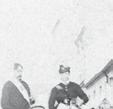
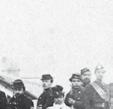
UNKNOWN COMMUNE DE PARIS: BARRICADE DE LA RUE BASFROI ET RUE DE CHARONNE: PARIS (XIÈME ARR.) , 1871 (PARIS COMMUNE: BARRICADE OF THE RUE BASFROI AND RUE DE CHARONNE: PARIS, 11TH ARRONDISSEMENT)




7







For the signi cance of women, see Gay L. Gullickson, Unruly Women of Paris: Images of the Commune (Ithaca, NY: Cornell University Press, 1996); and Édith omas, e Women Incendiaries (1963; Chicago: Haymarket, 1966).

211/ I
Fig. 1
loose and slid down through his widely opened legs. e comrades surrounding him look equally foolish, smoking pipes and beating drums. Behind the barricade, a large crowd of armed soldiers rushes toward the front, vigorously trying to make themselves more visible. e newspaper illustration and the March 18 photograph bear many similarities. Did the photograph serve as a model for the illustration? e physiognomy of the street and the barricade, as well as the disposal of the revolutionaries, is noteworthy. ese features were likely copied from the photographic image. In contrast, the illustration includes fewer women and no children. Among other changes introduced by the illustration are liquor stores to the right and le of the barricade and changes in the posture and position of the gures. e exaggerated style of the newspaper illustration turns the originally serious poses into a grotesque spectacle. e faces of the Communards in the cheering crowd are amalgamated to an inert cluster of bodies. e dark hatchings on the woodblock outline only the six stereotypical protagonists, giving the impression of failed actors on a poorly constructed theater stage.

Many of the tropes present in the illustration were commonly used to discredit the revolutionaries: the female Communard






212/
“CE
(“WHAT
Fig.
2 UNKNOWN
QU’ON PEUT SE PERMETTRE POUR SIX MOIS DE PRISON,” FROM LA VIE PARISIENNE , SEPTEMBER 30, 1871
YOU CAN AFFORD FOR SIX MONTHS IN JAIL”)
(pétroleuse), the good-for-nothing insurgent (voyou), the drunkard, the fever for revolution, and the reduction of the individual to a characterless group of barbarians.8 Eventually, the caricature introduces a series of fourteen depictions that La Vie parisienne dedicated to the events. ey appeared on a double-page spread entitled “What we can a ord for six months in prison.” 9 It suggests that a rapid decline of all moral values followed the heroic self- presentation in front of the camera. Revolutionaries are engaged in gambling, corruption, concubinage, and looting.
A er the events, together with the revolutionaries, photography mounted the sca old. In the commentary underneath the illustration, readers learn that the documentary truth had been compromised by a dramatic mise - en - scène: “ ARTISTIC BARRICADES .— Built on the drawings of the ‘Master.’ e sun, requisitioned for the occasion, will reproduce the features of the battalion artfully arranged: in the foreground, the colonel and his boots; behind him, lascars and varied pétroleuses in an imposing attitude; basically all the good [idiots?] as they were in battle.”10 e illustration aims to rmly disarm the revolutionary actions and the credibility of their representation in photographs.
The conclusion to be drawn was that one could no longer trust “the sun,” a common metaphor for photography. Looking again at the illustration, we may notice that a camera is placed in front of the barricade and all attention is focused on the tripod. Compared to the original photograph, the slight modi cation of viewing angle seems of pivotal importance. e standpoint in the magazine is that of a second-order observer. e readers of La Vie parisienne are no longer mere spectators but are asked to re ect upon the mediation of the events.
II
In second - order observation, attention is generally drawn away from the contents observed and directed toward the agents—their characters, their intentions, and their objectives. On the front page of the Illustrated London News an anonymous photographer is portrayed as a callous exploiter of misfortunes. 11 White clouds of smoke impressively shape the gure of the image agent. We encounter him in the process of taking a photograph, in the moment when he has taken down his top hat to disappear underneath the heavy cloth of his camera, while a childlike assistant provides him with a negative plate. e wooden box where the glass plate was stored still lies next to their feet (p. 64).
8
For the development of these literary gures, see Paul Lidksy, Les écrivains contre la Commune (Paris: Éditions Maspero, 1970).
9 “Ce qu’on peut se permettre pour six mois de prison,” La Vie parisienne, September 30, 1871, 932
10
“Ce qu’on peut se permettre,” 932
11
“Ruins of Paris,” Illustrated London News, June 3, 1871, 549.
213/
12
In the right foreground, placed against the backdrop of burning ruins, a barefoot child struggles hopelessly for the attention of the mother. e sorrow of the widow and child is contrasted by the heroic action of four re ghters in the background. e photographer in the center is part of the scene but depicted apart from it. Hidden behind the camera, he directs his lens away from the action. He neither makes himself useful by putting out the re, nor does he help the ones who are in need. His only interest is to take a spectacular picture. By looking at how images are produced, the illustration presents photography as the medium of distancing par excellence. e elaborate criticism ultimately asks readers to re ect upon their own curiosity when regarding news images. Historically, the accusation that photography immorally distances both photographer and viewer from their responsibility to give direct aid coincides with a general revision of the profession of the news agent. By the end of the Second French Empire, due to scandals and a presumed proximity to the underworld, the reputation of the “reporter” had su ered severely. e term was commonly employed to refer to persons who were “ready to see half of London buried under an earthquake in order to report on the destruction of the other half.”12 e once much respected profession was now primarily disregarded as ruthless and unethical. e events surrounding the Paris Commune did not change that image:
e terrible events of 1870 did not kill the reporter, and he is more than ever all the rage in the tabloid press. . . . Just as in the past, the reporter enters everywhere, in the cell of a condemned man on the morning of his execution, as well as at the bedside of an illustrious dying man. When the event does not give and the collection of true or false rumors is meager, the reporter invents. He sni s out a crime in the slightest accident and begins to carry out, concurrently with the police, an investigation whose aim is to succeed, if not in revealing the truth, at least in scribbling a few hundred lines.13
III
Already during the 1850 s and 1860 s, the act of photography in the streets of Paris had itself become something worthy of the news. Following the Commune, the reputation of the still not yet professionalized photojournalist su ered greatly. A caricature by Albert Robida published in the French satirical magazine Journal amusant helps to unfold the manifold refutations. In front of a
214/
Pierre Larousse, ed., Grand dictionnaire universel du XIX siècle, vol. 13 (Paris, 1875), 933
13
Larousse, Grand dictionnaire, 933.
silhouette of typical Parisian buildings stands a photographer on a street barricade ( g. 3). While he is under severe attack from at least four projectiles—one of which hovers in front of his lens—he perseveringly slides a glass plate into his camera. “Photography knows no obstacles!,” the caption ironically adds.14 e readers, who are expecting a laugh, are asked to give life to the image. Because only if the reader imagines the continued trajectory of the conically shaped cannonball does the punch line become clear: the missile will destroy the fearless photographer and his machine in an instant. “No more obstacles?” one could ask, giggle, and turn the page. But before doing so, let us instead ponder the depicted scene.
ALBERT ROBIDA “LA PHOTOGRAPHIE NE CONNAIT PLUS D’OBSTACLES!,” FROM JOURNAL AMUSANT , JULY 1, 1871 (“PHOTOGRAPHY KNOWS NO OBSTACLES!”)
e image subtly transfers a trope common to nineteenth - century photographic discourse into the medium of event caricature.
e scene as presented by the Journal amusant embodies a topic that Hubertus von Amelunxen later coined “the dilemma of photography.” 15 While describing photographs of events—that is, mostly images of war—Amelunxen locates a paradox: photography was neither able to depict what it was supposed to, nor was it allowed to depict what it actually was capable of. Since the invention of the daguerreotype, photography has been measured not by the actual
14
“La photographie ne connait plus d’obstacles!”, Journal amusant 774 (July 1, 1871): 3


15
Hubertus von Amelunxen, “ e Century’s Memorial: Photography and the Recording of History,” in A New History of Photography, ed. Michel Frizot, 130–47 (Cologne: Konemann, 1998), 138.

215/
Fig. 3
16
Oliver Wendell Holmes, “ e Stereoscope and the Stereograph,” e Atlantic 4 (June 1859): 131.
17
André Gunthert, “La conquête de l’instantané: Archéologie de l’imaginaire photographique en France (1841–1895)” (PhD diss., École des Hautes Études en Sciences Sociales, Paris, 1999), 113–14
18
See Donald E. English, Political Uses of Photography in the ird French Republic 1871
images it produced but by the expectations it evoked. Or, put the other way around: e rst accounts of photography were stirring promises that more o en than not were realized only decades later, if realized at all.
This is particularly true for images recording “instants.” The many reports on the invention of photography that rapidly spread from expert groups through popular journals and magazines promoted the device as a machine, a picturing machine that could capture the smallest fraction of a second. André Gunthert has analyzed countless text sources that discuss photography’s relation to the instant. He cites, for example, Oliver Wendell Holmes’s 1859 statement that “the next European war will send stereographs of battles. It is asserted that a bursting shell can be photographed. . . . e lightning of clashing sabres and bayonets may be forced to stereotype itself in a stillness as complete as that of the tumbling tide of Niagara as we see it self-pictured.”16 Since the beginning, numerous accounts of photography have repeated again and again the same motives: moving bodies, combatting armies, natural phenomena like stars, geysers, waves, and so on. “It is here, far from the images,” Gunthert concludes, “that we are indeed faced with purely textual and largely ctional modalities of circulation.”17
1914 (Ann Arbor: University of Michigan Press, 1984), 21; and Christian Phéline, L’image accusatrice (Paris 1985), 28
19
38.
See Jeannene M. Przyblyski, “Between Seeing and Believing: Representing Women in Appert’s Crimes de la Commune,” in Making the News: Modernity and the Mass Press in NineteenthCentury France, ed. Dean de la Motte and Jeannene M. Przyblyski (Boston: University of Massachusetts Press, 1999), 233–78
20
See Éric Fournier, Paris en ruines: Du Paris haussmannien au Paris communard (Paris: IMAGO, 2008); and Peter Brooks, Flaubert in the Ruins of Paris: e Story of a Friendship, a Novel, and a Terrible Year (New York: Basic Books, 2017).
To photograph a ying cannonball meant nothing less than to demonstrate that photography was capable of capturing any kind of action. Yet Holmes was far too enthusiastic with his prophecy. e next war did not deliver the aspired proof, an image of a ying cannonball. at photography still was not able to record an instant is caricatured by the Journal amusant illustration. rough reference to photography’s shortcomings, the journal nds an iconic metaphor for photography’s peculiar dilemma, a dilemma that subsequently was passed on to all representations of the Commune. All visual content of the revolution that circulated was either disarmed by image criticism or, by decree of December 28, 1871, was o cially censured.18 Imitating the language of news images, Ernest Appert, Hippolyte Vauvray, and others eventually reconstructed the “crimes” of the Commune by means of photomontage in order to provide the images that the public desired.19
Ultimately, the photographic records of the revolution were replaced by a visual rhetoric of destruction. As Fournier and others argue, in the popular reception and historiography of the ird French Republic the legitimate icon or symbol of the Commune was not the revolutionary moment on the barricade but the ruin.20
Photographically illustrated “history books” in the format of travel albums were advertising a picturesque, even antique landscape of ruinous Paris. e photographic representations followed in the
216/
–
–
footsteps of an artistic and antiquarian image of history. A general attempt to aestheticize went hand in hand with the desire for total dehistoricization. 21 To forget the disaster of contemporary history, the cityscape of Paris was compared to the eternal age of ruins. Soon, the French capital was desirable again for English tourists under the patronage of omas Cook. Both revolution and photography might pause history, but they had not succeeded in altering it.
See Colette E. Wilson, Paris and the Commune 1871–78: e Politics of Forgetting (Manchester, UK: Manchester University Press, 2007).
217/
21


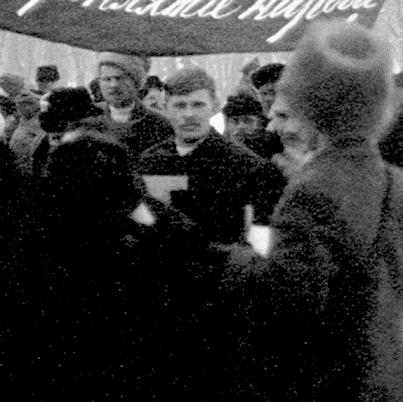



PHOTOGRAPHIC RECORDS OF THE RUSSIAN REVOLUTIONS: MYTHS AND DOCUMENTS
ERIKA WOLF
Among the extant body of photographs of the Russian revolutions of 1905 and 1917, surprisingly few images exist of such key events as the shooting of peaceful protestors on Bloody Sunday, the abdication of Tsar Nicholas II, the arrival of the Bolshevik leader Vladimir Lenin to the Finland Station, or the storming of the Winter Palace. Plausible explanations immediately come to mind: the events occurred during seasons or under light conditions not conducive to photography; some were clandestine matters hidden from view; and the rewriting of revolutionary history during the Soviet period led to the alteration, repression, and destruction of visual documents. Yet a more likely reason is that Soviet images have shaped popular memory of the revolutions. Soviet propaganda, including visual art and lm, created a rich iconography that continues to in uence expectations of photographic records of the revolution—and has o en been confused for documentation of historical events. For example, while photographs exist of the labor unrest that led to Bloody Sunday (January 9, 1905) and the stationing of mounted troops to guard the Winter Palace, there are no known documentary images of the shootings.1 In 1925 the Soviet lm Ninth of January reenacted the shooting, and a still from this lm began to be published as a documentary image in the late 1920s ( g. 1). Both this still and lmed reenactments of Bloody Sunday continue to be mistaken for or misrepresented as historical records today. For example, a 2020 video about Bloody Sunday on the authoritative website the History of Russia in Photographs employs extensive
UNKNOWN POSTCARD OF A PEACEFUL DEMONSTRATION ON DECEMBER 17 IN PETROGRAD (DETAIL), 1917
1
While the Gregorian calendar was rst adopted in parts of Europe in the eighteenth century, the Julian calendar was employed in Russia until February 1918, by which point the “old” and “new” style dates di ered by thirteen days. For example, the start of the October Revolution took place on October 25, 1917, which was November 7 in the “new style” Gregorian calendar. As the events discussed in this essay occurred in Russia before this reform, the dates are given in the “old style.”
219/
is website is a project of the Moscow Multimedia Art Museum, a prominent Russian photography institution. See https://russiainphoto.ru /video-exhibitions/100
unidenti ed reenactment footage, includes just a few photographs related to the actual event, misrepresents other historical photographs, and is sympathetic to Nicholas II.2 Similarly, we may not readily recognize images that document revolutionary developments, as their iconography or format o en do not conform to popular expectations. e Bolshevik leaders who would later be celebrated (or suppressed) due to their role in revolutionary events were largely invisible during 1917 , while revolutionaries aligned with other groups later disappeared from the political pantheon. One compelling image in this regard is a postcard portrait of the socialist- revolutionary Ivan Kaliaev, taken a er his arrest in February 1905 for detonating a bomb to assassinate Grand Duke Sergei Aleksandrovich, the tsar’s uncle (fig. 2 ). 3 Kaliaev appears head- on, his winter coat shredded and covered in splinters, accompanied by a nal letter to his mother that was written shortly before his execution. e immediacy and rawness of this image, combined with Kaliaev’s resolute and comforting last words, create a vivid portrait of a revolutionary that is in sharp contrast to the clichéd images of Soviet heroes. e Russian revolutions coincided with the golden era of the postcard, and many photographs initially circulated in this






220/
2
.
Fig. 1
VIACHESLAV VISKOVSKII THE SHOOTING OF PROTESTORS ON PALACE SQUARE ON BLOODY SUNDAY, SCENE FROM NINTH OF JANUARY , 1925
format. Photo-reporters documented the events of 1905 and 1917, yet the political orientation of publishers and government censorship led to highly selective coverage. While popular history tends to foreground individuals and speci c events, true revolutions occur due to the actions of massive groups of people. e numerous images of demonstrations, parades, and funerals should not be discounted as mere commemorative celebrations in response to historic events. ese crowds are the revolution: marginalized people occupying the streets to express their political will at the sites usually dominated by the ruling and economic elites. e violence that met them is also recorded in unexpected and highly emotive ways, as in the crisp photographic postcards of damage to buildings and domestic interiors ( g. 3 ) that eerily evoke current images of the destruction of apartments by Russian shelling in Ukraine.
THE 1905 REVOLUTION









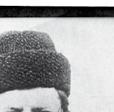
While it failed to bring an end to the autocracy, the 1905 Russian Revolution provided an important prelude to the Bolshevik success

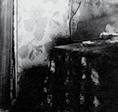


In g. 2, the text on the postcard reads: “ e nal letter to mother, 1/2 hour before death. Dear, unforgettable mother! So, I am going to die. I am happy for myself, that with complete selfcontrol I am reconciled with my end. May your grief, my dears— all of you, mother, brothers, and sisters—drown in the rays of that glory with which the triumph of my spirit shines. Farewell. Hello to everyone who knew me and remembers me. I wish you preserve the purity of the name of our father. Don’t grieve, don’t cry. Goodbye again. I am always with you. Yours I. Kaliaev.”






221/
3
Fig. 2
UNKNOWN POLICE PHOTOGRAPH OF IVAN KALIAEV, 1905
Fig. 3
ALEKSEI ZAVADSKII THE REVOLUTION IN MOSCOW FROM 1 TO 19 DECEMBER , 1905
in 1917 ; Lenin referred to the events of 1905 as a “dress rehearsal” for the October Revolution. Russia’s military failures during the Russo-Japanese War (1904–1905) fueled growing labor unrest and stimulated calls for reform and modernization. On Bloody Sunday, imperial guards opened re on a group of peaceful supplicants as they approached the Winter Palace to present a petition to Nicholas II. e shooting sparked widespread unrest and further strikes, which were somewhat mitigated when the tsar agreed to the October Manifesto, an order that provided basic civil rights and established a constitutional monarchy with an elected legislature, the Duma. However, le ist revolutionaries were not content with these measures, which were seen as further empowering elites while not addressing the problems of peasants and workers. is led to further unrest, culminating with an uprising in an industrial working-class district of Moscow in December. Organized by the Bolsheviks, Mensheviks, and Socialist Revolutionaries, this revolt was violently suppressed by government troops and e ectively brought an end to the incomplete revolution. e events of 1905 took place just as photographic illustration began to ourish due to coverage of the war and professional photoreportage was emerging in Russia. Due to censorship, however, few images of revolutionary events were published until a er the signing of the October Manifesto, when previously banned images of dead Russians, armed uprisings, and devastated cities began to be published. Before then, underground revolutionary imagery circulated in the form of photographic postcards, which could be anonymously printed in darkrooms. Collectively, the imagery from 1905 is ambivalent—a re ection of the transitional era of the illustrated press, when sketch art had not fully been replaced by photo - reportage, and of the short and dark winter days of the northern capital. Photographic postcards depicting Bloody Sunday reproduce graphics or paintings— not camera images. Numerous photographs document the a ermath of revolutionary violence: funeral processions, destroyed buildings, and damaged ships. During the Moscow Uprising, protestors posed on the barricades, emulating their revolutionary forebears during the Paris Commune. Barricades in the streets, strikes, massive demonstrations, thousands turning out for funerals—this is the stu of revolution, people taking to the streets to demand and bring about change.
THE FEBRUARY REVOLUTION
e 1917 revolutions began in response to the domestic problems arising from the First World War, when food and fuel shortages led to labor unrest and threats of mutiny. As with the earlier Russo-Japanese
222/
War, Nicholas II’s incompetence led to widespread rejection of autocracy. e center of the revolution was the imperial capitol Petrograd (today Saint Petersburg; the city’s name was Russi ed from 1914 to 1924 ), which was also the country’s main center for the press and photography. e revolution was ignited on International Women’s Day (February 23), when women workers in Petrograd were joined by women looking for bread. Despite attempts to disperse the crowds, the protests grew each day and became bolder, culminating in street ghting as mutinous soldiers and sailors joined the demonstrations.
e Petrograd Soviet (Council) of Workers and Soldiers was established, and the Duma moved to establish a Provisional Government with the consent of the soviet. On March 2, these events culminated in Nicholas’s abdication, which ended the autocracy. e February Revolution was fomented by mass demonstrations on the streets led by soldiers, urban workers, and women, who were joined by members of the middle class. However, the new government was oriented toward the elites—the nobility, aristocracy, and business interests. From the outset tension existed between the Provisional Government and the populist grassroots soviets, and this fueled further unrest.
e Provisional Government failed to leave the war, which led to spontaneous uprisings, protests, and mutinies across the empire. e Bolsheviks were just one of the many political parties that arose during this turmoil, but their slogan calling for “peace, land, and bread” attracted many adherents a er Lenin’s return from European exile in April. Inspired by the Bolsheviks, soldiers and workers sought to seize control from the Provisional Government during violent armed demonstrations at the start of July. While the Bolshevik leadership did not openly support the protestors, public opinion turned against their party, and Lenin was forced into hiding, where he continued to lay the groundwork for the eventual overthrow of the Provisional Government in October.
e February Revolution and its a ershocks were the subject of extensive photographic documentation, a reflection of the expansion of Russian photojournalism since 1905 and the easing of press restrictions a er the collapse of the autocracy. e illustrated press provided significant photographic reporting on events, although mainstream publications were already aligned with the Duma before February and thus supported the Provisional Government. As with 1905, the masses of people taking to the streets and e ecting political transformation is a key motif, as seen in a postcard of mutinous soldiers demanding action from Duma deputies at the Tauride Palace on February 27 ( g. 4). Numerous photographs document the mass demonstrations in Petrograd and elsewhere: the funeral processions for victims of the February revolts and their mass burial in a common
223/
grave on March 23, the women’s rights march on March 19, and the international May Day celebration on April 18. e documentation of these events was undertaken by the Russian capitol’s leading photoreporters, including Viktor Bulla, Piotr Otsup, and Iakov Shteinberg.
Bulla’s photograph of people eeing a er Provisional Government troops opened re on demonstrators in the center of Petrograd on July 4 is arguably the most enduring and iconic photograph of the 1917 revolutions (pp. 70–71). Taken from the roof of the Bulla Photo Studio at 54 Nevsky Prospect at the intersection with Sadovaya Street, this image records mass panic a er machine guns began ring on the protestors. e scene takes place against the backdrop of an enduring cultural landmark of the city: the Public Library established by Catherine the Great as an institution of the Enlightenment. While it soon became an iconic image, it did not appear in the illustrated press at the time of the event, when coverage of the July Days largely castigated the protestors and the Bolsheviks.




Later the photograph was widely published in the Soviet Union, appearing anonymously for half a century due to the fate of the photographer and his family. Viktor was the son of Karl Bulla, a Prussian who moved to Saint Petersburg as a child, learned photography, and established a studio that was patronized by the imperial court. In 1886, the Russian Ministry of Internal A airs granted Bulla permission to freely photograph in public places around Saint Petersburg, enabling


224/
Fig. 4 VIKTOR BULLA THE REPRESENTATIVE OF THE STATE DUMA M.V. RODZIANKO [MARKED WITH AN X IN THE CENTER] GREETS THE ARRIVAL OF MILITARY FORCES, TAURIDE PALACE , FEBRUARY 27, 1917
him to encyclopedically document the city and its happenings while he established himself as a pioneering photo-reporter. Karl retired to an Estonian island in 1916, a er which his sons Viktor and Aleksandr ran the family studio. Viktor rst came to prominence as a war reporter during the Russo-Japanese War, where he learned to shoot under re— an experience that prepared him well for documenting 1917. For decades the July 4 photograph was published without attribution in the Soviet Union due to the repression of both brothers. Aleksandr was arrested in the late 1920s and subsequently photographed the construction of the White Sea Canal as a forced laborer, while in 1938 Viktor was arrested and shot a er being reported by one of his colleagues during the Great Terror. eir German origins, the imperial patronage of the family business, and the father’s emigration led to their repression. Nothing was written or published about the Bullas from the 1930s until the late 1980s, although many of their documentary images were valued as iconic historical records. Fortuitously, Viktor deposited more than one hundred thousand negatives in the Central State archive of Cine-photo-phono Documents of Saint Petersburg several years before his arrest, thus preserving the family’s body of work. In the immediate a ermath of July 4, Bulla’s photograph of the brutal repression of pro -Bolshevik protestors was not published in the press, which supported the Duma and Provisional Government, yet it soon began to circulate in Petrograd in the form of photographic prints and postcards—and it even attracted attention from the international press. In September Bulla’s photograph illustrated an account of the July Days in the French magazine L’Illustration. e caption noted, “ is photograph is of astonishing truth and movement, and many people in Petrograd keep a copy of it as a souvenir of a tragic day.”4 A few days before the October Revolution, the progressive yet anti-Bolshevik Moscow illustrated magazine Iskry (Sparks) reported on the publication of the image in France and reproduced the very image from L’Illustration, along with negative commentary about the Bolsheviks. 5 A decade later, Bulla’s photograph inspired Sergei Eisenstein’s reenactment of the shooting in the lm October (1928). Several sequences of the crowd on the street are shot from a roo op at the same intersection and employing the same basic angle, montaged with sequences shot at the street level and close-ups of a machine-gunner. Eisenstein’s montage sequence is a creative meditation on the photograph, which fully imagines the horror of the event and captures the source of terror that is not evident in the original. Considering the lm October more broadly, the larger body of documentary photographs of the February Revolution shaped Eisenstein’s representation of the crowds and demonstrations. e lm is dedicated to the city’s “proletariat, the rst creator of October” in the
4 L’Illustration, no. 3890 (September 22, 1917): 20–21
5 Iskry, no. 41 (October 22, 1917): 326. It was also published in Solntse Rossii [ e sun of Russia], no. 381-23 (September or October 1917): 8–9. See Christopher Stolarski, “ e Rise of Photojournalism in Russia and the Soviet Union, 1900–1931” (PhD diss., Johns Hopkins University, 2013), 99.
225/
6 Alison Rowley, Open Letters: Russian Popular Culture and the Picture Postcard, 1880–1922 (Toronto: Toronto University Press, 2013), 208, 231
7 Stolarski, “Rise of Photojournalism,” 220–21.
opening credits. Yet the lm also invented mythological images of the Bolshevik leadership, such as the scene of Lenin’s arrival at the Finland Station.
An illegal party used to operating underground, the Bolsheviks kept a low pro le and o en concealed their identities during 1917. Lenin and other Bolshevik leaders were largely absent in the illustrated press, except when they were demonized as criminals or internal enemies, o en equated with Jews. While the Bolsheviks produced revolutionary postcards in response to 1905, the dominant imagery concerned state violence conveyed through such subjects as funeral processions. Only in 1918, a er the October Revolution, were revolutionary heroes or leaders promoted.6 Accordingly, an anonymously published postcard portrait of Lenin that was circulated in 1917 is based on a mugshot taken by the Okhrana (the secret- police force of the empire) around January 1896. e mugshot was published in August 1917 with the photo-story “Lenin and Co.” in the magazine Iskry, part of the negative press coverage that sought to implicate the Bolshevik leadership in a conspiracy and blame them for the violence of the July Days.7 While this seemingly ambivalent image might be read as a respectful portrait of the Bolshevik leader, the foregrounding of his legal name (Ulianov) instead of the nom de guerre he had employed since 1901 suggests that it was published as an anti-Bolshevik document of Lenin’s criminality.
THE OCTOBER REVOLUTION AND THE STORMING OF THE WINTER PALACE
With conditions continuing to deteriorate during 1917 , strikes and peasant uprisings threatened the stability of the Provisional Government. While the Bolsheviks were not prepared to seize power in July, they resolved to do so in October a er extensive preparatory work. A er Aleksandr Kerensky’s government moved to shut down the planned insurrection, the Bolsheviks led an armed uprising against the Provisional Government. ey methodically seized control of transportation and communication, culminating in the storming of the barely defended Winter Palace on the night of October 25 . In e ect, the October Revolution was a coup, a seizure of power by a revolutionary political party backed by popular mass movements of peasants, soldiers, and workers. A er the arrest of the Provisional Government in the Winter Palace, proclamations were issued that gave the land to the peasants and ended the war, thus ensuring the popular success of the coup.
226/
e body of images of October is anticlimactic in contrast to earlier photographs of the Russian revolutions. is may be explained by miserable autumn weather and the nighttime assault that led to the arrest of the Provisional Government. Despite the massive waves that the storming of the Winter Palace subsequently generated, it was not much of an event, merely a barely contested seizure of power from a nonfunctional government that had never received broad popular support. Once the Bolsheviks were in power, the event was mythologized and transformed into a mass uprising. e most iconic photograph of the storming of the Winter Palace was taken during a theatrical mass reenactment staged by the theater director Nikolai Evreinov with a cast of thousands on its third anniversary in 1920. 8 Confusion also surrounds this image, which has been mistaken both for an actual photograph from October 1917 and for a still from Eisenstein’s October (1928).
While the 1920 image captures the mythmaking that took place a er the events of October, it is simultaneously a document of the revolution. Taking place during the Russian Civil War (1918–1922), the reenactment that produced the photograph was a further event in the revolution initiated in 1917. During a time of food and fuel shortages, a mass of poorly clothed people su ering from extreme deprivation ran with all their strength across Palace Square. As a demonstration of belief in the revolution and the commitment to complete it, this was a remarkable mass event in which people took to the streets and squares. As such, the resulting image encapsulates the di culty and even futility of untangling mythology from documentation in photographs from the Russian revolutions. 8
227/
Inke Arns, Igor Chubarov, and Sylvia Sasse, eds., Nikolai Evreinov and Others: “ e Storming of the Winter Palace” (Zurich: Diaphanes, 2016).





PHOTOGRAPHY OF REVOLUTIONS IN SPAIN (1854–1909)
BERNARDO RIEGO
ese days we are used to events in real time generating vast quantities of visual documentation, but this is a phenomenon that rst took root in the nineteenth century. Its emergence required, to begin with, a newspaper- based free press that divulged news of occurrences in illustrated form. ese illustrations were o en based on photographic sources, photography’s apparent veracity underpinning the sense that readers were being treated to an indisputable account of events. As mass society began to form in the late-nineteenth and early twentieth centuries, improved photoengraving techniques created new narrative possibilities as technological advances brought printed magazines, the cinematograph, and illustrated postcards to the viewing public. Meanwhile, Spanish liberal society experienced a series of transformative events, ranging from the Spanish Revolution of 1854 to the Semana Trágica (Tragic Week) of 1909. Such landmark moments, placed in their proper historical context, can be instructive in considering the role images play in revolutions and how photography serves as a powerful narrative device.
e rst revolution to have been extensively documented graphically in Spain is the 1854 revolution in Madrid. e development of a “liberal” society in Spain seemed to be under threat from Queen Isabella II’s reign and in uential conservative gures who did not see eye to eye with liberal causes; “progressives,” meanwhile, tended to counter establishment force with military pronouncements. Discontent hardened across various sections of the political elite just as Spanish press barons were trying out the latest European news model by inserting images into their publications. Ángel Fernández de los Ríos, editor of La Ilustración, published a series of images of the revolution over the
229/
ENRIC CASTELLÀ SCENE OF THE TRAGIC WEEK IN BARCELONA (DETAIL), FROM LA ACTUALIDAD , AUGUST 28, 1909
1 UNKNOWN FIRST GRAPHIC REPORT OF A REVOLUTION IN SPAIN, FROM LA ILUSTRACIÓN , AUGUST 21, 1854






course of several weeks ( g. 1).1 By describing the illustrated scenes, and through the clever use of captions—the ideological anchor Roland Barthes would speak of many years later—the magazine established a well-arranged narrative that placed the reader rmly on one side of the con ict. Photography had begun to use the glass plate in 1854, a technique that would eventually render the daguerreotype obsolete, but the new process could not yet capture scenes involving movement with the same agility as an illustration based on a pinhole photograph transferred onto a woodblock engraving.


FROM THE 1854 REVOLUTION TO THE PARIS COMMUNE, VIA THE OVERTHROW OF ISABELLA II
For more on the early development and use of images in the free press, see Bernardo Riego, La construcción social de la realidad a través de la fotografía y el grabado informativo en la España del siglo XIX (Santander: Universidad de Cantabria, 2001).
Some people chose to view the 1854 revolution as a Spanish echo of the so-called Springtime of the Peoples, a vast European revolutionary movement that began in France in 1848 and took hold in Germany, Austria, Hungary, and Italy. at it spread so quickly was primarily a consequence of the development of the railroad, the telegraph, and the printed press, although the uprising was also the rst major reaction to absolutist—and European security—restrictions imposed at the Vienna Congress of 1815 following the defeat of Napoleon. at said, the demands made by Spanish revolutionaries prized development of
230/
1
Fig.
the national liberal regime over any structural overhaul of the political system. Visually, what remains of the 1854 revolution today is an interesting array of sketched scenes from the era’s illustrated press, but events themselves had immediate photographic consequences: Isabella II’s tour of Spain, undertaken from 1858 to 1866, was designed to bring her closer to society and to use photography to court public opinion, a strategy that can be understood only in light of the revolutionary scenes witnessed and depicted in Madrid a few years earlier.2
e revolution prompted several years of unprecedented modernization, best re ected in public building projects, the development of the railroad, and the extension of the telegraph line. But from around 1865 an economic crisis of major proportions, caused by the so-called railroad bubble, brought renewed strain, and Isabella II’s reign nally ended in 1868. roughout this time the printed press continued to structure its news coverage around illustrations. Many of these were based on photographs taken in the eld and sent to the national illustrated magazines, but the news narrative—by then well developed and understood by readers—continued to be sketch-based. Some of the photographic images of what would come to be known as the “Glorious Revolution” were taken in Santander by one of the rst photographers to set up shop in the city, a man named Amadeo Courbon ( g. 2–3). He worked assiduously for the Madrid press and captured a scene of a military unit setting up barricades at Puerta de la Sierra, right beside his studio. Courbon’s images later found their way into municipal photo albums documenting the history of the city, but the original plates and his entire archive were lost in a devastating re that engulfed Santander in 1941. Poor-quality copies subsequently circulated, becoming ever harder to nd.
e six years that followed the 1868 revolution witnessed a signicant political modernization of Spanish society. It was a time when public freedoms grew, the rst attempts at universal male su rage were tried—beginning in 1869 but with no great success given the lack of a key ingredient: parties of the masses—academic freedom took shape, and a bourgeoise monarchy modeled on the July Monarchy of Louis Philippe I, the French king who witnessed the birth of photography, was installed in the form of Amadeo I. By 1873 the experiment had run its course, and the First Spanish Republic was declared, tried out in two versions, then consigned to the history books as the epilogue to a tumultuous period resulting in the Bourbon Restoration: Alfonso XII took the throne, with Antonio Cánovas del Castillo shaping the government. But times had changed since the previous monarchy, and great pragmatism underpinned a general awareness that Spain’s power had waned: it was experiencing the social changes and technological advances that were transforming life across the Western world, but it
2
For more on Queen Isabella II’s travels through Spain a er the revolution of 1854, see Bernardo Riego, “Imágenes fotográ cas y estrategias de opinión pública: Los viajes de la Reina Isabel II por España (1858–1866),” Reales Sitios, no. 139 (1999): 2–13.
231/
For a pioneering documentary study of the use of propaganda in French politics in the nineteenth century, see Donald E. English, Political Uses of Photography in the ird French Republic, 1871–1914 (Ann Arbor: UMI Research Press, 1984), esp. 21–79 (on the Paris Commune).
4
For more on the subject, see Riego, La construcción social, 363–66.
sat on the margins of international struggles and disputes. e six-year period of democracy, while short-lived, was nevertheless a fruitful, turbulent, and eventful time for the illustrated press. Highlights included the latest Carlist uprising and the Cantonalist insurrection in Cartagena in 1873, which marked the beginning of the end of the political experiment the country had embarked on by overthrowing Isabella II. Events elsewhere in Europe were likewise showing how revolutionary images could serve as new forms of propaganda, with photography beginning to play a central role. is was certainly the case with the Paris Commune of March to May 1871, sixty days of proletarian self- rule that lled the power vacuum created by the defeat of Gallic forces in the Franco-Prussian War. Images of the Commune were published in Spain to very di erent emphases. La Ilustración Española y Americana depicted events in a highly critical fashion with dramatic illustrated displays of the Commune’s excesses, especially those of an anticlerical nature. Its later scenes were clearly inspired by the photomontages Eugène Appert produced a er the Commune’s defeat, a series of photographs that served as counterrevolutionary propaganda and were widely distributed throughout Europe.3 Other outlets, meanwhile, such as La Ilustración de Madrid used images to highlight the heroism of proletarian women on the barricades defending the revolution against the Prussian siege.
e Paris Commune’s unprecedented scenes inspired a remarkable amount of photographic activity and gave rise to a new form of propaganda: staged pictures used to exert political in uence. e apparent veracity of the photographic image had introduced a hitherto unknown element, and this at a time when the emerging popularity of cartes de visite created new means of circulation. Interest in divulging photographic evidence of the harsh treatment meted out to the revolutionaries was also considerable, but Appert’s photomontages, published as Crimes de la Commune (ca. 1872), while claiming to be accurate portrayals, skewed toward justifying repression of the movement.
Photography nally began to gain a visible presence in the Spanish press in 1885 when La Ilustración, a magazine from Barcelona, published Heribert Mariezcurrena’s rst photographic report “taken live” from the Granada earthquake. e rest of the national press covered the disaster with illustrated scenes that began to feel antiquated.4 Photoengraving appeared increasingly in the printed press and in books, and one of the de ning visual and cultural features of the Second Industrial Revolution was up and running.
232/
3
AMADEO COURBON BARRICADES AT THE PUERTA DE LA SIERRA (SANTANDER)
DURING THE SEPTEMBER 1868 REVOLUTION, 1868



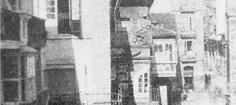


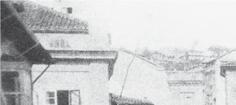


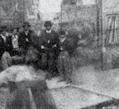
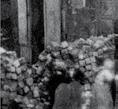









AMADEO COURBON TROOPS THAT SUPPORTED THE UPRISING AGAINST ISABELLA II, FORMED IN THE PLAZA VIEJA (SANTANDER) DURING THE SEPTEMBER 1868 REVOLUTION, 1868

233/
Fig. 2
Fig. 3
5
“Semana Trágica” in Spanish. e magazine La Actualidad, published in Barcelona, called it “La semana triste” (Sad week), in its edition of August 3, 1909.
6
For more on graphic publications and magazines, see Juan Miguel Sánchez Vigil, Revistas ilustradas en España (Gijón: Trea, 2008), esp. 75–95
7
For more on the social and cultural changes that took place in Europe in the years preceding the outbreak of e First World War, see Philipp Blom, Años de vértigo: Cultura y cambio en Occidente, 1900–1914 (Barcelona: Anagrama, 2010).
TRAGIC WEEK: A REVOLUTION WITH VISUAL CLUES OF MASS SOCIETY
Tragic Week, as events in Barcelona from July 26 to August 2, 1909, became known, is generally considered as the birth of contemporary photojournalism in Spain, which would mature with the Civil War (1936–1939).5 All the same, such an assessment requires some qualication because, although photographers such as Alexandre Merletti, Josep Brangulí, Josep Maria de Sagarra, Enric Castellà, and Frederic Ballell produced fairly modern shots of the week’s revolutionary events, graphic printing was still in its infancy and had not yet found its stride as a narrative news form. Popular magazines had begun to emerge in which, unlike with traditional periodicals and journals, photographic images took precedence over text. Titles such as Blanco y Negro, Nuevo Mundo, and Actualidades were dismissed by highbrow audiences but hugely popular with the new mass urban readership.6 at these magazines, and others established a er Tragic Week, used layouts that echoed the sequences of the nascent cinematograph, which readers would have seen in tents at fairs, is no coincidence. New audiences acquired a more sophisticated gaze in the “vertigo years” that preceded the First World War.7
A distinction must therefore be made between the images photographers produced during Tragic Week and how their work was divulged. While souvenir pull - outs with facsimiles muddy the historical waters, leading newspapers of the period such as La Vanguardia and La Veu de Catalunya did not yet publish images originating from photoengraving. Furthermore, in Barcelona newspapers were shut down for most of the week, publishing only at the beginning of the citizens’ uprising, on July 26, and again at the end, from August 1. e rst images to emerge were taken by Catalan photographers but published in Madrid- based magazines such as Blanco y Negro and Nuevo Mundo, which would later publish the striking photographs that Merletti took at Francesc Ferrer i Guàrdia’s trial, despite cameras not being allowed in the courtroom. News reports from the likes of La Actualidad, a magazine published in Barcelona, came out slightly a er the events themselves but carried an abundance of visual material from photographers who had previously worked for the magazine and who immediately grasped what a historical moment they were living through.
Images of Tragic Week show techniques indicative of a press photography with a twentieth-century mindset. ey evidence an inclination to capture the nuances of the con ict, from spontaneous participation to the clear anticlerical component, as well as a general sense of
234/
release among a working class that felt itself to be under attack: they did not consider the war (in Morocco) as theirs to ght nor consider it just that family breadwinners were being sent as reservist soldiers while wealthier conscripts could a ord to pay for substitutes. is made a mockery of the liberal claim that “the people were up in arms” at a time when the army’s reputation was already in tatters following defeat in the Spanish-American War of 1898
Another new means of visual representation had been gaining in popularity around the time of Tragic Week: the illustrated postcard. Sucesos de Barcelona (1909), a series of one hundred postcards brought out by the editor Àngel Toldrà Viazo, provides a vivid record of the urban insurrection and the damage caused. e postcards also highlight an intertextual characteristic of the use of images in modern times: while photoengraving published in the press showed scenes of the events themselves, the postcards re ected on them, serving as a visual encyclopedia that was to be collected and saved. e cinematograph, which had yet to establish its own narrative form, would soon feed o people’s increased visual sophistication and nd new technologies and platforms through which to be consumed.
235/


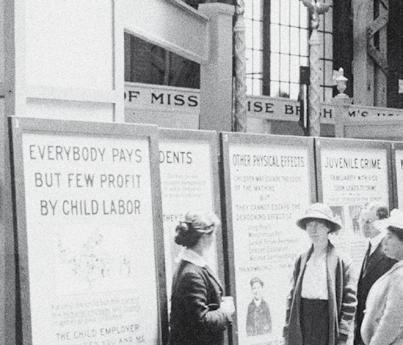



PHOTOGRAPHY: HOW THE CAMERA MAY HELP IN THE SOCIAL UPLIFT *
LEWIS HINE
For a moment, now, let us suppose that we as a body were working, against bitter opposition, for better conditions in the street trades of a certain state. In the heat of the con ict we have enlisted the services of a sympathetic photographer.
He has recorded some typical and appealing scenes in the life of the newsboy and his co-workers.
ey show little chaps six years old selling until late at night; little girls exposed to public life with its temptations and dangers; school children starting out at 5 AM to peddle and going again a er school and all day Saturday and Sunday; evening scenes where the little fellows work late in and out of the saloons, learning the best way to get extra money from the drunks, and where they vary the monotony between hard-luck stories by pitching pennies, far into the night hours.
We might not agree as to their exact use, but surely we would not stand in the way if it were proposed that we launch them into every possible channel of publicity in our appeal for public sympathy.
Long ago the businessman settled, in the a rmative, the question, “Does Advertising Pay?” and the present status was well expressed in Collier’s Weekly not long ago: “To the range of advertising there is no limit, and where all are tooting the loud bazoo, the problem of anyone making himself heard is no slight one. Advertising is art; it is literature; it is invention. Failure is its one cardinal sin.” Now, the social worker, with the most human, living material as his stock in trade, is still going through the old steps of doubt and conviction. But they must end one way, for the public will know what its servants are doing, and it is for these Servants of the Common Good to educate and direct public
*
Lecture delivered in 1909 and published in Proceedings on the National Conference of Charities and Correction at the irty-sixth Annual Session Held in the City of Bu alo, New York, June 9-16, 1909, edited by Press of Fort Wayne.
237/
SOCIAL
LEWIS HINE PHOTOGRAPH OF NATIONAL CHILD LABOR COMMITTEE EXHIBIT AT THE PANAMAPACIFIC INTERNATIONAL EXPOSITION, SAN FRANCISCO, CALIFORNIA (DETAIL), 1915
opinion. We are only beginning to realize the innumerable methods of reaching this great public.
I wonder, sometimes, what an enterprising manufacturer would do if his wares, instead of being inanimate things, were the problems and activities of life itself, with all their possibilities of human appeal. Would he not grasp eagerly at such opportunities to play upon the sympathies of his customers as are a orded by the camera.
Take the photograph of a tiny spinner in a Carolina cotton mill. As it is, it makes an appeal. Reinforce it with one of those social pen - pictures of [Victor] Hugo’s in which he says, “The ideal of oppression was realized by this dismal servitude. When they nd themselves in such condition at the dawn of existence—so young, so feeble, struggling among men—what passes in these souls fresh from God? But while they are children they escape because they are little.
e smallest hole saves them. When they are men, the millstone of our social system comes in contact with them and grinds them.”
With a picture thus sympathetically interpreted, what a lever we have for the social upli .
e photograph of an adolescent, a weed - like youth, who has been do ng for eight years in another mill, carries its own lesson.
Now, let us take a glance under Brooklyn Bridge at 3 AM on a cold, snowy night. While these boys we see there wait, huddled, yet alert, for a customer, we might pause to ask where lies the power in a picture. Whether it be a painting or a photograph, the picture is a symbol that brings one immediately into close touch with reality. It speaks a language learned early in the race and in the individual—witness the ancient picture writers and the child of today absorbed in his picture book. For us older children, the picture continues to tell a story packed into the most condensed and vital form. In fact, it is o en more e ective than the reality would have been, because, in the picture, the non - essential and con icting interests have been eliminated. e picture is the language of all nationalities and all ages. e increase, during recent years, of illustrations in newspapers, books, exhibits and the like gives ample evidence of this.
e photograph has an added realism of its own; it has an inherent attraction not found in other forms of illustration. For this reason the average person believes implicitly that the photograph cannot falsify. Of course, you and I know that this unbounded faith in the integrity of the photograph is o en rudely shaken, for, while photographs may not lie, liars may photograph. It becomes necessary, then, in our revelation of the truth, to see to it that the camera we depend upon contracts no bad habits.
Not long ago, a leader in social work, who had previously told me that photographs had been faked so much they were of no use to the
238/
work, assured [Survey] Editor Kellogg that the photographs of child labor in the Carolinas would stand as evidence in any court of law.
Moral: Despise not the camera, even though yellow-photography does exist.
With several hundred photos like those which I have shown, backed with records of observations, conversations, names and addresses, are we not better able to refute those who, either optimistically or hypocritically, spread the news that there is no child labor in New England?
Perhaps you are weary of child labor pictures. Well, so are the rest of us, but we propose to make you and the whole country so sick and tired of the whole business that when the time for action comes, childlabor pictures will be records of the past.
e artist, [Edward] Burne-Jones, once said he should never be able to paint again if he saw much of those hopeless lives that have no remedy. What a sel sh, cowardly attitude!
How di erent is the stand taken by Hugo, that the great social peril is darkness and ignorance. “What then,” he says, “is required? Light! Light in oods!”
e dictum, then, of the social worker is “Let there be light;” and in this campaign for light we have for our advance agent the light writer—the photograph.
is is the era of the specialist. [Edward] Curtis, Burton Holmes, [John] Stoddard and others have done much along special lines of social photography. e greatest advance in social work is to be made by the popularizing of camera work, so these records may be made by those who are in the thick of the battle. It is not a di cult proposition. In every group of workers there is sure to be one at least who is interested in the camera. If you can decide that photography would be a good thing for you, get a camera, set aside a small appropriation and some de nite time for the sta photographer, go a er the matter with a sympathetic enthusiasm (for camera work without enthusiasm is like a picnic in the rain). e local photographer (unless he is a rare one) cannot do much for you. Fight it out yourself, for better little technique and much sympathy than the reverse. Returns? Of course they will follow. Ask Mrs. Rogers, of Indianapolis, whose plea for bath suits (on the screen) was a real factor in procuring them. Ask Mr. Weller, of Pittsburg, one of the pioneers in social photography.
At the close of the Round Table which follows this talk, I shall be glad to meet those of you who are interested in the question of enlarging your scope in camera work. If a camera club could be the outcome, so much the better.
Apart from the charitable or pathological phases of social work, what a eld for photographic art lies untouched in the industrial world.
239/
ere is urgent need for the intelligent interpretation of the world’s workers, not only for the people of today, but for future ages. Years ago, George Eliot suggested the need for the social photographer in these words [in her novel Adam Bede]:





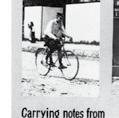


















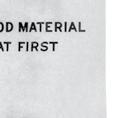
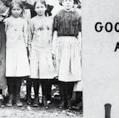



All honor and reverence to the divine beauty of form! Let us cultivate it to the utmost in men, women and children, in our gardens, in our houses; but let us love that other beauty, too, which lies in no secret of proportion, but in the secret of deep human sympathy. Paint us an angel, if you can, with oating violet robe, and a face paled by the celestial light; paint us a Madonna turning her mild face upward, and opening her arms to welcome the divine glory, but do not impose on us any esthetic rules which shall banish from the reign of art those old women with work-worn hands

240/
scraping carrots, those heavy clowns taking holiday in a dingy pothouse, those rounded backs and weather- beaten faces that have bent over the spade and done the rough work of the world, those homes with their tin pans, their brown pitchers, their rough curs and their clusters of onions.


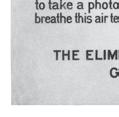























It is needful we should remember their existence, else we may happen to leave them out of our religion and philosophy, and frame lo y theories which only t a world of extremes. erefore, let art always remind us of them; therefore, let us always have men ready to give the loving pains of life to the faithful representing of commonplace things, men who see beauty in the commonplace things, and delight in showing how kindly the light of heaven falls on them.




241/ LEWIS HINE EXHIBIT PANELS OF THE NATIONAL CHILD COMMITTEE, 1913–1914




















ON SOCIAL PHOTOGRAPHY
STEPHANIE SCHWARTZ
It was like breakers upon a beach; there was new water, but the wave looked just the same.
In 1911 , Lewis Hine stood across the street from Banca Cantoni in New York and recorded a group of boys playing (p. 242 ). eir game was leapfrog. One boy a er the other jumped over a re hydrant and ran—or so this photograph helps us to imagine. We do not see the game in time. We see time stopped. We are asked to reimagine a moment or two when the city became a playground, when a re hydrant stood in for the body of a boy, the typical prop in this childhood game. Even a “mother” seems to be standing in the wings. A woman in a white blouse and long skirt completes the circle or cycle of movements that Hine’s photograph frames. e slice of a man with a rolled-up shirtsleeve marks its beginning. Wait, crouch, leap, run, and repeat—or so we can imagine.
is photograph seems out of place among the thousands that Hine made while working as a photographer for the National Child Labor Committee (NCLC) from 1906 to 1918 . No one poses. No one is lthy. e boys’ shirts are clean and white, unlike the apron of the “little spinner” whom Hine recorded at the Globe Cotton Mill in 1909 (p. 242). Likewise, their bodies are not—or not yet—broken.
ere are no maimed limbs or heavy satchels. In Leap og, New York lightness, not lethargy, prevails. With this photograph, Hine made no e ort to record the weight of the machines, architectural as opposed to industrial or nancial as opposed to physical, that engulfed the nation’s “little spinners.” ese boys spin. ey are the repetition, not consumed by it. ey are neither withered nor broken nor dirty—and, of course, they are not working. e subjects recorded may be newsboys and bootblacks. However, they are not identi ed as such. ey do not carry any props or signs that point to their labor.
243/
—Upton Sinclair, e Jungle, 1906
LEWIS HINE LEAPFROG, NEW YORK , 1911
LITTLE SPINNER IN GLOBE COTTON MILL, AUGUST, GEORGIA. OVERSEER SAID SHE WAS REGULARLY EMPLOYED , 1909
1
On Hine’s career, see Naomi Rosenblum, “Biographical Notes,” in America and Lewis Hine: Photographs 1904–1930 (New York: Aperture, 1977), 16
25. In 1908, Charities and the Commons, a philanthropic magazine publishing Hine’s work, took out an ad for “Social Photography by Lewis Hine.”
2 Lewis Hine, “Social Photography: How the Camera May Help in Social Upli ,” 1909; reprinted in the present volume, pp. 237–241. On Hine’s lecture, see Alan Trachtenberg, “Ever— e Human Document,” in America and Lewis Hine, 132–33; and Alan Trachtenberg, Reading American Photographs: Images as History, Mathew Brady to Walker Evans (New York: Hill and Wang, 1989), 190–209
3
For an overview of Hine’s work for the NCLC and the committee’s reform mission, see Verna Posever Curtis and Stanley Mallach, Photography and Reform: Lewis Hine and the National Child Labor Committee (Milwaukee: Milwaukee Art Museum, 1984).
4
Alexander Nemerov discusses the complex temporality of Hine’s photographs in Soul Marker: e Times of Lewis Hine (Princeton, NJ: Princeton University Press, 2016).
5
For a study of how Hine framed his subjects and how he conceived of the face as a frame, see Jaleh Mansoor, “Making Human Junk,” in Sensible Politics: e Visual Culture of Non-governmental Activism, ed. Meg McLagan and Yates McKee (New York: Zone Books, 2012), 81–93.
6
See, for example, Mansoor, “Making Human Junk,” 88.
Leapfrog, New York may be an exception. It may evidence a moment when Hine needed a break from his job recording the brutalities of an economic system committed to rapid industrialization and pro t. My concern in this essay, however, is not with Hine or his needs. It is with the characterization of his photographs as “social,” as social photography. is is Hine’s word. He began using it around 1908 , the year he secured a permanent post as a photographer for the NCLC, an organization dedicated to surveying and publicizing the ills of child labor.1 In a session devoted to “Press and Publicity” at the annual meeting of the National Conference of Charities and Correction in 1909, Hine delivered a slide lecture entitled “Social Photography: How the Camera May Help with Social Uplift.” Narrating his photographs, Hine argued for photography’s status as an essential instrument in “our appeal to public sympathy.” With a picture “sympathetically interpreted,” he explained, “what a lever we have for social upli .”2 e directional logic of Progressive Era reform is embedded in Hine’s work. e more than ve thousand photographs he shot during the twelve years he traveled between coal mines in West Virginia and canneries in Mississippi do “li up.”3 e bodies of the children are just weathered enough. e photographs and their detailed captions, o en itemizing a child’s age, height, weight, and wage, suggest to those reading and looking that they are not too late.4 ere is potential for reform, and there is a human face. 5 e “little spinner” in the Globe Cotton Mill is made to appear far away— diminutive—but she looks up and out of her frame. Despite the cage that holds her back, she still looks back at us.
e transformation of a subject into a human being through the organization of a reciprocal gaze has come to de ne social photography as much as its politics. In most accounts, establishing this de nition entails placing Hine’s photographs alongside those produced by the muckraking journalist Jacob Riis.6 A little over a decade before Hine decided that the camera was an essential instrument of social work, Riis began using photography to construct spectacular narratives about how “the other half” lives.7 Unlike Hine, Riis did not a ord his subjects the opportunity to look back or to be present before the camera.8 In many of Riis’s photographs, as we see in his view into an “All-night,” “two-cent” restaurant in downtown New York, heads are down, faces are blocked ( g. 3). Shot across a table, which juts into the frame, the
7
Jacob Riis, How the Other Half Lives: Studies among the Tenements of New York (New York: Charles Scribner’s Sons, 1890).
8
On Riis’s working method, see Sally Stein’s foundational essay “Making Connections with the Camera: Photography and Social Mobility in the Career of Jacob Riis,”
A erimage, May 1983, 9–16. Stein, too, compares Riis’s record to Hine’s, though her point is that the comparison is problematic. is is because Riis was not a photographer.
244/
–
space appears like a vise. It seems to be closing in or clamping down on one too many prostrate bodies. Light, which is what Hine required, is absent from these photographs. Quoting Victor Hugo in his 1909 lecture, Hine admitted that when “the great social peril is darkness and ignorance . . . ‘Let there be light;’ and in this campaign for light we have our advance agent the light writer—the photograph.”9 e di erences between these records are apparent. Hine’s photographs li up—even enlighten—and Riis’s push down. Hine’s records gure the possibility of belonging and Riis’s the realities of di erence. Or, one record facilitates the telling of a story about the horror or heroism of the other. What if we dispense with this binary? What, to be more precise, if we dispense with a history of photography that accounts for—counts on—the presence or absence of a human face? In posing these questions, I do not want to deny the importance of the face as a social frame or as a means of socialization. Dispensing with the binary, in short, does not mean dispensing with the face or even the gaze. It means questioning the dialogical structure of our histories 9 Hine,




































245/
“Social Photography.”
Fig. 3 JACOB RIIS AN ALL-NIGHT TWO-CENT RESTAURANT, IN “THE BEND,” FROM THE OTHER HALF AND HOW THEY LIVE , CA. 1890
10
On some of the problems with this argument, see Blake Stimson’s brief discussion of social photography in e Pivot of the World: Photography and Its Nation (Cambridge, MA: MIT Press, 2006), 43–56.
11
See, for example, Abigail Solomon-Godeau’s account of the emergence of American documentary, “Who Is Speaking us? Some Questions about Documentary” (1986), in Photography at the Dock: Essays on Photographic History, Institutions, and Practices (Minneapolis: University of Minnesota Press, 1991), 169–83
12
See Marta Braun, Picturing Time: e Work of EtienneJules Marey (1830–1904) (Chicago: University of Chicago Press, 1992), 320–48. See also Anson Rabinbach, e Human Motor: Energy, Fatigue, and the Origins of Modernity (Berkeley and Los Angeles: University of California Press, 1992), 84–119
13
Stanley Mallach discusses this aspect of the NCLC platform in “Child Labor Reform and Lewis Hine,” in Photography and Reform, 13–29
14
Frederick Winslow Taylor used this word in his writings; see e Principles of Scienti c Management (1911; New York: Harper and Brothers, 1919).
of social photography: the back-and-forth between the desire for or the negation of the all-too-human, not-human-enough face.10 e structure is pervasive, or has been since the 1980s, when photography’s history was rewritten to condemn the American documentary project, when, that is, the framing of a face as human came to be associated with the logic of liberalism and its reinvention.11 In this light, social photography is either celebrated or denigrated as a means of humanization. It is either good or bad politics. I want to sidestep this binary. More to the point, I want to release Hine’s work from it. at Hine wanted humanity to emerge from his records—to rise out of or escape his photographs—is beyond doubt. However, whether that leap requires our recognition is worth questioning. Is the potential of Hine’s record in the subject or the social? Is it in the face or the photographs?
When Hine stood across the street from a monument to nancial capital and photographed a group of boys making a playground of the city, he was not taking a break. He was making a record of industrialization in its most capacious form. Leap og, New York is a record of group work. On the street as much as in the frame, the four boys become one. ey are synced, literally and guratively. Instead of several boys running and jumping, Hine’s photograph allows us to imagine that we are seeing one boy cycling through the game’s motions. e white shirt and dark trousers repeat, creating the impression of a single body in motion—as if we are seeing Hine’s rendition of Étienne -Jules Marey’s jumpers. As in the many photographs of athletes and soldiers that the French physiologist made in the 1880 s, in Leap og, New York a body’s physical movements are offered up for dissection and delectation. Comparisons between parts become possible, as do adjustments or corrections. Maximizing a body’s e ciency—at work, at war, and at play—was the remit of Marey’s chronophotographs and the NCLC.12 Child labor, the committee’s founding members repeatedly argued, is unethical, immoral, and ine cient.13 Adults simply work “better,” to borrow the parlance of the day.14 eir work maximizes the potential for future work and, accordingly, a better future for the nation.
Leap og, New York reminds us that everything is rationalized: work, play, and life. It reminds us that in the records of the new century’s scientists, scienti c managers, and social workers, life was no longer deemed a “light,” an expression of a vital force or a soul. Instead, it was characterized as a motor force, which like other forces—other bundles of energy—needed to be spent and conserved. Photography visualized this transformation; provided its evidence and representation. In photographic plates, bodies were recorded to be counted or tallied. Likewise, gestures were isolated to be adjusted and corrected.
246/
e whole was rendered as its parts, though not of a body but a workforce. at is, the repetition that photography provided allowed for the rendering of all bodies as potential workers and all workers as potentially one among the yet - to - be - counted many. Here, I am describing not only Marey’s photographs or the graphics of various scientists attending to the rede nition of what counted as life under new regimes of waste management.15 Hine, too, made labor a physiognomy, instead of a physiognomy of the laborer. During the twelve years he worked for the NCLC, he compiled an archive of postures and poses, of comportment. In one frame a er the next, children brace and bend, sit and sort (berries or beans or bobbins). In one page a er the next, in the mountain of publicity that the NCLC ran with Hine’s photographs, children stand and wait, pull and push.16 Hine’s record is shocking because it is overwhelming. ere are simply too many bodies, too many faces. His record makes for comparisons, not a conversation among equals.
e face was important, but it was not or no longer singular. It was no longer a face. e avalanche of records, or the record as an avalanche, refused the promises and pleasures of singularity. Paul Strand, Hine’s student, understood this.17 In 1916, Strand made his own series of faces. Unlike his teacher, Strand did not announce himself to his subjects or ask if he could photograph them. He attached a lateral view nder to his camera and shot them on the sly. He—or his lens—got close up. It captured men and women working, selling newspapers and carrying sandwich boards, as well as sitting and waiting or just watching (pp. 79–80). e juxtaposition of working and waiting is signi cant and made apparent on the pages of Camera Work, the journal in which Strand’s photographs rst circulated as photogravures in 1917. e yawning woman and the man with the bowler hat also become the gures of our record of labor, even though we do not name them as such. Naming, in fact, is the subject of Strand’s physiognomy. Strand’s photographs empty the subjects recorded of representation as subjects by asking readers to see and enact how subjects are made through representation, through language and categorization. Strand, a er all, did not designate the woman selling newspapers as a “blind woman.” He did not give this photograph that title—Blind Woman. Likewise, he did not name the man with the sandwich board a “sandwich man.” We do that. We con gure the gure. We organize social relations. We make these photographs gure representation and identity. We do this not despite but because all of Strand’s portraits appear in the pages of Camera Work with the same title—or as “a photograph.” e photograph of the women selling newspapers is titled Photograph—New York, so is the photograph of women yawning, and the photograph of the man in the bowler hat, and so forth. ey are
15
For this history, see Elspeth Brown, e Corporate Eye: Photography and the Rationalization of American Commercial Culture, 1884–1929 (Baltimore: Johns Hopkins Press, 2005).
16
As Mallach notes, the NCLC’s “engines of publicity were rarely at rest.” In its rst year, the committee’s publicity o ce put out “nearly two million pages of printed matter and a large amount of information for the nation’s newspapers.”
See Mallach, “Child Labor Reform and Lewis Hine,” 19
17
Strand attended the Ethical Cultural School in New York, where Hine taught geography and nature study. Hine introduced Strand to photographic culture writ large and, more speci cally, to Alfred Stieglitz’s PhotoSecession. Strand visited the photographer’s 291 gallery with Hine’s class in 1907. See Trachtenberg, “Ever— e Human Document,” p. 119.
247/
18 is reading of Strand’s photographs sits at odds with most accounts of this work, which xate on the newspaper seller’s blindness and the photograph’s status as a record of an individual pitched against the “deadening routines of industry.” See Mark Whalen, “ e Majesty of the Moment: Sociality and Privacy in the Street Photography of Paul Strand,” American Art 25, no. 2 (Summer 2011): 34–55
19
is is Hine’s term. See Daile Kaplan, Lewis Hine in Europe: e Lost Photographs (New York: Abbeville Press Publishers, 1988), 9
20
Lewis Hine, quoted in Peter Seixas, “Lewis Hine: From ‘Social’ to ‘Interpretive’ Photographer,” American Quarterly 39, no. 3 (Autumn 1987): 386. is exchange references the publication of the photographs of immigrant labor that Hine shot for the Pittsburgh Survey in 1908
21
Seixas, “Lewis Hine,” 386
22
Walter Benjamin, “A Small History of Photography,” in One Way Street and Other Writings, trans. Edmund Jephcott and Kingsley Shorter (London: Verso, 1979), 251.
made to appear as one among the many, as subjects in and of a series.18 ey are records, not persons.
Strand’s photographs were made and printed to negotiate the difference between a part and a whole, between the speci city of photography and the generality of a caption or words. is is also what Hine was doing with the archive of photographs that he worked into “photo stories” for NCLC lea ets and Survey, the philanthropic journal that published his editorials and NCLC propaganda.19 A er all, when Hine was accused of encroaching on the privacy of his subjects, an accusation also leveled at Strand, he did not deny the charge. He simply questioned its “super cial and sentimental reasoning.”20 Swap the captions, Hine suggested. Let photographs from Boston document working conditions in Milwaukee.21 It will not matter; more to the point, the photographs will still do their social work. e parts—the faces, the details—are interchangeable. Privacy, as Strand’s photographs also suggest, is an invention of individualization. It is simultaneously made and undone with a photograph of a face.
Social photography registers this doubling. In turn, it refuses to take sides, to either celebrate or denigrate, even or especially when it devastates. Take the photograph of the sooty face of Vance, a trapper at work in a West Virginia mine ( g. 4). is record is startling, though not—or not only—because it is horri c. It is startling because it lets Vance scream. is boy is making his demands: “Shut this door. at means you.” Vance is not speaking to us; he is speaking to other miners. You can socialize, if you let go of the need to moralize. You can socialize if, as Walter Benjamin suggested in his account of the fact that photography cannot “renounce” people, you attend to the “illumination of detail.”22 Let them pile up, and let the intimacies go. Allow the record to lessen—even lighten—the social weight of the face. Allow it to write another history of documentary.
248/
VANCE, A TRAPPER BOY, 15 YEARS OLD. HAS TRAPPED FOR SEVERAL YEARS IN A WEST VA. COAL MINE. $.75 A DAY FOR 10 HOURS WORK. ALL HE DOES IS TO OPEN AND SHUT THIS DOOR: MOST OF THE TIME HE SITS HERE IDLE, WAITING FOR THE CARS TO COME. ON ACCOUNT OF THE INTENSE DARKNESS IN THE MINE, THE HIEROGLYPHICS ON THE DOOR WERE NOT VISIBLE UNTIL PLATE WAS DEVELOPED. LOCATION: WEST VIRGINIA , 1908



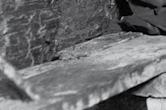












249/
Fig. 4 LEWIS HINE
STEVE EDWARDS
is professor of the history and theory of photography at Birkbeck, University of London. His publications include e Making of English Photography, Allegories (2006), Photography: A Very Short Introduction (2006), and Martha Rosler: e Bowery in Two Inadequate Descriptive Systems (2012). He is the chair of the editorial board for Oxford Art Journal and is an editorial member for the Historical Materialism book series.
JOSH ELLENBOGEN
is associate professor of art history at the University of Pittsburgh. He specializes in the history of photography, art historiography, scienti c imaging, and theory of representation. He is coeditor of Idol Anxiety (2011), an interdisciplinary collection of essays on idolatry, and the author of Reasoned and Unreasoned Images (2012), a study of nineteenthcentury scienti c photography.
DUNCAN FORBES
is head of photography at the Victoria and Albert Museum. He was previously director of Fotomuseum Winterthur and senior curator of photography at the National Galleries of Scotland. Essays by him have appeared in Camera Austria International, Trigger, ZUM, and History Workshop Journal. His latest book publication is An Interview with Lewis Baltz (2020).
LEWIS HINE
was an American photographer, reformer, sociologist, and educator. He is widely recognized as a precursor to modernist and documentary photography. One of his best-known projects is the photographs he took for the National Child Labor Committee from 1908 to 1924. He also portrayed immigration, New
York City, and the construction of the Empire State Building.
PAUL MELLENTHIN
has worked internationally as a photo curator and received grants from such institutions as the Research Institute eikones and the Getty Research Institute. Since 2021, he has held a postdoc fellowship in the arthistorical research group Images of History in Contemporary Art at the University of Potsdam. His main research interests are historiography, archives, memory, and visual cultures from the nineteenth century until today.
ANNE DE MONDENARD
Anne de Mondenard is a curator responsible for the Photography and Digital Images Department at the Musée Carnavalet—Histoire de Paris. She specialized in the history of photography a er training at the École Louis Lumière and the École du Louvre. Author of numerous books and articles, she has curated several exhibitions exploring the history of photography from new points of view.
INÉS PLASENCIA
is a researcher, teacher, and writer. Her main lines of work are the history and theory of photography, the visual culture of Spanish colonialism and its legacies, and the crossovers between the di erent structures of exclusion applied to art and the contemporary image. She works as an independent curator and cultural manager and is an associate professor at the Universidad Autónoma de Madrid.
MICHAEL PONSTINGL
is an editor, curator, and art historian. From 2000 to 2010 he was curator of photography at the Albertina, and since 2014 has been a research associate at the Photoinstitut Bonartes in Vienna. His publications include Street Life in Vienna: Photographs
250/
om 1861 to 1913 (2008), Wien im Bild: Fotobildbände des 20 Jahrhunderts (2008), and Geschä e mit Kopien: Der “Fotogra sche Kunstverlag Otto Schmidt” (2022).
JORGE RIBALTA
is an artist, researcher, editor, and independent curator. At the Museo Reina Sofía he has curated the exhibitions A Hard, Merciless Light: e Worker Photography Movement, 1926-1939 (2011) and Not Yet: On the Reinvention of Documentary and the Critique of Modernism (2015).
BERNARDO RIEGO
is professor of new technologies and audiovisual communication at the Universidad de Cantabria. He has written about photography and its social and cultural impacts. His published books include La introducción de la fotografía en España: Un reto cientí co y cultural (2000) and La construcción social de la realidad a través de la fotografía y el grabado informativo en la España del siglo XIX (2001).
STEPHANIE SCHWARTZ
is associate professor of the history of art at University College London. She is the author of Walker Evans: No Politics (2020) and the editor of “Modernism a er Paul Strand,” a special issue of the Oxford Art Journal (2015). Her writing on lm and photography has appeared in October and ARTMargins
JACOB RIIS
was a photographer, social reformer, and journalist. He was one of the rst photographers to use ash powder to illuminate his images of slums and their conditions in New York City. Most of these images were published in his book How the Other Half Lives (1890).
ALLAN SEKULA
was a photographer, essayist, and professor at the California
Institute of the Arts. His writings and photographic work were rst collected in the book Photography against the Grain (1982). Later books include Fish Story (1997), Dismal Science (1999), and Art Isn’t Fair (2020). e most extensive of his retrospectives was Performance under Working Conditions (Generali Foundation, 2003), for which a catalog was published.
MAREN STANGE
is professor emerita at the Cooper Union in New York, where she taught American studies and visual culture. Her numerous publications include Symbols of Ideal Life: Social Documentary Photography in America, 1890–1950 (1989), Bare Witness: Photographs by Gordon Parks (2006), and “Carrie Mae Weems: Guide to Circumstances Seldom Seen,” in Carrie Mae Weems: Strategies of Engagement (2018).
PETRA TRNKOVÁ
is a research fellow at the Institute of Art History of the Czech Academy of Sciences in Prague. Her research focuses on nineteenthcentury photography. In 2019 she received a Marie SkłodowskaCurie Actions fellowship that allowed her to research the early history of photomechanical printing at the Photographic History Research Centre at De Montfort University in Leicester.
ERIKA WOLF
is a visual historian with research expertise in Soviet photography and Russian visual culture. She has published books on the photography of Russian writer Ilya Ilf, the photographic posters of Viktor Koretsky, and the photomontages of Aleksandr Zhitomirsky. She is presently a research fellow at the Ne boltai! collection, an archive of twentieth-century propaganda.
251/
LIST OF IMAGES
Robert Adamson and David Octavius Hill
Scott Monument, Edinburgh, ca. 1843
Carbon print
Digital image, e Museum of Modern Art, New York / Scala, Florence
p. 138
Robert Adamson and David Octavius Hill
Alexander Rutherford, William Ramsay, and John Liston, 1843–1857
Salt print
National Galleries of Scotland
p. 136
Robert Adamson and David Octavius Hill
Mrs. Grace Ramsay and Four Unknown Women, 1843–1847
Salt print
National Galleries of Scotland
p. 140
Robert Adamson and David Octavius Hill
e Pastor’s Visit, 1845
Salt print
Victoria and Albert Museum, London
p. 143
Jean Andrieu
La colonne Vendôme après sa démolition par les communards le 16 mai 1871, from the series Désastres de la guerre, 1871 ( e Vendôme Column a er its demolition by the communards on May 16, 1871)
Albumen print
CCØ Paris Musées / Musée
Carnavalet – Histoire de Paris
p. 62
Thomas Annan
Close, No. 37 High Street, 1868
Albumen print
Eugène Atget Sur les quais—La sieste, 1904 (On the banks— e nap)
Phototypeset / Fototipia Museo Nacional Centro de Arte Reina Sofía
p. 22 (bottom)
Frederic Ballell
Primer de maig de 1890, 1890 (First of May, 1890)
Gelatin silver print
Arxiu Fotogrà c de Barcelona
p. 72
Frederic Ballell
La Rambla: Enllustrador de sabates, 1907–1908 (La Rambla: Bootblack)
Gelatin silver print Arxiu Fotogrà c de Barcelona
p. 22 (top)
Frederic Ballell
La Maquinista Terrestre y Marítima (factory), ca. 1910
Gelatin silver print
Arxiu Fotogrà c de Barcelona
p. 36
Hippolyte Bayard
Rue Royale et restes des barricades de 1848, 1848 (Rue Royale and the remains of the barricades of 1848)
Salt print
Digital image courtesy of Getty’s Open Content Program
pp. 4, 100
Alphonse Bertillon
Tableau synoptic des traits physionomiques, ca. 1909 (Synoptic table of physiognomic traits)
1871
National Galleries of Scotland
p. 20
Gelatin silver print
e Metropolitan Museum of Art, New York. Twentieth-Century Photography Fund, 2009
p. 53
253/
–
Bruno Braquehais
Statue of Napoleon om Vendôme Column, from the album Views of the Paris Commune, 1871
Albumen print
Getty Research Institute, Los Angeles (95 R 102) p. 61
Adolphe Braun
Intérieurs du fort d’Issy et fort de Vanves, from the album éâtre de la guerre, 1871 (Interiors of Fort d’Issy and Fort de Vanves)
Albumen print
Musée Unterlinden, Colmar.
Photo: Le Réverbère, Mulhouse pp. 66–67
Reed Brockway Bontecou
Album pages with “cartes de visite” from the Harewood US Army General Hospital, in Washington, DC, 1864–1865
Albumen print
Stanley B. Burns, MD Family Collection p. 46
Viktor Bulla
e Representative of the State Duma M.V. Rodzianko [marked with an x in the center] Greets the Arrival of Military Forces, Tauride Palace, February 27, 1917, 1917 Postcard
Tobie Mathew Collection, United Kingdom p. 224
Viktor Bulla
Shooting at a Demonstration on Nevsky Prospekt, Petrograd, July 4, 1917, 1917 Gelatin silver print
Tate, London / Photo Scala, Florence pp. 70–71
Enric Castellà
Scene of the Tragic Week in Barcelona (detail), from La Actualidad, August 28, 1909
Photomechanical printing
Fundació Ferrer i Guàrdia p. 228
Charles Clifford Vista de la plazuela y puerta principal de entrada al Capricho con grupo de dependientes, from the album Vistas fotogra adas de la Alameda, del Palacio de Madrid, del de Guadalajara y de la Casa de los Mendozas en Toledo (hoy inclusa) pertenecientes al Exmo. Sr. Duque de Osuna y del Infantado, ca. 1856 (View of the little plaza and main entrance to Capricho)
Albumen print
Biblioteca Nacional de España
p. 13
Charles Clifford
Presa del Pontón de la Oliva, 1855 (Pontón de la Oliva Dam)
Albumen print
Biblioteca Nacional de España
pp. 28–29
Charles Clifford Puerta del Sol, 2ª vista, 1857 (Puerta del Sol, 2nd view)
Albumen print
Ayuntamiento de Madrid. Museo de Historia
pp. 18–19
Auguste - Hippolyte Collard
Barricade rue Royale 8ème arrondissement, 1871 (Barricade on Rue Royale 8th Arrondissement)
Albumen print
CCØ Paris Musées / Musée
Carnavalet – Histoire de Paris
p. 112 (top)
Auguste - Hippolyte Collard
Barricade place de la Concorde–rue SaintFlorentin, 8ème arrondissement, 1871 (Barricade Place de la Concorde–rue Saint-Florentin, 8th Arrondissement)
Albumen print
CCØ Paris Musées / Musée
Carnavalet – Histoire de Paris
p. 112 (bottom)
254/
Amadeo Courbon
Barricades at the Puerta de la Sierra (Santander) during the September 1868 revolution, 1868
Later gelatin silver print
Private collection
p. 233 (top)
Amadeo Courbon
Troops that supported the uprising against Isabella II, formed in the Plaza Vieja (Santander) during the September 1868 revolution, 1868
Later gelatin silver print
Private collection
p. 233 (bottom)
Louis Daguerre Boulevard du Temple, 1838 (Paris Boulevard)
Daguerreotype
Bayerisches Nationalmuseum, Munich
pp. 86–87
Gustave de Beaucorps Grenade, gitan assis jouant de la guitare, ca. 1858
(Granada: Sitting gypsy playing guitar)
Albumen print
RMN-Grand Palais (musée d’Orsay)
/ Hervé Lewandowski
p. 12
Hermann Drawe
Schlafecke unter einer Wendeltreppe, from the series Durch die Wiener Quarter des Elends und Verbrechens, 1904 (Sleeping corner under a spiral staircase)
Gelatin silver transparency
Österreichisches Volkshochschularchiv
p. 175
Hermann Drawe
Massenquartier, from the series Durch die Wiener Quarter des Elends und Verbrechens, 1904 (Mass quarters)
Gelatin silver transparency
Hermann Drawe / Austrian Archives / brandstaetter images / picturedesk.com
p. 177
Louis - Émile Durandelle
Ornamental sculpture, from the publication Le nouvel Opéra de Paris: Statues décoratives, groupes et bas-reliefs, 1875–1876
Albumen print
Biblioteca Nacional de España
p. 33
Francis Galton
Specimens of Composite Portraiture (detail), from his book Inquiries into Human Faculty and Its Development, 1883
Gelatin silver print
UCL Library Services, Special Collections
p. 200
James Gardner Hospital at Fredericksburg, Virginia, May 1864
Albumen print on stereo card
Prints & Photographs Division, Library of Congress, Washington, DC
pp. 44–45
Walter Geikie
Newhaven Fisher Families outside eir Cottages—A Good Joke, n.d. Pen, black ink, and grey wash on paper National Galleries of Scotland
p. 141
Frank Gilbreth and Lillian Gilbreth Motion E ciency Study, ca. 1914
Photomechanical printing
Frank and Lillian Gilbreth Collection, Archives Center, National Museum of American History, Smithsonian Institution
p. 52
John K. Hillers
Plate 3: Terraced Houses in Wol-pi, from the album Major J. W. Powell’s Explorations, Views in the Province of Tusayan, Northern Arizona, 1871–1879
Albumen print
Bibliothèque nationale de France. Société de Géographie, SG WF-5 (3)
p. 57
255/
Lewis Hine
Greek Bootblacks, New York, ca. 1906 Gelatin silver print Courtesy of the George Eastman Museum
p. 77
Lewis Hine
Vance, a Trapper Boy, 15 years old . . ., 1908 Gelatin silver print
Prints & Photographs Division, Library of Congress, Washington, DC Photographic print
p. 249
Lewis Hine
Little spinner in Globe Cotton Mill, August, Georgia. Overseer said she was regularly employed, 1909 Gelatin silver print
Prints & Photographs Division, Library of Congress, Washington, DC
p. 242 (bottom)
Lewis Hine
A Hot Day on the East Side, New York, 1910 Gelatin silver print Courtesy of the George Eastman Museum
p. 76
Lewis Hine Leap og, New York, 1911 Gelatin silver print Collection of Walter and Nancy Rosenblum
p. 242 (top)
Lewis Hine
Exhibit panels of the National Child Labor Committee, 1913–1914
Photocollage
Prints & Photographs Division, Library of Congress, Washington, DC
pp. 240–241
Lewis Hine
Photograph of National Child Labor Committee exhibit at the Panama–Paci c International Exposition, San Francisco, California, 1915
Modern inkjet print
Prints & Photographs Division, Library of Congress, Washington, DC
pp. 78, 236
Robert Howlett
e Great Eastern: Wheel and Chain Drum, 1857
Albumen print
Victoria and Albert Museum, London
pp. 34–35
William Edward Kilburn
e Chartist Meeting on Kennington
Common, 10 April 1848, 1848
Daguerreotype
Royal Collection Trust / © His Majesty King Charles III 2022
p. 5
Joseph Kordysch
Mendiant, Podolie, bef. 1886 (Old beggar from Podolia)
Albumen print
Bibliothèque national de France. Société de Géographie, SG WC 104 (3)
p. 11
Cornelis Leenheer
Group Portrait J.B. Asken, Ernest Belfort Bax, August Bebel, etcetera, Sixth Congress of the Second International, Amsterdam, 1904
Gelatin silver print
Collection International Institute of Social History, Amsterdam
p. 73
Gustave Le Gray
(attributed)
Tas de pavés, from Album Regnault, ca. 1849–1855 (Pile of cobblestones)
Salt print
Collection Société française de photographie
pp. 1, 90
256/
Gustave Le Gray
(sometimes attributed to Alexandre Ferrier)
Barricade of insurgents in Palermo, June 1860
Albumen print
Alexandre Ferrier / Léon & Lévy / Roger-Viollet
p. 110
Alphonse Liébert
Le éâtre Lyrique incendie: Vue intérieure de la Salle, from the album Les ruines de Paris et ses environs, ca. 1871
( e éâtre Lyrique Burned: Interior view of the house)
Albumen print
CCØ Paris Musées / Musée
Carnavalet – Histoire de Paris
p. 65
Bronisław Malinowski e Tasasoria on the Beach of Kaulukuba: Stepping the Masts and Getting the Sails
Ready for the Run, from the book Argonauts of the Western Paci c, 1915–1916
Gelatin silver print
LSE Library: e British Library of Political and Economic Science
pp. 58–59
Jan Maloch and Josef Mánes
Daguerreotypes, 1848 National Gallery Prague 2022
pp. 126, 134
Edward Horace Man
Anthropologists with a Group of Onges, Little Andaman, 1880s
Gelatin silver print
Royal Anthropological Institute
p. 195
Charles Marville
Percement de l’avenue de l’Opéra: Chantier de la Butte des Moulins du passage Molière, 1858–1878
(Building of Avenue de l’Opéra, Building Site of the Mound of Moulins Near Passage Molière)
Albumen print
CCØ Paris Musées / Musée
Carnavalet – Histoire de Paris p. 105
Charles Marville
Percement de l’avenue de l’Opéra : Butte des Moulins (de la rue Saint-Roch), 1876–1877
(Building the Avenue de l’Opéra: e Butte des Moulins from Rue Saint-Roch)
Albumen print
CCØ Paris Musées / Musée
Carnavalet – Histoire de Paris p. 17
McPherson & Oliver, William D. McPherson e Scourged Back, 1863
Albumen print
International Center of Photography, Purchase, with funds provided by the ICP Acquisitions Committee, 2003 (183 2003) p. 47
Nadar
Hermaphrodite debout, 1860 (Standing hermaphrodite)
Albumen print
RMN-Grand Palais (musée d’Orsay) / image RMN-GP p. 41
Nadar
Catacombes de Paris:
Mannequin nº 1, ca. 1861 (Paris Catacombs: Mannequin No. 1)
Albumen print
Bibliothèque nationale de France. Département Estampes et photographie, EO-15 (19) PET FOL pp. 30, 178
Nadar
Catacombes de Paris: Mannequin nº 2, ca. 1861 (Paris Catacombs: Mannequin No. 2)
Albumen print
Bibliothèque nationale de France, département Estampes et photographie, PET FOL-EO-15 (19) p. 182
Robert P. Napper
Group of Gypsies: Andalusia, from the album Vistas de Andalucía, ca. 1860
Albumen print
Museo Universidad de Navarra p. 10
257/
Charles Nègre
Les Ramoneurs en marche, 1851–1852 (Chimney sweeps on the march)
Albumen print
CCØ Paris Musées / Musée Carnavalet – Histoire de Paris
p. 14
Charles Nègre Asile impérial de Vincennes, l’in rmerie, 1857–1860 (Imperial asylum at Vincennes, the in rmary)
Albumen print
RMN-Grand Palais (musée d’Orsay) / Hervé Lewandowski
p. 39
Timothy O’Sullivan
At Work: Gould & Curry Mine, 1868
Albumen print
Courtesy of the George Eastman Museum
p. 31
Timothy O’Sullivan Mouth of Curtis Sha : Savage Mine: Comstock Lode Mine Works, Virginia City, Nevada, 1868
Albumen print Courtesy of the George Eastman Museum, gi of Harvard University
p. 188
Timothy O’Sullivan Washakie Bad Lands, from United States Geological Exploration of the Fortieth Parallel (1867–1881), 1872
Albumen print
Prints & Photographs Division, Library of Congress, Washington, DC p. 185
Jacob Riis e Other Half and How ey Live (selection), ca. 1890 Gelatin silver print
Gotham Court
Richard Hoe Lawrence and Henry G. Pi ard for Jacob A. Riis. Museum of the City of New York. Gi of Roger William Riis, 1990
p. 154
Bird’s-Eye View of an East Side Tenement Block
Charles F. Wingate and Jacob A. Riis. Museum of the City of New York. Gi of Roger William Riis, 1990
p. 156
e Tramp
Richard Hoe Lawrence and Henry
G. Pi ard for Jacob A. Riis. Museum of the City of New York. Gi of Roger William Riis, 1990
p. 157
In the Home of an Italian Ragpicker, Jersey Street
Jacob A. Riis. Museum of the City of New York. Gi of Roger William Riis, 1990
p. 158
Prayer-Time in the Nursery—Five Points House of Industry
Jacob A. Riis. Museum of the City of New York. Gi of Roger William Riis, 1990
p. 159
A Snug Corner on a Cold Night
Jacob A. Riis. Museum of the City of New York. Gi of Roger William Riis, 1990
pp. 147, 160
Lodgers in a Crowded Bayard Street Tenement—“Five Cents a Spot”
Jacob A. Riis. Museum of the City of New York. Gi of Roger William Riis, 1990
p. 161
Chinatown, Smoking Opium in a Joint
Richard Hoe Lawrence and Henry
G. Pi ard for Jacob A. Riis. Museum of the City of New York. Gi of Roger William Riis, 1990
p. 162
e O cial Organ of Chinatown
Jacob A. Riis. Museum of the City of New York. Gi of Roger William Riis, 1990
p. 163
258/
A Black-and-Tan Dive in “A ica”
Richard Hoe Lawrence and Henry G. Pi ard for Jacob A. Riis. Museum of the City of New York. Gi of Roger William Riis, 1990
p. 164 (top)
A Downtown “Morgue”
Richard Hoe Lawrence for Jacob A. Riis. Museum of the City of New York. Gi of Roger William Riis, 1990
p. 164 (bottom)
An All-Night Two-Cent Restaurant, in “ e Bend”
Jacob A. Riis. Museum of the City of New York. Gi of Roger William Riis, 1990
p. 245
Albert Robida
“La photographie ne connait plus d’obstacles !,” from Journal amusant, July 1, 1871
(“Photography knows no obstacles!”)
Photomechanical printing
Bibliothèque nationale de France, département Philosophie, histoire, sciences de l’homme, LC2-1681
p. 215
Lewis Albert Sayre
Spinal Disease and Spinal Curvature: eir Treatment by Suspension and the Use of the Plaster of Paris Bandage, 1877
Albumen print
Album / e British Library
pp. 42–43
Otto Schmidt
12. Mistg’stätt’n (Kummerhof), from the series Wiener Straßenbilder
(publisher: A.F. Czihak), 1876–1877 (Garbage dump)
Albumen print
Photoinstitut Bonartes, Vienna
p. 174
Iakov Shteinberg
Postcard of armed car on guard, 1917 Tobie Mathew Collection, United Kingdom
p. 68 (top)
Norah Smyth
Women Selling Dreadnaught Paper, ca. 1914–1915
Albumen print
Paul Isolani-Smyth / International Institute of Social History (Amsterdam)
p. 116
August Stauda
Heiligenstädter Straße 119 Hofansicht, ca. 1904 (Heiligenstädter Street 119—Courtyard view)
Albumen print
Wien Museum
p. 171
August Stauda
Nussgasse 1—Blick gegen Vereinsstiege, 1906 (1 Nussgasse—View with the stairs of the club)
Albumen print
Wien Museum
p. 21 (bottom)
Paul Strand
Photograph—New York / Sandwich Man, from the magazine Camera Work, No. 49/50, 1917
Photogravure
Museo Nacional Centro de Arte Reina Sofía
p. 79
Paul Strand
Photograph—New York / Blind Woman, from the magazine Camera Work, No. 49/50, 1917
Photogravure
Museo Nacional Centro de Arte Reina Sofía
p. 80
259/
Charles François Thibault
La Barricade de la rue Saint-Maur-Popincourt avant l’attaque par les troupes du général Lamoricière, le dimanche 25 juin 1848, 1848 ( e barricade of the Rue Saint-MaurPopincourt before the attack by General Lamoricière’s troops, Sunday, June 25, 1848)
Daguerreotype
RMN-Grand Palais (musée d’Orsay) / Hervé Lewandowski
pp. 2, 118
Charles François Thibault
La Barricade de la rue Saint-Maur-Popincourt après l’attaque par les troupes du général Lamoricière, le lundi 26 juin 1848, 1848 ( e barricade of the Rue Saint-MaurPopincourt a er the attack by General Lamoricière’s troops, Monday, June 26, 1848)
Daguerreotype
RMN-Grand Palais (musée d’Orsay) / Hervé Lewandowski
p. 3
John Thomson Beggars, from the album Foochow and the River Min, ca. 1871
Carbon print
Science Museum Group
p. 15
John Thomson
e Independent Shoe-Black, from the series Street Life in London, 1877-1878
Woodburytype
Victoria and Albert Museum, London p. 75
Thomas Thurlow Street Scene, Boy in a Donkey Cart, ca. 1847
Daguerreotype
Science Museum Group p. 9
Viacheslav Viskovskii
e Shooting of Protestors on Palace Square on Bloody Sunday, scene from Ninth of January, 1925
Gelatin silver print
e Picture Art Collection / Alamy Stock Photo p. 220
Ferdinand von Staudenheim
Photograph from the series Leben und Treiben auf den Linienwällen, ca. 1890
Albumen print
Wien Museum / Birgit und Peter Kainz p. 169
Ferdinand von Staudenheim
Stadtbefestigung: Linienwall—Spielende Kinder, from the series Leben und Treiben auf den Linienwällen, ca. 1890 (City forti cation: Linienwall— Children playing)
Albumen print
Wien Museum / Birgit und Peter Kainz pp. 21 (top), 166
Aby Warburg
Hopi dance ritual, 1896 (detail), slide No. 19 from the lecture “ e Serpent Ritual,” 1923
Gelatin silver transparency
e Warburg Institute p. 192
Aby Warburg
Houses in Walpi with Hopi Woman, 1896, slide No. 27 from the lecture “ e Serpent Ritual,” 1923
Gelatin silver transparency
e Warburg Institute p. 56
A.M. Worthington
Splash of a Droplet, from A Study of Splashes, ca. 1890
Gelatin silver print
Royalty-free p. 198
Aleksei Zavadskii
e Revolution in Moscow om 1 to 19 December, 1905
Postcard
Tobie Mathew Collection, United Kingdom p. 221 (right)
260/
Heinrich Zille
Frau mit Korb vor der Silhouette der Westend-Kolonie, 1899 (Woman with basket before a silhouette of the Westend-Kolonie)
Gelatin silver print
Photo Scala, Florence / bpk, Bildagentur fuer Kunst, Kultur und Geschichte, Berlin
p. 25 Unknown
Portrait of Franz Friedrich (né Melnik Böhmen) and friend, 1840s
Daguerreotype e Metropolitan Museum of Art, New York. Gi of Mr. and Mrs. F.S. Sander, 1968
p. 130
L’Attaque à l’abri des boucliers, from the magazine L’Illustration, No. 285, 1848 ( e attack under cover of shields)
Photoengraving
Biblioteca Nacional de España
p. 6 (right)
Photoengraving based on a daguerreotype of Charles François ibault, from the magazine L’Illustration, No. 279–280, 1848
Biblioteca Nacional de España
p. 6 (left)
Photoengraving based on a daguerreotype of William Edward Kilburn, from the magazine e Illustrated London News, April 15, 1848
Biblioteca Nacional de España
p. 7
Bildnis einer Schauspielerin in Hosenrolle mit langer Pfeife, neben sich ein Architekturfoto, ca. 1850 (Portrait of an actress in pants role with long pipe, next to her an architecture photograph)
Daguerreotype
e Albertina Museum, Vienna
p. 133 (top)
Bildnis eines Herren in Uniform mit Architekturfoto im Vordergrund, ca. 1850 (Portrait of a gentleman in uniform with architecture photograph in foreground)
Daguerreotype
e Albertina Museum, Vienna
p. 133 (bottom)
Presos trabajando en la carretera de Madrid a Valencia por las Cabrillas, ca. 1850–1851 (Prisoners working in the Cabrillas Road from Madrid to Valencia)
Daguerreotype
Archivo Lucio del Valle, Madrid
p. 27
First graphic report of a revolution in Spain, from La Ilustración, August 21, 1854
Photomechanical printing
Private collection
p. 230
Barricade de la rue de la Roquette, place de la Bastille, from Album de photographies et d’articles de journaux sur la guerre anco-prussienne et la Commune de Paris 1870–1871, March 18, 1871 (Barricade at Rue de la Roquette, Place de la Bastille)
Albumen print
CCØ Paris Musées / Musée Carnavalet – Histoire de Paris
pp. 63, 208
“Ce qu’on peut se permettre pour six mois de prison,” from La Vie parisienne, September 30, 1871 (“What you can a ord for six months in jail”)
Print on paper
Bibliothèque nationale de France, département Philosophie, histoire, sciences de l’homme, FOL-LC13-81
p. 212
261/
Commune de Paris: Barricade de la rue Bas oi et rue de Charonne: Paris (XIème arr.), 1871
(Paris Commune: Barricade of the Rue Basfroi and Rue de Charonne: Paris, 11th Arrondissement)
Albumen print
BHVP / Roger-Viollet
p. 211
Front cover of e Illustrated
London News, June 24, 1871
Print on paper
Album / e British Library
p. 64
J.M. Charcot et une patiente ataxique, 1875
(J.M. Charcot and an ataxic patient)
Albumen print, stereography test Private collection of Dr. O. Walusinski
p. 40
Ostküste von A ika, from the album Anthropologisch-ethnologisches
Album in Photographien, edited by Carl Dammann, 1875
(East coast of Africa)
Albumen print
Museo Nacional de Antropología (Madrid, España). Photo: Javier Rodríguez Barrera
pp. 54–55
Inside pages of e Criminal, by Havelock Ellis, 1890 Photomechanical printing University College London, Special Collections
pp. 48–49
Scheda segnaletica con due fotogra e di criminale, secondo metodo di Bertillon, 1894–1900 (Identi cation sheet with two photographs of criminals, Bertillon’s method)
Gelatin silver print Museo di Antropologia Criminale Cesare Lombroso, University of Turin (Italy)
p. 51
Type of the Life Sentence
Convict, 1894–1905
Albumen print
Wallach Division Picture Collection, e New York Public Library
p. 50
Factory worker, from the series Work Scenes om the Krupp Works at Essen, 1899
Gelatin silver print
Historisches Archiv Krupp, Essen
p. 37
Wheel tire transport, from the series Work Scenes om the Krupp Works at Essen, 1899
Gelatin silver print
Historisches Archiv Krupp, Essen
p. 32
Police photograph of Ivan Kaliaev, 1905 Postcard
Tobie Mathew Collection, United Kingdom
p. 22i (left)
Postcard of the barricade on Dolgorukov Street during the December Uprising in Moscow (1), 1905
Tobie Mathew Collection, United Kingdom
p. 68 (bottom)
Postcard of the barricade on Dolgorukov Street during the December Uprising in Moscow (2), 1905
Tobie Mathew Collection, United Kingdom
p. 69 (top)
Wien, Schlafende, from the postcard series Wiener Straßenleben, 1906–1907 (Vienna: Sleeping)
Gelatin silver print
e Albertina Museum, Vienna
p. 23 (top)
Schuhputzer, 1906–1907 (Bootblack)
Gelatin silver print
e Albertina Museum, Vienna
p. 23 (bottom)
262/
Wrangelstraße 11, 4 Treppen, from the publication Unsere WohnungsEnquete im Jahre 1906/7, edited by Albert Kohn, 1907–1908
(11 Wrangelstraße, stair 4)
Photomechanical printing
Sti ung Stadtmuseum Berlin
p. 24
Postcard of a peaceful demonstration on December 17, 1917, in Petrograd, 1917
Tobie Mathew Collection, United Kingdom
pp. 69 (bottom), 218
Front ap
Jean-Louis-Ernest Meissonier
La Barricade rue de la Mortellerie en juin 1848 ou souvenir de guerre civile, 1848 ( e barricade on rue de la Mortellerie in June 1848. Memory of civil war)
Drawing with watercolor and pencil
Photo Josse / Scala, Florence
Back ap
Barricade of 1848, according to Jean-Louis-Ernest Meissonier, ca. 1905
Postcard
Tobie Mathew Collection, United Kingdom
263/
Today, with the distance of one and a half centuries, we see that the early power relations established by the camera carry a remarkable symbolic violence: subalternity is imposed by the dominant culture. e sequence of photographs presented here constitutes a historical path through various gures of alterity, and the ways they were produced are sometimes at odds with our contemporary sensibilities. Any document of culture is at the same time a document of barbarism: confronting these photographic documents today allows us to explore our understanding of the Western cultural legacy.
e symbolic violence of any representation of otherness or subalternity is particularly apparent with the rise of judicial, medical, and anthropological photography, as was pointed out by the critiques of representation in the 1970s. Because our relationship with these images has changed, viewing them today in a museum or catalog may be disturbing. We need to recognize them, however, as constitutive of the legacies of modern culture and of the ideology of progress itself, even when they remain con ned to certain disciplines and used only for specialized purposes. Looking today at such images—many of which were never intended for public circulation and hence have gone unnoticed—helps us to recognize the power relations inscribed on the di erent forms of knowledge and the exclusions generated by every discourse.
EDITORIAL NOTE
CHAIRMAN OF MUSEO
NACIONAL CENTRO DE ARTE REINA SOFÍA
Minister of Culture and Sport
Miquel Iceta i Llorens
DIRECTOR OF THE MUSEUM
Manuel Borja-Villel
ROYAL BOARD OF TRUSTEES
Honorary Presidency eir Majesties the King and Queen of Spain
President
Ángeles González-Sinde Reig
Vice President Beatriz Corredor Sierra
Ex O cio Trustees
Víctor Francos Díaz (Secretary General of Culture)
Eduardo Fernández Palomares (Undersecretary for Culture and Sports)
María José Gualda Romero
(State Secretary for Budgets and Expenditure)
Isaac Sastre de Diego (Director General of Fine Arts)
Manuel Borja-Villel (Museum Director)
Julián González Cid (Museum Deputy Director of Management)
Marcos Ortuño Soto (Regional Minister of Presidency, Tourism, Culture and Education of Murcia)
Pedro Uruñuela Nájera (Regional Minister of Education and Culture of La Rioja)
Raquel Tamarit Iranzo
(Minister of Education, Culture and Sport of the Regional Government of Valencia)
Pilar Lladó Arburúa
(President of Fundación Amigos del Museo Nacional Centro de Arte Reina Sofía)
Elective Trustees
Pedro Argüelles Salaverría
Juan-Miguel Hernández León
Carlos Lamela de Vargas
Isabelle Le Galo Flores
Rafael Mateu de Ros
Ute Meta Bauer
María Eugenia Rodríguez Palop
Ana María Pilar Vallés Blasco
Ana Patricia Botín
Sanz de Sautuola O’Shea (Banco Santander)
Ignacio Garralda
Ruiz de Velasco (Fundación Mutua Madrileña)
Antonio Huertas Mejías (Fundación MAPFRE)
Marta Ortega Pérez (Inditex)
Honorary Trustees
Pilar Citoler Carilla
Guillermo de la Dehesa
Óscar Fanjul Martín
Ricardo Martí Fluxá
Claude Ruiz Picasso
Carlos Solchaga Catalán
Secretary Guadalupe Herranz Escudero
Advisory Committee
Zdenka Badovinac
Selina Blasco
Bernard Blistène
Fernando Castro Flórez
María de Corral
Christophe Cherix
Marta Gili
Director
Manuel Borja-Villel
Deputy Artistic Director
Mabel Tapia
Deputy Managing Director
Julián González Cid
DIRECTOR’S OFFICE
Head of O ce
Nicola Wohlfarth
Head of Press
Concha Iglesias
Head of Protocol
Diego Escámez
EXHIBITIONS
Head of Exhibitions
Teresa Velázquez
General Coordinator of Exhibitions
Beatriz Velázquez
COLLECTIONS
Head of Collections
Rosario Peiró
Head of Restoration
Jorge García
Head of the O ce of the Registrar
Maria Aranzazu Borraz de Pedro
EDITORIAL ACTIVITIES
Head of Editorial Activities
Alicia Pinteño Granado
Head of Digital Projects
Olga Sevillano
PUBLIC ACTIVITIES
Director of Public Activities
Germán Labrador Méndez
Head of Cultural Activities and Audiovisual Program
Chema González
Head of the Library and Documentation Centre
Isabel Bordes
Head of Education
María Acaso
DEPUTY DIRECTORATE MANAGEMENT
Head of Area of Support to the Managing O ce
Guadalupe Herranz Escudero
Head of Strategic Development, Business and Audiences
Paloma Flórez Plaza
Head of Human Resources
María Esperanza Zarauz Palma
Head of Security
Luis Barrios
Head of IT
Sara Horganero
MUSEO NACIONAL CENTRO DE ARTE REINA SOFÍA
is book is published on the occasion of the research Documentary Genealogies: Photography 1848-1917, presented in the homonymous exhibition organized by the Museo Nacional Centro de Arte Reina Sofía from November 16, 2022, to February 27, 2023.
EXHIBITION
Curator
Jorge Ribalta
Research Assistant
Anna Rodríguez
Head of Exhibitions
Teresa Velázquez
Exhibition Coordinators Nieves Sánchez
Beatriz Velázquez
Head of Exhibition Management

Natalia Guaza Registrar
Iliana Naranjo
Conservation
Juan Antonio Sáez (conservator in charge)
Eugenia Gimeno
Rosa Rubio
Margarita Brañas
Begoña Juárez
Pedro García
Exhibition Design
Jesús Moreno & Asociados
In collaboration with:
PUBLICATION
Book edited by the Editorial Activities
Department of Museo Reina Sofía
Head of Editorial Activities
Alicia Pinteño
Editorial Coordination
Luis Bernal
Translations om Spanish to English
Jethro Soutar: pp. 82–85, 201–207, 229–235, 265
Translations om German and French to English
Carolyn Wooding: pp. 119–125, 167–176
Copyediting and Proo eading
Christopher Davey
Graphic Design tipos móviles
Production Management
Julio López
Plates
La Troupe
Printing and Binding
Artes Grá cas Palermo
© Museo Nacional Centro de Arte Reina Sofía, 2022
All essays, BY-NC-ND 4.0 International © All images, their authors
We are committed to respecting the intellectual property rights of others. While all reasonable e orts have been made to state copyright holders of material used in this work, any oversight will be corrected in future editions, provided the Publishers have been duly informed.
Image credits: see pp. 253–263
ISBN: 978-84-8026-642-0
NIPO: 828-22-015-6
D.L.: M -29914-2022
Catalog of o cial publications: https://cpage.mpr.gob.es
is book has been printed in Pergraphica Natural Smooth 150 g / Arena Natural Bulk 120 g (inside) & Materica Rust 250 g (cover).
ACKNOWLEDGEMENTS
e Museo Nacional Centro de Arte Reina Sofía thanks the following lenders to the exhibition:
ALBERTINA ✴ ARCHIVO LAFUENTE ✴ ARCHIVO LUCIO DEL VALLE ✴ ARXIU
FOTOGRÀFIC DE BARCELONA ✴ ARXIU NACIONAL DE CATALUNYA ✴
BAYERISCHES NATIONALMUSEUM ✴ BERLINISCHE GALERIE - LANDESMUSEUM
FÜR MODERNE KUNST, FOTOGRAFIE UND ARCHITEKTUR ✴ BIBLIOTECA DE CATALUNYA ✴ BIBLIOTECA DEL COL·LEGI D’ARQUITECTES DE CATALUNYA ✴
BIBLIOTECA NACIONAL DE ESPAÑA ✴ BIBLIOTHÈQUE HISTORIQUE DE LA VILLE DE PARIS ✴ BIBLIOTHÈQUE NATIONALE DE FRANCE ✴ BRITISH LIBRARY ✴ BIU
SANTÉ MÉDECINE - UNIVERSITÉ PARIS CITÉ ✴ CINÉMATHÈQUE FRANÇAISE ✴
ÉCOLE NATIONALE SUPÉRIEURE DE LA POLICE ✴ FUNDACIÓ FERRER I GUÀRDIA ✴
GEORGE EASTMAN MUSEUM ✴ HIS MAJESTY KING CHARLES III ✴ HISTORISCHES
ARCHIV KRUPP ✴ INTERNATIONAL INSTITUTE OF SOCIAL HISTORY ✴ LIBRARY OF CONGRESS ✴ LSE LIBRARY ✴ MÜNCHNER STADTMUSEUM ✴ MUSÉE
CARNAVALET - HISTOIRE DE PARIS ✴ MUSÉE FRANÇAIS DE LA PHOTOGRAPHIECONSEIL DÉPARTEMENTAL DE L’ESSONNE ✴ MUSÉE D’HISTOIRE DE LA MÉDECINE ET DE LA PHARMACIE DE L’UNIVERSITÉ CLAUDE BERNARD LYON 1 ✴ MUSÉE DE L’HISTOIRE VIVANTE ✴ MUSÉE D’ORSAY ✴ MUSEO DI ANTROPOLOGIA CRIMINALE «CESARE LOMBROSO», UNIVERSITÀ DI TORINO ✴ MUSEO DEL EJÉRCITO ✴ MUSEO DE HISTORIA DE MADRID ✴ MUSEO NACIONAL DE ANTROPOLOGÍA ✴ MUSEO
NACIONAL DEL PRADO ✴ MUSEO UNIVERSIDAD DE NAVARRA ✴ NATIONAL
GALLERIES OF SCOTLAND ✴ ÖSTERREICHISCHES VOLKSHOCHSCHULARCHIV ✴
PATRIMONIO NACIONAL. COLECCIONES REALES. BIBLIOTECA DEL PALACIO
REAL DE MADRID ✴ PIERRE PIAZZA ✴ SCIENCE MUSEUM GROUP ✴ SOCIÉTÉ
FRANÇAISE DE PHOTOGRAPHIE ✴ STANLEY B. BURNS, MD FAMILY COLLECTION ✴
TATE ✴ THE MUSEUM OF MODERN ART ✴ THE NEW YORK PUBLIC LIBRARY ✴
THE WARBURG INSTITUTE ✴ UNIVERSIDAD AUTÓNOMA DE BARCELONA ✴
UNIVERSIDAD COMPLUTENSE DE MADRID ✴ UNIVERSITY COLLEGE LONDON ✴
UNIVERSITY OF MARYLAND BALTIMORE COUNTY ✴ VICTORIA AND ALBERT MUSEUM ✴ WIENER STADT - UND LANDESARCHIV ✴ WIEN MUSEUM
And to those who wish to remain anonymous. We also thank the following people who have helped this project to materialize:
NUR BANZI ✴ YVES BÉLORGEY ✴ WALEAD BESHTY ✴ JOHN BOWLT ✴ JOSÉ
MARÍA CASTAÑÉ ✴ ANNE DE MONDENARD ✴ CÉSAR DÍAZ-AGUADO ✴ STEVE
EDWARDS ✴ MONIKA FABER ✴ DUNCAN FORBES ✴ JOHANNA KLINGLER ✴ TOBIE MATHEW ✴ PAUL MELLENTHIN ✴ MOLLY NESBIT ✴ ALISON NORDSTRÖM ✴ ISABEL ORTEGA ✴ MARY PANZER ✴ ANNICK PEYAUD ✴
SANDRA S. PHILLIPS ✴ GIUSEPPE PINNA ✴ MICHAEL PONSTINGL ✴ BERNARDO RIEGO ✴ MYRIAM RUBIO ✴ ANTONELLA RUSSO ✴ MAREN STANGE ✴ SALLY STEIN ✴ FRANCES TERPAK ✴ ERIKA WOLF ✴ BARBARA WURM
Finally, we thank the authors of the essays in this catalog for their contribution to the project.


 THIS BOOK WAS PRINTED IN MADRID IN DECEMBER 2022
THIS BOOK WAS PRINTED IN MADRID IN DECEMBER 2022
BARRICADE OF 1848, ACCORDING TO JEAN-LOUISERNEST MEISSONIER, CA. 1905

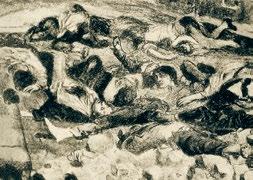





NextGenerationEU












































































































 WILLIAM EDWARD KILBURN
WILLIAM EDWARD KILBURN































































































































































































 CHARLES CLIFFORD
CHARLES CLIFFORD













































































































































































































































































































































































 MCPHERSON & OLIVER, WILLIAM D. MCPHERSON THE SCOURGED BACK , 1863
MCPHERSON & OLIVER, WILLIAM D. MCPHERSON THE SCOURGED BACK , 1863




















































































































































 JOHN K. HILLERS
JOHN K. HILLERS
































































































































































































































 PAUL STRAND
PAUL STRAND







































































































































































































































































































































































































































































































































































































































































































































































































































































 THIS BOOK WAS PRINTED IN MADRID IN DECEMBER 2022
THIS BOOK WAS PRINTED IN MADRID IN DECEMBER 2022





